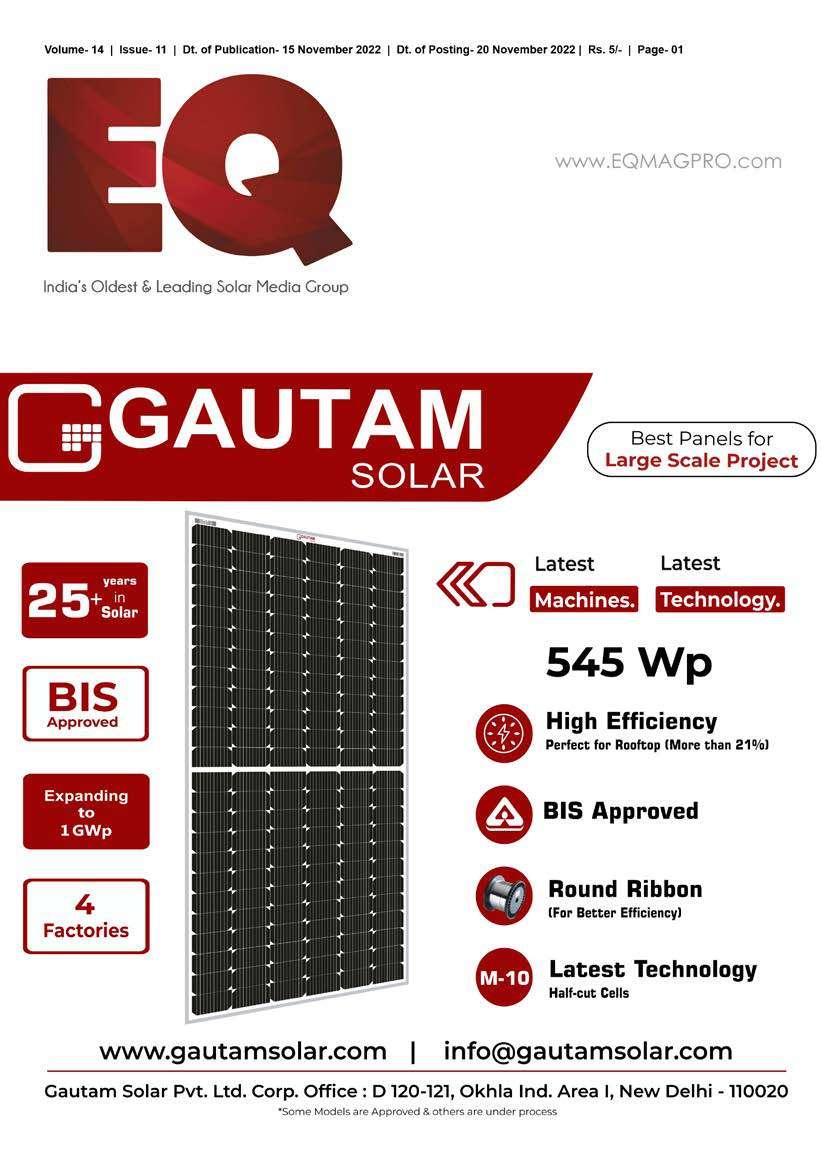



























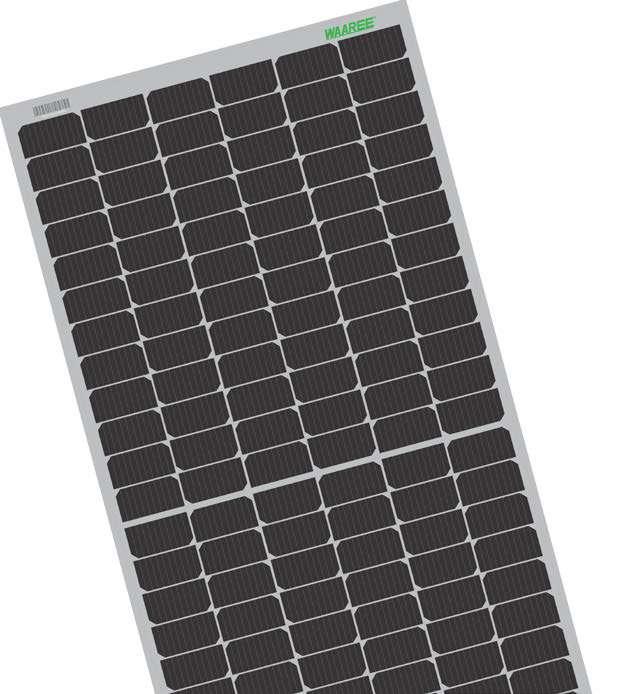


waaree@waaree.com www.waaree.com Unveiling Highest Reliability & Enhanced Crack Tolerance 12BB Solar Module Best in Class Thermal Coefficients Better Weak Light Performance Excellent PID Resistance Hall 02, Booth No. J101 Helipad Exhibition Centre Gandhinagar, Gujarat Visit us at 7-9 December 2022
 SALES & MARKETING MUKUL HARODE sales@EQmag.net
SALES & MARKETING MUKUL HARODE sales@EQmag.net
SUBSCRIPTIONS :
Disclaimer,Limitations of Liability

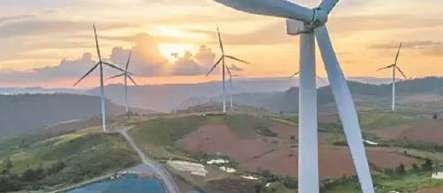


While every efforts has been made to ensure the high quality and accuracy of EQ international and all our authors research articles with the greatest of care and attention ,we make no warranty concerning its content,and the magazine is provided on an>> as is <<basis.EQ international contains advertising and third –party contents.EQ International is not liable for any thirdparty content or error,omission or inaccuracy in any advertising material ,nor is it responsible for the availability of external web sites or their contents

The data and information presented in this magazine is provided for informational purpose only.neither EQ INTERNATINAL ,Its affiliates,Information providers nor content providers shall have any liability for investment decisions based up on or the results obtained from the information provided. Nothing contained in this magazine should be construed as a recommendation to buy or sale any securities. The facts and opinions stated in this magazine do not constitute an offer on the part of EQ International for the sale or purchase of any securities, nor any such offer intended or implied
Restriction on use
The material in this magazine is protected by international copyright and trademark laws. You may not modify,copy,reproduce,republish,post,transmit,or distribute any part of the magazine in any way.you may only use material for your personall,NonCommercial use, provided you keep intact all copyright and other proprietary notices. want to use material for any non-personel,non commercial purpose,you need written permission from EQ International.
OWNER : FirstSource Energy India Private Limited PLACE OF PUBLICATION : 95-C, Sampat Farms, 7th Cross Road, Bicholi Mardana Distt-Indore 452016, Madhya Pradesh, INDIA Tel. + 91 96441 22268 www.EQMagPro.com EDITOR & CEO : ANAND GUPTA anand.gupta@EQmag.net PUBLISHER : ANAND GUPTA PRINTER : ANAND GUPTA TRENDS & ANALYSIS MOHAN GUPTA isearch@EQmag.net PUBLISHING COMPANY DIRECTORS: ANIL GUPTA ANITA GUPTA CONSULTING EDITOR : SURENDRA BAJPAI SR. GRAPHICS & LAYOUT DESIGNER : RATNESH JOSHI GRAPHICS DESIGNER : ABHISHEK SARAI
VOLUME 14 Issue 11 CONTENT 14 43 48 63 INTERNATIONAL
RISHABH CHOUHAN admin@eqmag.net
FEATURED INDIA RESEARCH & ANALYSIS BUSINESS & FINANCE LEADING CELL MANUFACTURER SOLARSPACE INAUGURATES 16GW TOPCON SOLAR CELL PLANT ADANI NEW INDUSTRIES SETS UP INDIA’S TALLEST WIND TURBINE IN GUJARAT SERVOTECH POWER SYSTEMS BAGS RS 46 CR ORDER FROM BPCL TO SUPPLY EV CHARGERS ICONIC WORLD HERITAGE GLACIERS TO DISAPPEAR BY 2050, WARNS UNESCO
HEAD
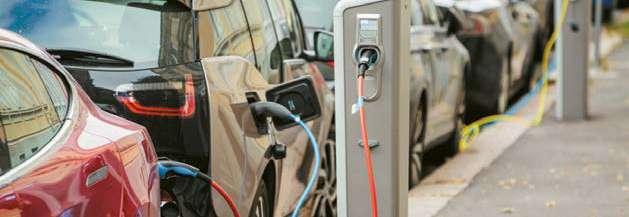

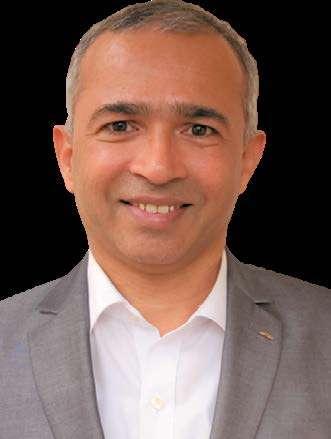


22 16 24 65 79 FEATURED INTERVIEW INTERVIEW ELECTRIC VEHICLE TECHNOLOGY Pg. 08-70 EQ News MR. ASHOK DM, CEO & MD EnerMAN Technologies SunSource Energy doubles its solar energy target to one gigawatt by 2027 MR. VINEET MITTAL, Director & Co-founder Navitas Solar GAUTAM SOLAR LAUNCHES G2X 450 WP M10 HIGH-EFFICIENCY MODULES TO REVOLUTIONIZE ROOFTOP SOLAR PROJECTS MAHINDRA TIES UP WITH THREE EV INFRA PLAYERS FOR CHARGING SOLU TIONS
Gautam Solar is a 25+ yrs. experienced Solar Module Manufacturer with 250 MW Solar Module manufacturing capacity, expanding to 1 GW. It manufactures ALMM & BIS approved Solar PV Modules that are deployed in Utility & Rooftop Solar Power plants. It has various IP’s (Patents/ Design Registrations) and a well-equipped R&D centre for continuous development of new products.

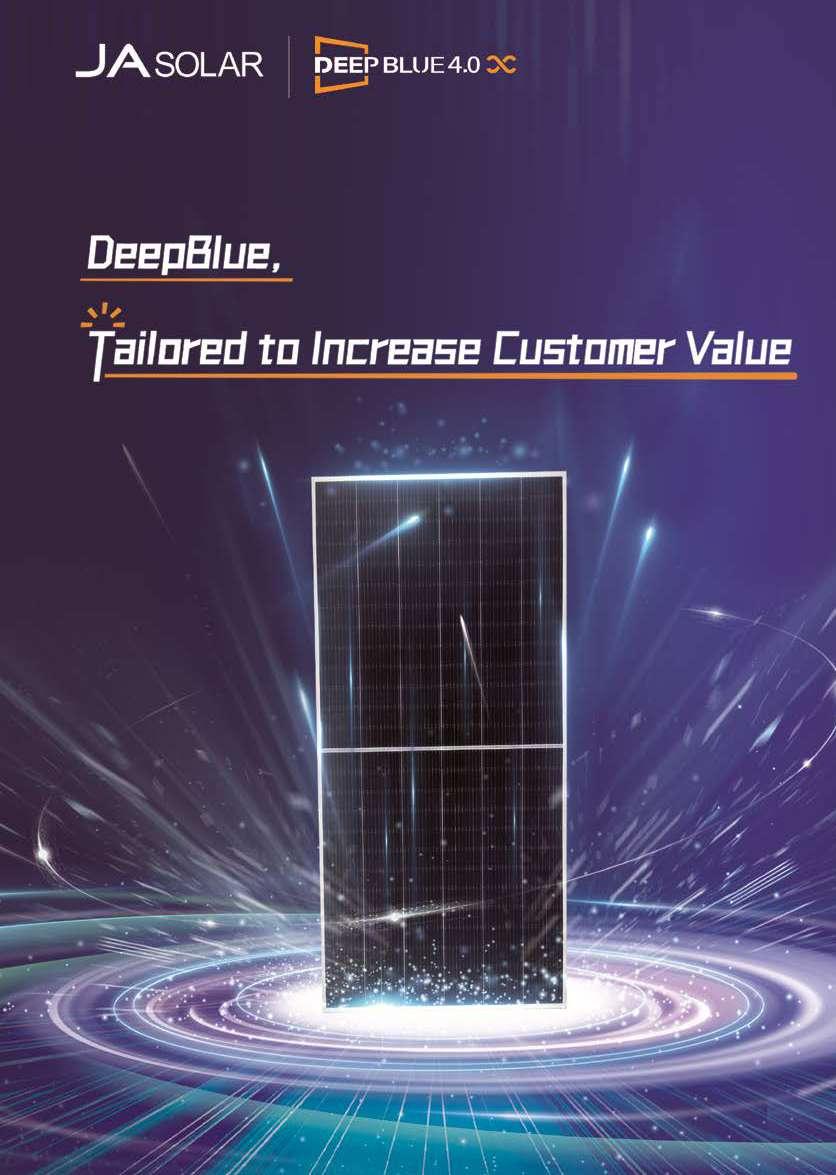










Tel.: +86 (10) 63611888 E-Mail: sales@jasolar.com marketing@jasolar.com www.jasolar.com





12 EQ NOVEMBER 2022 www.EQMagPro.com www.renewx.in SOLAR ENERGY | DECENTRALISED RENEWABLE ENERGY | GREEN HYDROGEN | E-MOBILITY & ENERGY STORAGE | BIO ENERGY HIGHLIGHTS CONFERENCE TRACKS WITH INDUSTRY EXPERTS PRODUCT SHOWCASE BY MARKET TRUSTED BRANDS CEO ROUNDTABLE WITH INDUSTRY INFLUENCERS COUNTRY PAVILIONS & AWARDS PROFILED BUYER’S FROM C&I SEGMENT GREEN HYDROGEN EV & INFRASTRUCTURE ZONE BIO ENERGY UNLOCKING THE ERA TO NET ZERO EMISSIONS… AMITAVA SARKAR M: +91 93792 29397 E: amitava.sarkar@informa.com JULIAN THOMAS M: +91 99404 59444 E: julian.thomas@informa.com IYER NARAYANAN M: +91 99673 53437 E: iyer.narayanan@informa.com FOR BOOKING, CONTACT SUPPORTING ASSOCIATIONS & PARTNERS NODAL AGENCY PARTNER STATE GOVT. OF TELANGANA



“ “
LEADING CELL MANUFACTURER SOLARSPACE INAUGURATES 16GW TOPCON SOLAR CELL PLANT
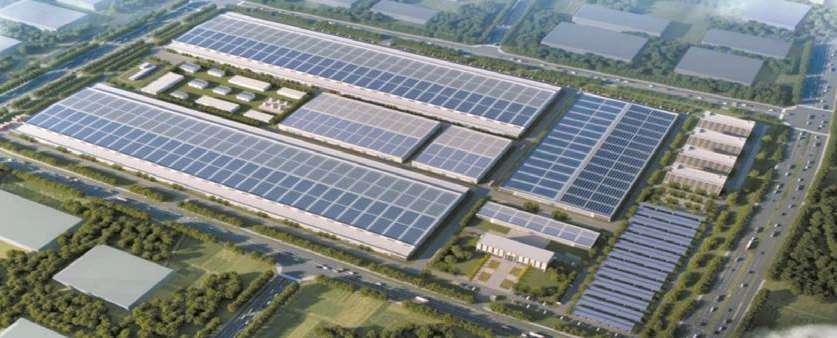
The project will produce 16GW of N-type cells in two phases. In the first phase, we plan to build 16 production lines, which will generate an annual production capacity of 8GW large-size TopCon cells. With the commencement of the new 16GW TOPCon cell plant, Solarspace will also introduce highly- efficient TOPCon solar modules in begin of 2023.
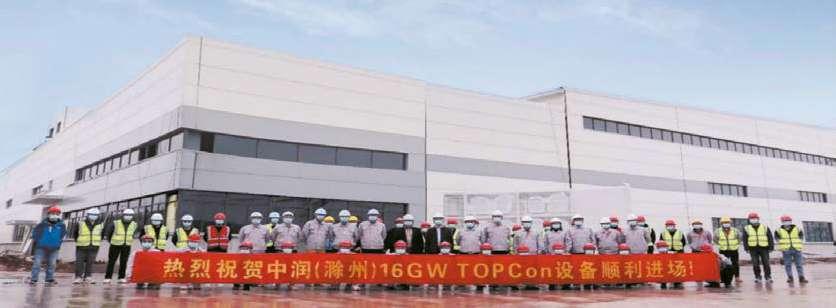
In the course of its commitment to build a sustainable low-carbon world, SolarSpace applied the highest standards to the construction of the new facility: The surrounding areas contain major green spaces and all buildings will be powered by solar modules manufactured by SolarSpace. Besides using the latest manufacturing equipment, SolarSpace maintains the strictest health and safety requirements at all its facilities.

14 EQ NOVEMBER 2022 www.EQMagPro.com FEATURED
On 20th Nov 2022, SolarSpace’s Chuzhou (Anhui province, China) Base embarked on the first phase of the 16GW TOPCon Solar Cell Project and commence the entry of production equipment. It marks a milestone for SolarSpace in its advancement towards highefficiency N-type technology, maintaining its position as a market leader in high-efficiency technology and lean manufacturing.

SunSource Energy doubles its solar energy target to one gigawatt by 2027


SunSource Energy, the Indian subsidiary of SHV Energy, announced that it will double its solar energy deployment target. The target will increase from 550 megawatts to one gigawatt by 2027.
The increased solar energy capacity will help to support a growing customer base across India that wishes to make the transition to cleaner, more sustainable power. To support the significant delivery scale-up, the India leadership team is also being expanded.
expansion, the company’s existing Managing Director, Kushagra Nandan, will take on the role of Chief Executive Officer, and Adarsh Das has been appointed Chief Commercial Officer to support the accelerated growth trajectory. Sytze Nijman will move from Netherlands-based SHV Energy to take on the role of Chief Operating Officer, and Pratik Adhikari has joined the company from professional services firm Alvarez & Marsal and will assume the role of Chief Financial Officer.



The current SunSource senior leadership team will continue to play a pivotal and active role over the long term in realising the company’s extended targets.
This investment to significantly bolster our solar energy delivery capacity reiterates SHV Energy’s commitment to India and to our solar subsidiary, SunSource Energy. Together with the expansion of our local management team, we will now be better equipped to address the evolving energy transition needs of commercial and industrial consumers in India and Southeast Asia,”said Bram Gräber, CEO of SHV Energy.
India-based SunSource Energy, a leading provider of distributed energy, will be100% owned by SHV Energy. As part of its leadership team
The demand for solar energy from commercial and industrial customers in India is growing rapidly and we are pleased to be able to help meet that need,” said Kushagra Nandan, Managing Director and CEO of SunSource Energy. “This expansion also enables us to continue to benefit from the global SHV Energy network and its vast expertise and resources.

16 EQ NOVEMBER 2022 www.EQMagPro.com FEATURED
SEMBCORP TO ACQUIRE VECTOR GREEN, ADDING 583MW OF RENEWABLE ASSETS IN INDIA

Completion of acquisition will bring the Group’ s gross renewable energy capacity to 8.5GW[1], closer to its 2025 target of 10GW of gross installed renewable capacity Sembcorp’s gross renewable energy portfolio installed and under development in India will grow to 3GW


Sembcorp Industries (Sembcorp) announces that its wholly-owned subsidiary, Sembcorp Green Infra Limited, has signed an agreement with India Infrastructure Fund II, a fund managed by Global Infrastructure Partners India Pvt Ltd, to acquire 100% interest in Vector Green Energy Private Limited (Vector Green) for a base equity consideration[2] of approximately INR27.8 billion (approximately S$474 million[3]). Vector Green is an Independent Power Producer with renewable power generation assets spread across 13 Indian states. The portfolio includes 495MW of solar capacity and 24MW of wind capacity in operation, with 64MW of solar projects under development. Including Vector Green, Sembcorp’s gross renewables portfolio installed and under development in India will total 3GW, comprising 1GW of solar assets and 2GW of wind assets.
transformation strategy. With the completion of this acquisition, Sembcorp’s gross renewable energy capacity will increase to 8.5GW[4], pushing us closer towards our 2025 target of 10GW.”
Vipul Tuli, CEO of South Asia, Sembcorp Industries added: “This acquisition brings significant utility-scale solar capacity to our India business, which will complement our existing wind portfolio. It also broadens and deepens our renewable energy capabilities and presence across states in India, and positions us well for further green growth in the country.”

Wong Kim Yin, Group President & CEO, Sembcorp Industries, said: “Sembcorp remains committed to growing its renewables portfolio in India, one of the fastest growing renewables markets in the world. This acquisition is aligned with the Group’s brown` to green
The acquisition will be funded through internal cash resources and external borrowings. Completion of the acquisition is subject to customary closing conditions and is expected by the first quarter of 2023. The acquisition is expected to be accretive to earnings upon completion. This acquisition is in the ordinary course of business of Sembcorp Industries and is not expected to have a material impact on the earnings per share and net asset value per share of Sembcorp Industries for the financial year ending December 31, 2022.

www.EQMagPro.com FEATURED
TOWARD A SUSTAINABLE, INCLUSIVE, GROWING FUTURE: THE ROLE OF BUSINESS
To make the world as sustainable and inclusive as we hope, a certain kind of economic growth will be necessary—and companies will play a vital role in generating it.

How should the world confront its most pressing environmental and social challenges? An answer lies in sustainable, inclusive growth—that is, economic growth that provides the financial resources needed to contain climate change, promote natural capital and biodiversity, empower households, and promote equitable opportunity. Any effort to usher in such growth will need many stakeholders, but businesses, which drive more than 70 percent of global GDP, will be a key player. The challenges to sustainability and inclusion are large and urgent. On the sustainability side, energy efficiency is reducing emissions of CO2 and other

greenhouse gases in some countries, but worldwide emissions continue to rise, accelerating climate change and its attendant physical risks. The world is therefore on track to exhaust its “carbon budget,” the amount of greenhouse gases it can emit without triggering dangerous levels of warming, by 2030. As for inclusion, though in some ways the world has become more inclusive over the past few decades, billions of people still live in countries that could do far better on such measures as life expectancy, child mortality, and gender parity in labor force participation. The current decade will determine whether we opt for sustainable, inclusive growth or for dangerous warming and large segments of society left behind. In this research, which was presented at the 2022 B20 summit in
Indonesia, we use two measures to quantify what the world needs within this decade to become as inclusive and sustainable as we hope (Exhibit 1). The empowerment gap is the spending capability that all households in a given country would require in order to meet basic needs, have discretionary income, and be able to weather emergencies—in effect, to join the middle class. The sustainability gap is the amount of additional annual investment in low-emissions technologies that a country would need to make in order to move the world to a pathway resulting in net-zero emissions by 2050. The size of the gaps varies from country to country, but they are enormous everywhere
www.EQMagPro.com FEATURED
To fill those gaps, the world must experience solid and sustained economic growth. Growth is necessary because it creates income for people—who must either spend the income, save it, or invest it. Some of the income that is consumed will raise households to empowered levels of spending, and some that is saved or invested will help build the infrastructure needed for the net-zero transition.
But growth on its own will not be enough. For example, assume that in the United States, the economy grows for the rest of this decade at a baseline rate of 2.1 percent per year, and the current pattern of resource allocation does not change. (We make that conservative assumption so that we can illustrate the shifts needed from today, even though reallocations are already under way on the sustainability front.) In that case, only 36 percent of the country’s empowerment gap and 7 percent of its sustainability gap will be filled by 2030. The numbers vary among the countries and regions that we studied, but baseline growth would fill more than half of the empowerment gap in only two—India and China—and more than half of the sustainability gap in none. Two remaining ingredients are necessary to fill the gaps entirely (Exhibit 3).
One is government intervention, which can steer incentives and public resources to sustainability and inclusion. The other is business-led innovation. Such innovation can accelerate growth beyond our baseline, leading to still more spending, saving, and investing. It can make inclusion and sustainability more “affordable” by reducing the cost of products and services that further those goals.



FEATURED
Continue....
On sustainability, for example, as the unit costs of low-emissions alternatives (such as electric vehicles, renewable energy, and heat pumps) come down, they will attract more private capital, reducing the total investment need. And when innovation makes low-emissions technology cheaper, it can help close the sustainability gap further by shifting consumers’ preferences toward that technology.

Such advances can also affect inclusion if they reduce any medium-term rise in costs associated with the large transition outlays needed. When accompanied by strategies and public policy that enable education, training, childcare, healthcare, and inclusive hiring, business-led innovation can also help close the empowerment gap by boosting workers’ incomes.

20 EQ NOVEMBER 2022 www.EQMagPro.com
FEATURED
Business-led innovation is a major reason that companies will be crucial in any successful undertaking for sustainable, inclusive growth. Another reason is that companies are sometimes linked to existing challenges; for example, the share of their income that goes to their workers has fallen over the last two decades. The problem is that it is difficult for an individual company to resist market incentives. Take the case of a company that emits large quantities of CO2. If reducing those emissions would put it at a disadvantage with its competitors, it has little financial reason to proceed.
In this discussion paper, we provide a framework for businesses to help them start determining which challenges they can tackle while realizing the financial returns that attract capital. Two main approaches are possible: acting through existing market opportunities and helping shape new ones. Within each approach are two subcategories, so that companies can choose among four distinct paths that require progressively more collaboration: acting independently, collaborating with each other to shape industry standards, partnering with governments to execute specific projects or programs, and working with governments to craft the markets of the future.
Companies that are trying to sort potential projects into that framework could usefully ask three questions about each:




How great are the societal returns, and how long will it take to realize them? Projects that yield extremely high societal returns over long periods may be good candidates for collaborations and partnerships rather than individual action.

What degree of orchestration is needed? If a great deal is necessary—because complementary capabilities among

companies, government, and the social sector are needed, and because the beneficiaries are dispersed—that is another sign that a project is ripe for collaboration.


Where can public and philanthropic capital catalyze larger flows of private financing? There is no shortage of such financing, so the answer could well determine where trillions of dollars flow.
The need for a more sustainable, inclusive, and growing world is pressing. So is the need to prioritize the tasks that would bring about such a world. We hope that this research and framework will help companies do the important work of setting priorities and convening the right partnerships so that they can move swiftly from aspiration to action.
Source: mckinsey
FEATURED
MR. ASHOK DM
CEO & MD, EnerMAN Technologies

EQ: Could you please tell us about the company?
AD: EnerMAN Technologies is founded in 2019, with the vision to Provide innovative digital products to manage energy and decarbonise the world. EnerMAN provides IoT based AI & ML driven, Energy Management products and solutions at affordable price to Renewable Energy Industry. EnerMAN’s IoT based platform which can be easily interfaced with energy generation & consumption equipment to get real time data that can be further analysed for performance improvement & predictive maintenance. EnerMAN’s ETi series products help you acquire data from the equipment/sensor in the solar ¬PV plants / rooftops, process and store the data in the cloud/local server and present you with user friendly dashboards to monitor, control and analyse the performance.
EQ: What have been some key business highlights for EnerMAN Technologies in the past years?
AD: EnerMAN has successfully deployed IoT SCADA ETi-SOL® in the countries like South Africa, Nepal, Dubai, Rwanda, Sri Lanka, and Poland apart from India. and planning to deploy ETi-SOL® -Remote Monitoring SCADA solution for other countries. Currently our SCADA installation portfolio surpassed a remarkable milestone of 1.4 GW (1,400 MW) across the world. We have also installed our IoT SCADA product in some of the prestigious Govt organizations like BHEL, BEL, NTPC, HAL, MES, NFC, AIIMS & IISc. We are glad to share that our PPC solution has implemented to 350MW single largest plant in Kurnool, and it has also proven and tested for 26MW of Solar-Wind hybrid power plants in Karnataka.
EQ: Please tell us how important is real time remote monitoring of solar plants?
AD: The performance of Solar Power Plants needs to be monitored on real time to ensure the maximum yield of Solar PV Plant and notify the breakdown of equipment immediately for technicians attend the breakdowns to reduce loss of generation. To ensure that all the equipment at Solar Plant is performing as per the design, to get energy generation as expected to achieve desired ROI. Real time Remote Monitoring is essential to maximise the plant performance, which provides equipment ranking, performance reports and guidelines to onsite O&M team to schedule maintenance activities, spare parts management, and module cleaning activities.
EQ: How important is IoT as a technology in the solar industry? Could you explain your IoT-based monitoring solutions offerings in brief?
AD: IoT technologies helps in digitizing Solar PV plants (Digital Twin) and get real time data to cloud platforms or Servers at HQ. The expert team at HQ can analyse the Solar plant and equipment performance data and come up with guidelines to improve the plant performance, reduce the breakdowns, spare management, Energy scheduling and inputs to new plant design for optimal performance of Solar PV plants. We provide all types of products and solutions to Solar PV plants/rooftops for

22 EQ NOVEMBER 2022 www.EQMagPro.com INTERVEIW
Performance Monitoring, Controlling, Analysis and Reporting at an affordable price using in-house developed Hardware, Firmware and Software. Our Software product is hardware agnostic; it can work with 3rd party Data logger. ETi-SOL®: is a cloud-based software product which collects data from the field IoT devices for Monitoring, Controlling, Analysis and Reporting of Solar PV plants / rooftops. ETiSOL® is an end-to-end solution, made in India product to cater to global market at an affordable price since it uses inhouse developed Hardware, Firmware and Software. IT is also Centralized monitoring platform -Integrate multiple SCADA into single dashboard. User can monitor threough mobil app, both, Android and iOS are now available. ETiSOL® Edge: is a software product which can be installed in Local PCs/Servers at PV plants/Rooftops and can collect data from the data loggers connected to the PV Plant equipment to Monitor, Control, Analyse and Report the Solar PV plant’s performance.
ETi-PPC (Plant Power Controller): Software logic-based control system can be installed in local server to control active power, reactive power, and power factor of Inverters of Solar & Hybrid (Solar-Wind power Plants) as per as per Govt. regulatory guidelines. Some of the ETi-PPC features are:

1. Interactive dashboard for Solar Monitoring/Control
2. Automatic/Manual Control Operations.
3. Operations Scheduling.
4. Active Power/Reactive Power/Power factor Control.
ETi-LOG: is an IIoT Data logger, which collects the data through RS 485 (RTU/TCP) from PV plants' end equipment and sends data to Local PC/Servers or to the cloud Servers through RS485 (RTU/TCP) or RF or Wi-Fi. We will ensure that there is no data loss through local storage in our ETi-LOG IoT datalogger during any communication issues at the plant.
EQ: What are some of the recent technology advancements EnerMAN Technologies have made?

AD: We have developed a software product, ETi-SLDC, which can be installed in local PCs/Servers to collect data from the Solar PV plant’s equipment and can send important processed clean data to SLDC in a few seconds as per SLDC guidelines. We have developed another software product, ETi-ZES, which will ensure Zero Export from Solar PV plants / Rooftops to Grid, as per DISCOM policy guidelines, to avoid penalty. This product collects the data from Solar PV plants' end-equipment and controls/limits the outgoing power of Solar Inverters based on its load/consumption. We have developed yet another software product ETi-LMS: Load Management System: An IoT Solution for DG-Sync which is a universal Solution for all Inverter brands (Supports Heterogenous Make) Controls Active Power of Inverter’s.
EQ: What are your business development and growth plans for 2022?
AD: We are planning to expand our products entry to more countries in Asia Pacific, Africa and Middle East, and increase our product deployment by 100% in 2023. EnerMAN has proven track record in providing solution for Remote Monitoring, Local Monitoring, and Integration with third party Scada using REST APIs or FTP server or OPC interface.
INTERVEIW
MR. VINEET MITTAL Director & Co-founder, Navitas Solar

EQ: Please describe in brief about your company, directors, vision and mission.

VM: Navitas Green Solutions Pvt. Ltd.(Navitas Solar) strives to provide one of the best solutions for sustainable solar lectric power with one of the most advanced production lines in India. With total installed capacity of 500 MW p.a. for solar module production, Navitas Solar stands among the largest solar module manufacturers in India. This translates into high quality, reliability and longevity of the solar modules produced. We are four directors Sunay Shah, Ankit Singhania, Aditya Singhania and myself.
This is a company with a young team having all the well-educated promoters and that helps a lot for understanding the market quickly and adapting the new changes much faster. Our vision is to Emerge as India’s Most Trusted Solar Company by 2025. Our mission is to collaborate with the world’s best solar companies to develop and deliver the most reliable and efficient solar products & services, and to bring awareness & collaborate with likeminded institutes & individuals to stride towards a sustainable future.
24 EQ NOVEMBER 2022 www.EQMagPro.com INTERVEIW
EQ: Please tell us about how you manage to shine out from your competitors in the industry.
VM: Navitas Solar is among the few solar manufacturing companies in the country to have backward and forward integration, distinguishing usfrom our competitors. Backward integration is provided by our subsidiary company, Navitas Alpha Renewables Pvt. Ltd. (NARPL), which manufactures EVA Sheets. In this way, we manufacture our own raw material that no one does so that we have full control on the value chain. In addition, we have fully automatic setup in manufacturing. In addition, we have in-house labs and we are hugely benefited from it. We are in this business since last 10 years, so we have been here for long term. All the listed points makes us different from our other competitors.
EQ: Please name key achievements of Navitas solar for the year 2022?
VM: The year 2022 has been fantastic for us. In this year, we have made some big achievements and we are very humbled to list up all of them. We have expanded our solar module manufacturing capacity to 500 MW p.a. and we have launched Bonito Module seriesMono PERC half cut modules that can generate up to 600 watts per panel. Navitas Group has clocked 200 cr of revenue this year and we aim to clock 250 Cr in FY 23. We have raised 8 Cr in Navitas Alpha Renewables Pvt. Ltd.(NARPL) in seed funding round and we are close to raise series A round funding at Navitas Solar from senior investors. In addition, we have launched “Fintech for Cleantech” for end user financing of small-scale rooftop solar installations.
EQ: How are you looking forward in the New Year 2023?
VM: New Year will bring new opportunities for us. We want to grow residential rooftop solar’s adoption in the country as Residential sector has a huge potential to grow in future. Therefore, accelerating residential solar financing model will be our priority. In addition, we are lining up project of installing open access solar parks. Carbon market, agrivoltaics are some of the potential areas in solar sector and we look forward to deep dive into these areas. We intend to move our focus to large-scale supply, residential solar financing, solar parks and industrial EPC with up to 10 MW of single projects
EQ: Would you like to name few trending solar applications?

VM: Actually there are many but according to me, carport with bifacial panels, agrivoltaics, floating solar, wind-solar hybrid and solar with storage applications are trending nowadays. Although, some of them are in early stage but they will evolve largely in future.
EQ: What is your expectation from COP 27 and how do you foresee its impact on clean tech businesses?
VM: Actually, I have visited COP27 this time. It was very first experience for me and it has been amazing. I have interacted with many people who are doing great in accelerating sustainability and make world a better place to live in! I have attended events at COP 27 and believe me, the experience is just fantastic. People are much more aware about mindful consumption. The event will surely accelerate renewable energy’s penetration in India.
EQ: What are your thoughts on carbon neutrality?
VM: Nowadays, corporate sustainability is not a mere point of talk but it has converted into actions. Stakeholders and investors want to know how the organization is affecting the environment and that is why the awareness amongst the corporates has also increased with the time. We are extremely delighted to announce that Navitas Solar has become a Carbon Neutral organization. We have achieved a “Silver” level for 2021 from the United Nations Framework Convention on Climate Change (UNFCCC) on climate reporting under the ‘Climate Neutral Now’ initiative. With this step, we urge industry colleagues to minimize their emissions and work towards achieving carbon neutrality.
EQ: What kind of Pricing and Technology Roadmap do you see coming through in the Industry?
VM: We see that many consumers are adopting MBB (Multi BusBars) modules and the demand of MBB modules is increasing day by day. Looking at the overall picture, we see that bifacial modules will also be among the choice of the consumers in future.

EQ: Kindly highlight your product technology and company USPs, distinctive advantages.
VM: Our USP is a young team who can adapt the changes in technology quickly. We are focusing on new technology while improving the product continuously. Our new lines are at par with the best technology, which will be able to provide world-class multi bus bar panels. We are backed with a very strong in house QA and QC lab. We also have technically sound QA & QC team as well as R&D team that are continuously dedicated towards improving the quality.
EQ: Kindly enlighten our reader on the performance of your modules in India in various geographical region's customers' feedback.
VM: Until now, in the Indian module market we have not received any recall of our modules. Our modules are giving excellent output since last 9 years. Even after 2015, our modules are giving supreme performance than other competitors. Our modules are ideal for large scale and rooftop installations as they provide optimum generation and efficiency. We are supplying all over India successfully because of our good service and installation. All the customers from pan India are satisfied with our service. We believe to provide the best quality modules, as we truly believe, “Quality is remembered long after the price is forgotten”
www.EQMagPro.com 25 EQ NOVEMBER 2022 INTERVEIW
NET-ZERO TRANSITION POTENTIALLY A $3.5 TRILLION INVESTMENT OPPORTUNITY FOR INDONESIA

Accelerated deployment of renewables within this decade combined with post-2030 deployments of nuclear and carbon capture and storage can enable Indonesia to achieve net-zero emissions by 2050
The global net zero transition can represent a $3.5 trillion investment opportunity for Indonesia, according to a new report published at the BNEF Summit Bali by research company BloombergNEF (BNEF) entitled Net-Zero Transition: Opportunities for Indonesia. Based on BNEF’s New Energy Outlook, its annual longterm scenario analysis on the future of the energy economy, the report examines how Indonesia’s energy supply may evolve under BNEF’s Economic Transition Scenario (ETS) as well as a Net Zero Scenario (NZS) compliant with the goals of the Paris Agreement. Both scenarios expect that growth in electricity demand can primarily be met by deployment of renewables such as solar, thanks to their falling costs. Under the ETS, Indonesia’s electricity demand is set to triple by 2050 to reach 919 terawatt-hours compared with 306 terawatt-hours in 2021. Today, coal-fired plants meet more than 60% of Indonesia’s power demand. Under the ETS, coal’s share rises to a peak of 74% by 2027 and then declines to 24% in 2050. By then, the combined share of renewables in electricity supply reaches 74%.
Under the NZS, Indonesia’s electricity demand is set to grow fivefold by 2050, as electricity accounts for a greater proportion of final energy demand, for example by replacing oil as road transport fuel. The NZS forecasts that 75% of electricity supply by mid-century would come from renewable energy, with the remainder supplied by coal power plants equipped with carbon capture and storage (17%) as well as supply from nuclear (7%).



Caroline Chua, BNEF’s Southeast Asia clean power lead analyst, said: “Under the Net Zero Scenario, as demand for Indonesia’s coal exports decline by more than 60%, domestic coal power plants equipped with carbon capture and storage could provide a just transition pathway for the country’s coal industry. On the other hand, Indonesia also needs to consider measures to accelerate the growth of renewables within this decade.”

The global net-zero transition also represents new export opportunities for Indonesia, as lithium-ion battery demand for electric vehicles is set to rise to more than 2 terawatt-hours annually by the latter half of this decade. Thanks to its wealth of nickel resources, Indonesia has already attracted plans for 25 gigawatt-hours of battery manufacturing capacity.

Allen Tom Abraham, BNEF’s Asia-Pacific lead transport analyst, said: “As the country with the world’s largest nickel reserves, Indonesia has significant opportunity to scale up lithium-ion battery manufacturing capacity. To do so, it will need to improve the environmental performance of its mining sector as well as increase domestic battery demand by accelerating the electrification of mobility.”
To finance the energy transition, Indonesia will need just under $2 trillion of investment in BNEF’s ETS and as much as $3.5 trillion under the NZS.
26 EQ NOVEMBER 2022 www.EQMagPro.com
FEATURED

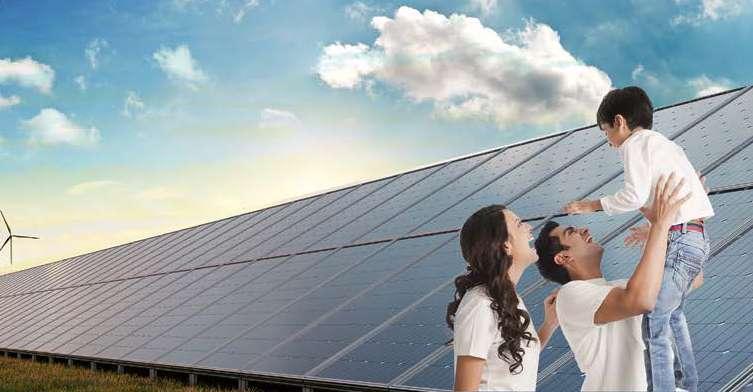

CHINA’S BATTERY SUPPLY CHAIN TOPS




BNEF RANKING FOR THIRD CONSECUTIVE TIME, WITH CANADA A CLOSE SECOND
Canada’s recent investment in its upstream clean energy supply and increasing demand in the US-Mexico-Canada Agreement (USMCA) region increases the country’s competitiveness
China continues to dominate BloombergNEF’s (BNEF) global lithium-ion battery supply chain ranking, for the third time in a row, for both 2022 and its projection for 2027, thanks to continued support for the electric vehicle demand and raw materials investments. China currently hosts 75% of all battery cell manufacturing capacity and 90% of anode and electrolyte production. The increasing prices of lithium has also led to higher investments in carbonate and hydroxide refinery facilities in the country, making it the leading refiner of battery metals globally. Despite this growth, other countries are enforcing policies to create battery demand and secure raw materials needed to support their transition to electric vehicles.
Published at the BNEF Summit Bali, the ranking sees Canada rise to the second spot this year, which reflects its large raw material resources and mining activity, as well as its good positioning in environmental, social and governance factors (ESG) and infrastructure, innovation, and industry. A lack of significant cell and component manufacturing capacity means that most of the value of these resources is realized outside of the country, although recent announcements from the likes of BASF, General Motors and Posco show an increase in battery investments.
Allan Ray Restauro, metals and mining analyst at BNEF and lead author of the report said: “This year, the changes in the overall rankings were mostly driven by the greater access to several key raw materials and manufacturing capacities domestically. Countries that are not necessarily the largest producers or manufacturers but have significant presence across several areas in battery metals and minerals extraction, as well as manufacturing, fared better than countries that excel mostly in a single commodity or component. Success in the battery supply chain is increasingly determined by more than one category or metric. A solid foundation on domestically realized resource wealth, bolstered by responsible and ethical production, is the main theme of the rankings this year as countries and the industry strive for a sustainable supply chain.”
The US dropped to third in the rankings despite the strong growth in battery demand due to the Inflation Reduction Act. The US placed in the top 10 for all categories except for ESG, where it ranked 16th. Strong battery demand for stationary storage and rapidly accelerating passenger vehicle sales (rising from 5% in 2022 to 34% by 2027) ensure that it places high on the leaderboard. Despite the US recording the biggest improvement among all countries in raw materials for 2022, it will still be reliant on raw material imports for batteries, especially from its free-trade partners, such as Australia.
28 EQ NOVEMBER 2022 www.EQMagPro.com FEATURED
Yayoi Sekine, head of energy storage at BNEF, said: “The Inflation Reduction Act is a major upside for battery demand in the US but, more importantly, it will change the supply landscape in the coming years. The law is the closest thing to industrial policy for batteries that the US has ever had and makes this the most exciting decade yet for the American battery industry. Companies are looking to maximize battery cell, module and material production incentives and comply with electric-vehicle credit requirements, which will bring more capacity to the country and its allies.”

Most European countries declined in their overall performance this year with Finland and Czechia being the only exceptions. Finland placed the highest in Europe and was ranked fourth in the overall rankings. The country’s growing battery metals supply chain, relatively clean grid and quality infrastructure favorably positions it among top lithium-ion battery countries. Germany and Sweden’s lack of domestic raw materials led to a drop in their rankings in 2022. Despite the continent’s low raw materials scores, its battery manufacturing is growing. Germany and Hungary will increase their battery manufacturing capability to match Poland, as cell and component plants come online in coming years.
China, South Korea and Japan were the top three countries across all battery manufacturing metrics. They have historically had the most established manufacturing bases, with supportive industrial policies. US cell production capacity surpassed Japan in 2014 and South Korea in 2016. Most operational multi-gigawatt-hour cell manufacturing facilities in the world are owned by a Chinese, Japanese or Korean company (Tesla’s Nevada Gigafactory was jointly developed with Panasonic). In 2022, South Korea and Japan each announced domestic and overseas expansions of cell production capacity as well as supply chain strategies to secure key materials.

In BNEF’s 2027 rankings, countries in South America see the biggest declines, notably Brazil and Bolivia. Brazil remains a strong contender given its raw materials strength but dropped to 21st in the 2022 rankings due to poor performance in ESG. Bolivia was at the bottom of the rankings this year. It only performed well in 2021 in raw materials due to its massive lithium reserves.
Ellie Gomes-Callus, metals and mining analyst at BNEF said: “Many European countries are successfully capitalizing on their supply chain potential but the trend of decline in the region this year indicates that growth in Europe is starting to be outpaced by North American and Asian countries. European countries such as Czechia, Hungary and Poland, continue to have advantages in their ability to provide cleaner and more sustainable supply chains. This will reinforce their growth ambitions and further their case as preferred destinations for investments in batteries manufacturing.”

Most resource-rich countries rank low in the overall score as they generally lack a domestic battery manufacturing capabilities and electric vehicle demand. Countries such as Indonesia, Chile, South Africa and the Democratic Republic of Congo are looking to reverse this trend by using their raw materials competitiveness as an advantage to attract downstream investment across the supply chain. Policy incentives to drive EV adoption, clean energy supply as well as industrial infrastructure will help these resource-rich countries to attract the downstream investment needed to build domestic lithium-ion battery supply chains.
In the report, BNEF ranks 30 leading countries across the lithium-ion battery supply chain based on 45 metrics across five key themes: availability and supply of key raw materials; manufacturing of battery cells and components; local demand for electric vehicles and energy storage; infrastructure, innovation, and industry as well as ESG considerations. The report includes a current ranking for 2022 as well as a forward-looking one to 2027.



www.EQMagPro.com 29 EQ NOVEMBER 2022
FEATURED
INDIA’S 1ST ONLINEBIO-FUEL MARKETPLACE, BUYOFUEL RAISES 11.5 CR IN A PRE-SERIES A ROUND
LED

BY INFLECTION POINT VENTURES


Online alternate fuel marketplace Buyofuel has raised over Rs 11.5 Cr in a PreSeries A round led by Inflection Point Ventures (IPV). The round also saw participation from Venture Catalysts, LetsVenture, Lead Angels Fund, and GruhasProptech. The funds raised will be utilised towards expanding the services across geographies, development of product offerings as well as technology. The startup has the largest supply base of quality assured-biofuels and fuel consumers, offering economic prices for wastes and biofuels. Buyer-base with buy capacity of more than 6,00,000 metric tonnes/month and Seller-base with sell capacity of more than 2,00,000 metric tonnes/month. For sellers, registering with the platform is a seamless experience as all the customers who visit the platform are 100% verified. The team at Buyofuel ensures 100% transparency with the customers, updating them with real time progress throughout the order execution. The consignment is tracked from loading to unloading point to ensure timely delivery.
Buyofuel is the only online marketplace for all types of quality assured biofuels and wastes with a complete digitized interface. The Company has emerged with the largest seller and buyer base in the alternate fuel category. It is helping non-renewable fuel consumers to switch to low or zero emission fuel options and helping them to cut their carbon emissions by moving to biofuels. Buyofuel currently has over 1600 verified registered users, with a supply of biodiesel, solid biofuels and organic waste on a per-day basis. Their clients include large, reputed companies like Aditya Birla, JSW, TVS Tyres, Ramco Cements, Dalmia cements, Thermax and many others are registered users of Buyofuel. The company has recorded a monthly revenue of over Rs 2 Cr.
Ankur Mittal, Co-founder & COO, Inflection Point Ventures says, “Biofuels are a powerful alternative fuel substitute for most of the mainstream fossil fuel options whether diesel, petrol or even CNG. Buyofuel has an ambition to scale its business and make the adoption of clean fuel options seamless and more efficient. At IPV, we are keenly watching the ESG and Cleantech segment and have made
across different business models. We back the vision of
want to help them scale up faster.”
Kishan Karunakaran, Founder and CEO, Buyofuelsays, “Buyofuel looks to mainstream biofuels as a major fuel in India’s energy mix by ensuring that biofuels contribute to more than 10% of India’s fuel consumption, Buyofuel’s journey for a green India has been tremendously supported by IPV. IPV has continuously engaged with Buyofuel on a regular basis and has played a big part in the growth of Buyofuel. We are glad that Buyofuel got to benefit from the tremendous experience that IPV team brings with it.”

Buyofuel functions in the large energy & fuels market of India. India is currently the 3rd largest consumer of energy in the world, importing more than 80% of its fuel requirements while generating more than 350mn MT of organic wastes within India. Buyofuel aims to make India energysecure and meet its emission goals by substituting fossil fuel consumption with biofuels manufactured within India, from wastes generated within India. Biofuels is a $110 Bn market globally today with the Indian biofuels market being about $10 Bn currently, Indian Biofuels market is growing rapidly and likely to be a $50 Bn market over the next few years.

30 EQ NOVEMBER 2022 www.EQMagPro.com
Buyofuel is an online marketplace for all types of biofuels and wastes which completely digitizes buying and selling biofuels and wastes.
Buyofuel was selected as ‘Top 10 Startups of Tamil Nadu’ by Startup TN, Tamil Nadu Government in 2021
IPV has so far invested over Rs. 550 Cr across 140+ deals
bets
Buyofuel founders and
FEATURED
ZERO-EMISSION VEHICLE ADOPTION IS ACCELERATING, BUT STRONGER PUSH IS NEEDED TO STAY ON TRACK
FOR NET ZERO


Actions from policymakers, manufacturers and consumers are already having an impact, avoiding almost 1.7 million barrels of oil per day in 2022
Adoption of zero-emission vehicles accelerated in the past year across almost all markets and vehicle segments, according to the 2022 Zero-Emission Vehicles Factbook published by research company BloombergNEF (BNEF) at COP27 in Egypt. The ZEV Factbook finds that global momentum toward zero-emission road transport has
continued to accelerate in 2022, with passenger electric vehicle sales on track for more than 10 million units, up from 6.6 million in 2021. Over 13% of new car sales globally in the first half of 2022 were electric, rising from 8.7% for all of 2021. Global lithium-ion battery manufacturing capacity also increased 38% since 2021 and overall spending on clean road transport worldwide is set to exceed $450 billion this year.
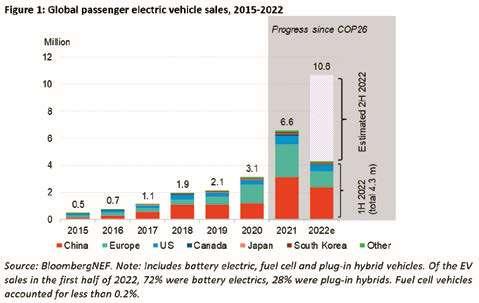
The ZEV Factbook has been produced by BNEF in cooperation with the Accelerating to Zero Coalition and in partnership with Bloomberg Philanthropies, to coincide with COP27 – the 2022 United Nations Climate Change Conference. The first ZeroEmission Vehicles Factbook was released at COP26 in Glasgow and the updated 2022 publication tracks the progress that has been made toward achieving global net-zero emission in the road transport sector.
The adoption of zero-emission vehicles has already reduced oil consumption and carbon dioxide emissions. Electric vehicles of all types – including cars, buses, motorcycles, scooters, vans and trucks – are expected to avoid almost 1.7 million barrels of oil use per day in 2022, up from 1.5 million barrels per day in 2021. These vehicles are currently eliminating 152 million metric tons of CO2 per year, with the biggest contribution coming from the large fleet of electric two- and three-wheelers in Asia.
The ZEV Factbook was warmly welcomed by Alok Sharma, COP26 President. “The BNEF Factbook shows that, despite the global energy crisis, the zero-emission vehicle transition has continued to accelerate since we launched the ZEV declaration at COP26. It also highlights that the ZEV transition is key to permanently ending our dependence on oil,” said Sharma.
However, the report also sounds a note of caution as progress on new commitments to ZEVs from both automakers and governments has slowed over the past year. National ZEV targets and internal combustion engine (ICE) phase-out targets cover nearly 41% of the global passenger vehicle market by 2035, similar to a year ago. Automakers with 2035 ICE phase-out targets account for 23% of the market, a slight increase from 19% a year ago. This increases to 30% if automakers’ targets for 2040 are included.

www.EQMagPro.com 31 EQ NOVEMBER 2022
FEATURED
COP27: BUSINESSES URGED TO STEP UP FIGHT AGAINST CLIMATE CHANGE
With the growing climate uncertainties and mounting financial needs for climate adaptation and mitigation, member countries across the Commonwealth are keen to see businesses take up a greater role in the fight against climate change.
An official side event co-organised by the Commonwealth Secretariat and the Governments of Saint Lucia, Namibia and Zambia at the United Nations Climate Change Conference (COP27) was held in Egypt this week on 10 November to tackle the issue. Senior government officials, international experts and members of the business community discussed ways to “unlock” private sector finance to bolster climate action in small and other vulnerable countries.
The Commonwealth Secretary-General, the Rt Hon Patricia Scotland KC, outlined the challenge:

“To address the impacts of climate change and meet ambitious targets to reduce carbon emissions to netzero, we will need an estimated US$4 trillion each year by 2030. This includes unprecedented investment for the deployment of technologies to speed the energy transition.

“Yet climate finance flows in 2021 reach around US$632 billion: just a sixth of what is required. We cannot fill this gap without the private sector.”a
In his remarks, the Minister of Education, Sustainable Development, Innovation, Science, Technology and Vocational Training of Saint Lucia, Hon. Shawn Edward, highlighted the devastating climate disasters that small island states recurrently face – and the vast amounts of debt that governments must accrue to finance recovery efforts. He said: “To deal with the impacts of climate change, small island developing states (SIDS) like Saint Lucia have to go out and search of resources on a continuous basis. Hundreds of millions of dollars in climate finance have been pledged and promised by developed countries. Those monies are not forthcoming. Consequently, we SIDS have to borrow to deal with our climate change issues, creating a situation where we are saddled with debt that is not sustainable.”

32 EQ NOVEMBER 2022 www.EQMagPro.com FEATURED
The Minister of Green Economy and Environment of Zambia, Hon. Collins Nzovu MP, emphasised that while vulnerable countries are responsible for just 4 percent of global greenhouse gas emissions, they are the most affected by climate change. Many are also charged above-average interest rates on loans, due to their “high risk” classification, leading to further debt-distress. Hon. Nzovu added: “At the same time, many of these countries are endowed with abundant natural resources, which represent huge investment opportunities. So we are not only interested in concessional funding and soft loans; we are also looking at the private sector. How can international firms come to our countries to work with us in public-private partnerships, where we can work with you to de-risk those investments?”

The event featured presentations by the Director of the Eswatini Meteorological Services at the Ministry of Tourism and Environmental Affairs, Duduzile Nhlengethwa-Masina on the work undertaken by the Commonwealth Climate Finance Access Hub in the Government of Eswatini to develop a private sector engagement strategy for climate action, as well as the Executive Director of the Ocean Risk and Resilience Action Alliance, Karen Sack. This was followed by a panel discussion that highlighted the role of multinational companies in raising climate
finance, the opportunities and challenges for green investments in developing countries, as well as innovative financing solutions, such as debt-for-nature swaps.

Speakers such as Veronica Jakarasi of the Africa Enterprise Challenge Fund underlined the importance of trusting businesses in Africa and investing in them to enable growth. Young entrepreneur and co-ordinator of the Commonwealth Sustainable Energy Transition (CSET) Youth Action Group, Christopher Chukwunta, called for more engagement of young people – who make up 60 percent of the combined population of the Commonwealth – in the mobilisation, allocation and deployment of climate finance.
Other panel members included: CEO of Caribbean Climate Smart Accelerator, Racquel Moses; CEO of the Environmental Investment Fund of Namibia, Benedict Libanda; Manager of the Climate and Environment Finance Division of the African Development Bank, Gareth Philips; Manager of the Coral Reefs & the Blue Economy and the Building Back Blue Programme at UNDP, Vineil Narayan; Head of the Independent Evaluation Unit at the Green Climate Fund, Andreas Reumann; and Head of Oceans and Natural Resources at the Commonwealth Secretariat, Dr Nicholas Hardman-Mountford.
The session ended with a statement by Head of Climate Change at the Commonwealth Secretariat, Unnikrishnan Nair, who shared a five-point agenda on engaging the private sector in the work of the Commonwealth Finance Access Hub (CCFAH). The CCFAH supports small and other vulnerable states to raise funding for climate projects. Working directly with line ministries in member governments, the CCFAH has helped to secure around US$53 million in climate finance for at least 12 countries, and trained more than 2000 government officials in developing robust funding proposals

FEATURED
KEEPING THE SEMICONDUCTOR INDUSTRY ON THE PATH TO NET ZERO
Growing demand for semiconductors means industry emissions are likely to increase. Semiconductor companies are making sustainability commitments, but more is needed to achieve net zero.
For the past few years, semiconductor companies have focused on addressing the chip shortage and directed their energies into increasing supply. But another customer imperative, as well as the health of the planet, now requires increasing attention: the need for greater sustainability. Many end customers are already asking their suppliers, including semiconductor companies, to step up their efforts to reduce greenhouse-gas (GHG) emissions to achieve net-zero carbon emissions along their entire supply chain (see sidebar “Semiconductor companies respond to global warming with ambitious sustainability commitments”). Suppliers are taking heed of these requests, both to retain business and to join in the fight against global warming. The urgent need to increase sustainability efforts comes just as semiconductor production ramps up to meet growing demand and more sophisticated chip designs are required for leading-edge mobility, computing, and connectivity applications. As production increases, however, so do emissions. Even with major semiconductor companies’ latest commitments, which are more stringent than past measures, the industry is not on track to limit emissions to the extent required under the 2016 Paris Agreement, which aims to restrict the mean rise in global temperature to 1.5°C from preindustrial levels.
Some semiconductor companies have recently set more aspirational emissions-reductions targets, but getting the industry to net zero will require more comprehensive action. This article offers a coherent, industry-wide road map that could be considered by semiconductor device makers seeking to achieve a 1.5°C trajectory by 2030 and net-zero emissions by 2050.1 In addition to describing how companies can apply existing levers to reduce emissions, the road map highlights the importance of developing new or improved decarbonization technologies—a lengthy process—and increasing the supply of renewable energy. Our analysis builds on the findings in a related McKinsey article, “Sustainability in semiconductor operations: Toward net-zero production,” which describes the decarbonization levers for semiconductor front-end fabs.
A MULTIFACETED EMISSIONS PROBLEM
Emissions from semiconductor device makers fall into different categories:
Scope 1 emissions arise directly from fabs, primarily from process gases with high global warming potential (GWP) that are used during wafer etching, chamber cleaning, and other tasks; they can also come from high-GWP heat-transfer fluids that may leak into the atmosphere when fabs use them in chillers.
Scope 2 emissions arise directly from purchased electricity, steam, heating, and cooling equipment; the major sources include production tools and facilities/utilities.
Scope 3 emissions include all other indirect emissions in a company’s value chain; upstream emissions are those generated by suppliers or their products, while downstream emissions are related to the usage of products containing semiconductors.
By aggregating emissions data from key semiconductor device makers, the percentage of emissions classified as Scope 1, 2, or 3 upstream can be determined (Exhibit 1).2 Our research revealed that 35 percent of emissions at a typical semiconductor fab fall into the Scope 1 category, compared with 45 percent for Scope 2, and 20 percent for Scope 3 upstream. This breakdown can vary by fab, however, based on various factors, including the amount of renewable energy used and the extent to which process-gas-abatement systems have been implemented. This article focuses on reducing Scope 1 and 2 emissions at semiconductor device makers, since these represent the largest share of emissions and are under direct control of semiconductor fabs. In a separate article, we will investigate how the semiconductor industry can reduce Scope 3 emissions.
MODELING OF SCOPE 1 AND 2 EMISSIONS
The steps that semiconductor companies are now taking will not be enough to get the industry on a 1.5°C trajectory by 2030. In fact, Scope 1 and 2 emissions may rise significantly above current levels as semiconductor production volume increases and the industry moves to advanced nodes with higher expected emissions intensity.
To gain more clarity about the extent of the increase, we created three different scenarios to estimate future emissions. The assumptions underlying each scenario are as follows:
Scenario 1 (conservative). All semiconductor companies continue their current decarbonization efforts and do not pursue more ambitious goals or initiatives, even if they have publicly announced plans to do so.
Scenario 2 (optimistic). All companies that have announced decarbonization goals deliver on their commitments, while companies that have not announced decarbonization ambitions continue business as usual.
Scenario 3 (ambitious). All companies undertake the actions needed to achieve 1.5°C trajectory by 2030.
In the conservative scenario, carbon dioxide equivalent (CO2e) would increase from 93 million tons in 2020 to 183 million tons by 2030, reaching 73 million tons for Scope 1 and 110 million tons for Scope 2 (Exhibit 2).3
In the more optimistic scenario, where some companies step up their decarbonization efforts as announced, Scope 1 and 2 emissions increase at a slower rate and reach 116 million tons by 2030. In the ambitious scenario, emissions are at 54 million tons that year—lower than the levels recorded in 2020. (For more information on our model, see sidebar “Our methodology for projecting Scope 1 and 2 emissions.”)
A potential road map to help the semiconductor industry reach a 1.5°C trajectory by 2030
Based on our modeling, Scope 1 and 2 emissions would amount to 89 million tons of CO2e in 2030, even if companies apply all levers to the fullest extent now possible (Exhibit 3). While this is about half of the 183 million tons projected in the conservative scenario, it would fall short of the 54 million tons needed to remain on track for net zero.
34 EQ NOVEMBER 2022 www.EQMagPro.com
FEATURED
NEAR-TERM ACTIONS
To get on a net-zero trajectory by 2030, the semiconductor industry would benefit from a coordinated effort to apply current strategies in full while simultaneously developing and adopting new technologies. These steps would be required to reach netzero emissions by 2050—a goal that would call for the industry to reduce Scope 1 and 2 emissions by 95 percent from the 2020 level depicted in the conservative scenario. For Scope 1 emissions, all semiconductor players would need to double down on their commitment to reduce emissions. This goal would require them to implement existing technologies to a significant extent. Consider the following:
Process gas. Semiconductor fabs could feasibly install gasabatement systems that cover 90 percent of tools on average. Processing gas chemistry would have to be optimized to lower GHG usage, such as by replacing nitrogen trifluoride (NF3) and tetraflouromethane (CF4) with fluorine (F2) gas, which has zero global warming potential.
Heat transfer fluid (HTF). At least 70 percent of HTF would need to be replaced with low GWP options. Semiconductor fabs would also need to reduce chiller leakage.
Fuel consumption. Semiconductor companies would need to replace the current fuel supply with clean options, such as hydrogen/biomass.
With Scope 2 emissions, all players would need to continue reducing energy consumption per wafer year over year, but they can also go beyond that by increasing their share of renewable energy. Overall, the industry would need to increase its renewable-energy share to a level that is 1.4 times higher than the current share in local grids. In many geographies, this will require ambitious and truly breakthrough approaches, such as importing renewable energy or building renewable-energygeneration plants.
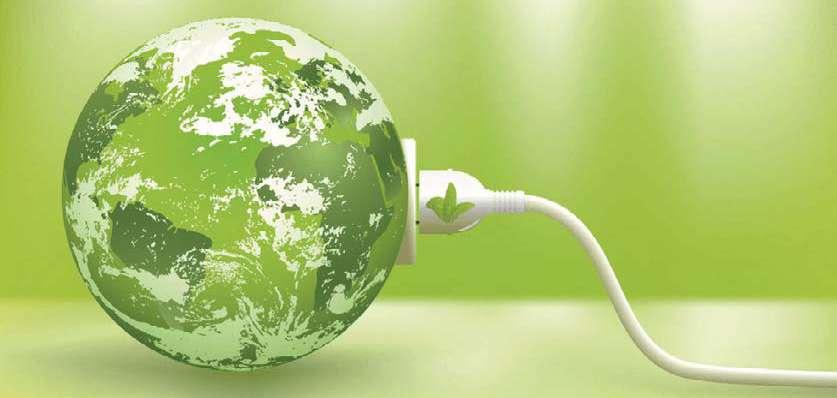
LONG-TERM STEPS
To stay on a net-zero pathway until 2050, every semiconductor company would need to shift toward a more proactive and innovative approach—and that means making a greater investment in decarbonization and showing a willingness to experiment. For instance, the semiconductor industry can learn from other industries by introducing innovative solutions to fabs as they become available. As noted earlier, companies would benefit
from investigating new solutions now, given development timelines, and some key players have already done so. Companies could also develop early-stage decarbonization technologies in partnership with leading start-ups and academic labs. Innovation will involve some risk, since not every idea will lead to real solutions that meaningfully reduce emissions.
For Scope 1 emissions, companies could continue to develop and implement alternative gas chemistry. New abatement solutions could also be implemented to enable more efficient gas removal. Simultaneously, companies could explore innovative technologies for recycling and reusing process gas that cannot be eliminated because of technical challenges.
With Scope 2 emissions, companies could increase the use of renewable energy. To do so, the industry would need to continue implementing the innovation solutions to increase supply, such as importing energy to locations with supply constraints.
THE BENEFITS OF GREATER COLLABORATION
To implement a road map for net zero, collaboration among semiconductor companies and other players along the value chain may be critical.
When reducing Scope 1 emissions, for instance, companies would benefit by reducing process-gas emissions in fab operations. Achieving this goal might be easier if they work with various specialty suppliers—gas/material, equipment, and abatement—to improve existing solutions and develop innovations, including those related to replacement, abatement, and recycling. Companies could also look for collaborative opportunities along the value chain to identify future gas/material requirements and define a common road map to chart their course forward. For example, chemical and tool suppliers could work jointly with semiconductor fabs to optimize processing recipes to lower emissions. Similarly, abatement tool suppliers could work closely with manufacturing equipment suppliers, fab operations, and chemical suppliers to ensure that they fulfill new abatement requirements.
To reduce Scope 2 emissions, companies would benefit from addressing challenges in sourcing renewable energy, and a joint effort with local electricity consumers could help increase availability.
Source: mckinsey
FEATURED
SUNGROW
DEVELOPMENT GOALS WITH ALIGNMENT OF CONFERENCE OF THE PARTIES

SHARM EL-SHEIKH EGYPT 2022
pon the arrival of the 27th Conference of the Parties of the UNFCCC (COP 27) in Sharm El-Sheikh, Egypt, Sungrow, the global leading inverter and energy storage supplier for renewables, in cooperation with the official distributor Arab Consulting Office (ACO), announced the formal delivery of a package of solar projects in this host city, altogether generating over 80GWh clean electricity and reducing about 55 thousand ton CO2 per year. These projects will also power business, transport, and tourism facilities such as hotels, airports, official buildings, conference centres etc. that will be used during COP27 and help transform Sharm el-Sheikh into a green city.
In order to showcase the official determination and supports to mitigate climate change, the Egypt government implemented a package of measures to build Sharm el-Sheikh into an integrated sustainable city, among which switching to clean power is a fundamental one. The green initiatives drove many RE players such as ENI, Hassan Allam Utilities, TAQA Arabia, Intro for sustainable resources, Altawakol Electric Gila & Solarize, etc. to develop solar projects to power local businesses and people with clean electricity. Sungrow has been selected to be the inverter provider for these significant projects, which include the largest clean energy solar plant in Sharm el-Sheikh of 20 MW with TAQA Arabia, supplying clean electricity to over 6,000 hotel rooms, which will accommodate distinguished guests of this global event. Sungrow’s industry-leading commercial inverter SG110CX is applied in these projects, which brings higher yield with multiple MPPTs and compatibility with bi-facial modules.


Besides, this premium inverter is equipped with IP66 and C5 anti-corrosion protection standards to ensure stable and long-term operation outdoors. The AFCI function also protects system safety as a whole. The local team stayed onsite during the construction period and succeed in delivering all of them before the opening of COP27. GW-level clean power will be generated to power this global summit and help reduce carbon emissions then, which contributes to advancing Egypt’s sustainability goals.
We believe these solar projects can strengthen Egypt’s clean energy transformation plan and make Sharm ElSheikh a green and smart city. After completing them, Sungrow achieved altogether 500MW installations there, occupying a dominating market share. To strategize the bright market in Egypt and North Africa region, Sungrow provides a comprehensive product portfolio which can be spread nationwide through our trustworthy distributors like Arab Consulting Office. We also own a mature team ready to serve and offer professional guidance. These advantages will help us achieve more milestones in the near future, said Moustafa Mohamed, Director of Sungrow North Africa Region.
36 EQ NOVEMBER 2022 www.EQMagPro.com
U
ADVANCES EGYPT’S SUSTAINABLE
(COP27)
SungrowAdvances Egypt’s Sustainable Development Goals with Alignment of Conference of the Parties (COP27) Sharm El-Sheikh Egypt 2022
FEATURED
IMPORT DUTY SOPS FOR RS 1.3 LAKH CRORE SOLAR PROJECTS WILL CONTINUE
Solar projects involving investments of Rs 1. 3 lakh crore bid out earlier than March 2021 will be exempted from the income division’s order scrapping decrease customs duty below the concessional mission import scheme for solar sector, energy and renewable vitality minister Raj Kumar Singh informed TOI.
The transfer will carry reprieve for 26,000 MW capability below varied levels of implementation by holding the doorways open for tools imports value Rs 60,000 crore at 5% duty, as a substitute of the 40% primary customs duty (BCD) that got here into impact from April 1. Singh stated the ministry has additionally determined to offer a 12-month extension to preMarch 2021 projects to make sure capability addition didn’t undergo.
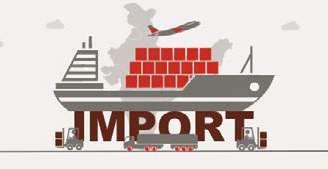

We placed the (tax) issue before the finance ministry and asked them to include these projects in the concessional duty scheme. We have suggested the concessional duty be retained at the original 5% instead of 7. 5% now and sent a list of the projects, RK Singh stated. Singh stated the 5% concessional duty below the scheme will be allowed to be handed by means of to keep away from placing extra monetary burden on promoters.

The finance ministry didn’t favour the renewableenergy ministry’s preliminary strategies for a grant to offset the impression of greater import duty on these projects. Instead, it instructed duty refund. The income division had on October 20 amended the Project Imports Regulations of 1986 to take away solar from the mission imports scheme that allowed import of solar modules and cells wanted for organising new items or enlargement of an present unit at a concessional duty of 5%, later raised to 7. 5%. For promoters whose projects have been already underway when the federal government in March 2021 introduced its intent to impose 40% BCD on cells and modules from April 2022, the mission import scheme allowed safeguard for their investments.

Source: timesofindia.indiatimes
UN RELEASES REPORT OF HIGH-LEVEL EXPERT GROUP ON NET-ZERO COMMITMENTS
UN High-Level Expert Group will release a major report with recommendations on how to bring clarity and rigor to net-zero pledges from non-state actors, such as corporations, investors, and cities. The launch event will take place at COP27 in the Ibis room with Catherine McKenna and others.
“Companies must be held to a high bar to ensure their actions help tackle the climate crisis at the pace and scale necessary. The High-Level Expert Group’s report offers valuable insights on how businesses, investors, cities and others can set stronger and clearer net-zero emissions pledges and speed up implementation. The report lays out five clear principles that any one advocating for bold corporate climate action should closely consider.
“Nearly 1,500 companies are now committed to reach net-zero emissions according to the Science Based Targets initiative. This surge of interest from the corporate sector to zero out emissions is truly inspiring, but it is critical that companies’ plans are credible and backed up with bold, immediate ac tion and transparent reporting on progress. Any corporate net-zero targets with loopholes or weak guardrails would put our planet and billions of people in peril.”
www.EQMagPro.com FEATURED
FOLLOWING A STATEMENT FROM ANI DASGUPTA, PRESIDENT AND CEO, WORLD RESOURCES INSTITUTE:
NET-ZERO HEAT: LONG-DURATION ENERGY STORAGE TO ACCELERATE ENERGY SYSTEM DECARBONIZATION
Thermal energy storage has the potential to greatly contribute to decarbonizing global heat and power, while helping to ensure the energy system operates affordably, reliably, and efficiently.
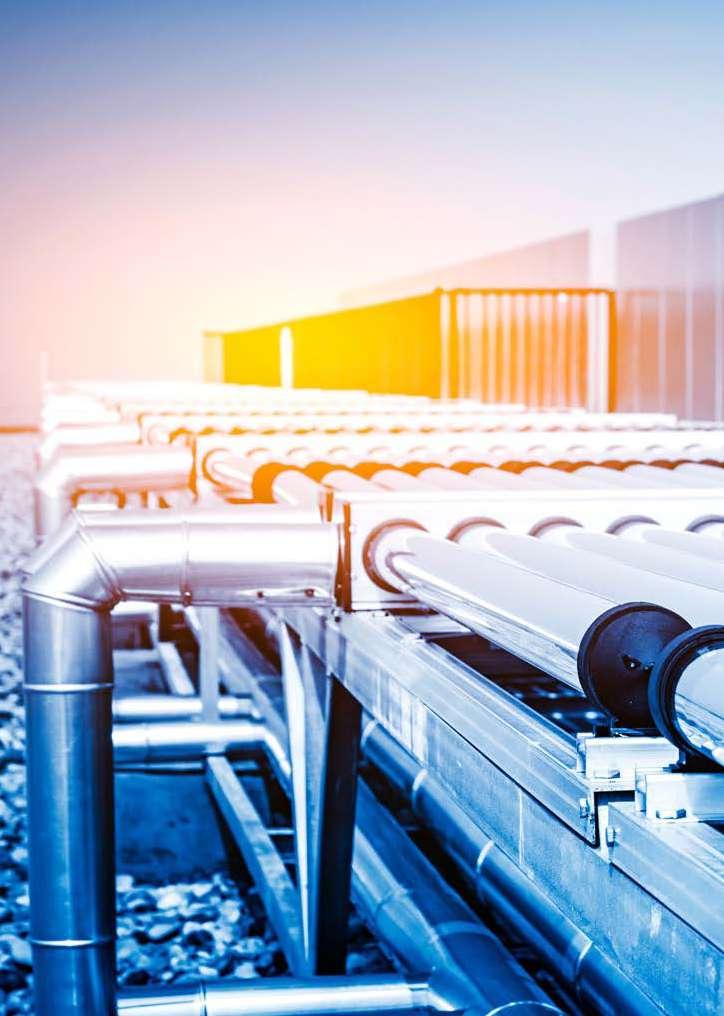
As efforts to decarbonize the global energy system gain momentum, attention is turning increasingly to the role played by one of the most vital of goods: heat. Heating and cooling—mainly for industry and buildings—accounts for no less than 50 percent of global final energy consumption and about 45 percent of all energy emissions (excluding power),1 so decarbonizing heat is central to the effort to achieve netzero emissions (Exhibit 1).
Less well understood is often the role that managing and storing heat can play in addressing a crucial challenge facing the power sector: how to increase the share of inherently variable renewable sources, such as wind and solar in the energy mix while ensuring supply matches demand. Thermal energy storage (TES) comprises a set of technologies that could both accelerate decarbonization of heat and help establish a stable, reliable electricity system predominantly powered by renewables. TES can be charged with renewable electricity or waste heat to discharge firm, clean heat to users such as industrial plants or buildings. A new industry report with insights and analysis by McKinsey shows how TES, along with other forms of long-duration energy storage (LDES), can provide “clean” flexibility by storing excess energy (electrical or thermal) at times of peak supply and releasing it as heat when demand requires. It shows that when heat cannot be directly generated with renewable electricity, TES can be a more cost-efficient and low-carbon way of fulfilling heat demand than delivering a steady electricity supply with stored renewable power. TES can cover a wide range of heat applications, including reaching the very high temperatures required in some industrial processes. The report is published together with the LDES Council, an executive-led organization formed to bring together the industry ecosystem and build a holistic fact base, thereby accelerating the cost reductions achievable through deployment of LDES solutions. LDES can offer a clean flexibility solution to secure reliable power and heat supply As discussed in the earlier netzero power report by the LDES Council, the energy system will likely need to operate more flexibly as the renewables’ share in

FEATURED
the power mix grows. Right now, the necessary flexibility is provided mainly by dispatchable fossil-fuel generation, but that is not a long-term solution that achieve climate targets. The more sustainable alternative will likely be a mix of flexibility solutions, including LDES (and TES). While direct electrification via renewables supports net-zero heat when the sun is shining and the wind is blowing, combining renewables with storage can help to complete the decarbonization of heating. Deploying TES can enable the provision of clean heat from renewables to industrial processes such as chemicals or food and beverage production All of these activities can help to match variable renewable electricity generation with demand and enable the system to operate at maximum efficiency, thus reducing the need to invest in infrastructure to cope with peaks and troughs. TES provides supply-side and demand-side storage and helps reduce the waste involved in curtailing renewable supplies at times of peak supply. It can improve overall grid utilization and reduce system stress, while in the process facilitating faster deployment of renewables. Some TES technologies are already commercially available and cost-competitive TES can enable the cost-efficient electrification of most heat applications including steam and hot air, two of the most common forms of heat used in industrial processes. It covers a spectrum of technologies that can address a wide range of storage durations (from intraday to seasonal) and temperatures (from subzero to 2,400°C). According to the LDES benchmarking results, TES could facilitate cost-efficient clean heat provision. Exhibit 2 illustrates one example and compares the levelized cost of delivering medium-pressure steam using TES to other fossil and clean technologies. Some TES technologies are already commercially available and can be easy to deploy and integrate with existing systems—for example, medium-pressure steam as applied in the chemicals and food and beverage industries. Innovative technologies that can help address highertemperature needs well above 1,000ºC are also on the way. The new report examines a number of use cases for TES and shows that they can potentially already be profitable, depending on local conditions and market design, with internal rates of return of up to 28 percent. The use cases assessed in the report include medium-pressure steam in a chemicals plant, district heating, high-pressure steam in an alumina refinery, and cogeneration for an off-grid greenhouse. The findings also demonstrate the importance of a supportive market design that provides some form of reward for the system flexibility TES creates, such as lower grid fees. TES is most likely to thrive, the report states, where there is access to abundant solar or wind power or to existing captive-heat supplies. In any case, the evidence suggests that TES, like other forms of LDES, is set to become more cost-competitive as the market matures and scales. The
LDES Council figures suggest that the unit capital cost of TES is expected to decline between now and 2040—by between 5 and 30 percent in discharging equipment and by 15 and 70 percent in the energy storage medium. Decarbonizing the energy system: an integrated approach To realize the potential benefits of TES, it can be helpful to take an integrated view of an energy system that is fast becoming more complex and interconnected. For example, there are early signs that the power and heat sectors, as well as the emerging hydrogen industry, are becoming increasingly interconnected through technologies like heat pumps, electrolyzers, or hydrogen boilers. A case study on the port of Rotterdam—one of the world’s largest ports and industrial clusters and a vast concentration of power and heat demand—illustrates the potential importance of storage technologies such as TES in integrating and decarbon izing complex energy systems. It shows how TES combined with power LDES could help to transform the variable output of nearby offshore wind farms into a more stable supply of clean heat for industry. This creates another source of demand for offshore wind developers and a cost-efficient path to decarbonization for industrial energy users. It is through such initiatives that TES could accelerate the global pace of emissions reduction and bring net zero closer. The report shows that TES could double global LDES capacity by providing a cost-efficient alternative for decarbonizing heat, including high-temperature heating applications. This would potentially reduce global system costs by up to $540 billion annually, enable a faster renewables build-out, and optimize grid utilization. Overcoming potential challenges to boost TES adoption There are a number of potential challenges to overcome before TES can become widely adopted. It can be helpful to improve the level of awareness of TES’s potential among business leaders, policymakers and investors, and of the role it could play in enabling a costoptimized pathway to net zero for the energy system. Beyond that, there remain potential commercial risks arising from the relative nascency of the industry and the varying maturity of TES technologies in a business with expensive and long investment cycles. The report suggests various ways to change this picture. Business leaders could play their part by investing in pilots and demonstration plants to create awareness and showcase TES business cases, and by creating joint efforts with key parties across the supply chain. Policymakers could start designing long-term frameworks to reduce uncertainty, including market mechanisms that reward system flexibility and create a level playing field, as well as provide direct support for TES investments. Investors, too, could make a contribution by putting TES on their radar and deepening their understanding of TES applications and opportunities. The study shows that TES could be among the most cost-effective routes to decarbonization of heating if applied at scale, while also providing stability and resilience for heat and power sectors as they transition to net-zero. Now is the time to start building out this promising technology so it can fulfill its potential to transform the energy system.
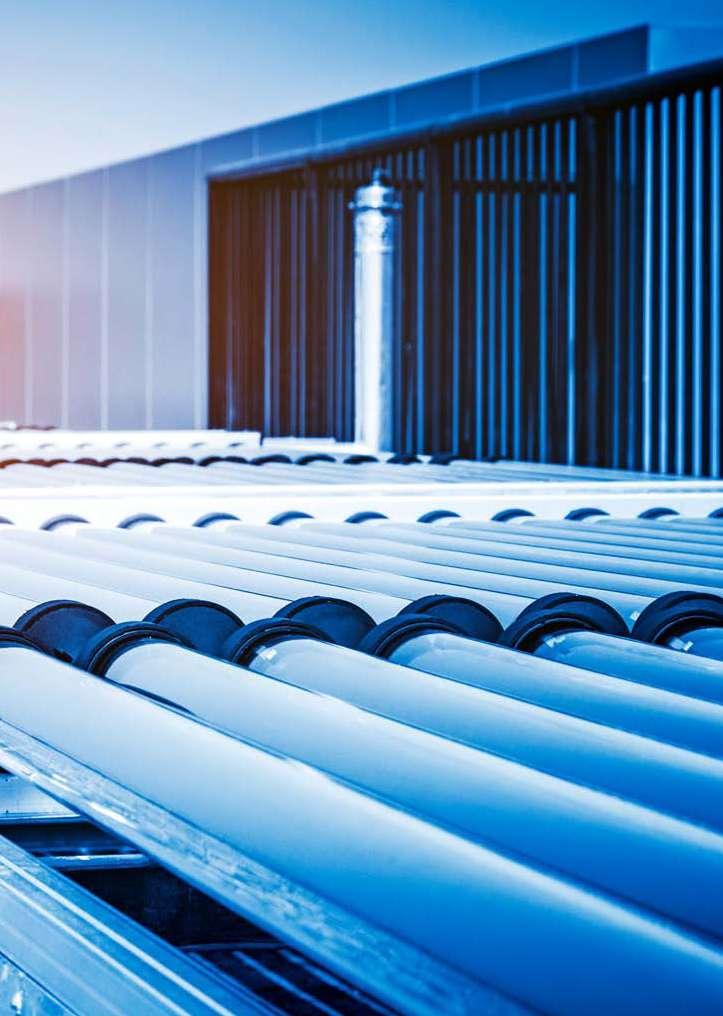 Source: mckinsey
Source: mckinsey
FEATURED
DELHI COUPLE CONVERTS 3M LITRES OF USED COOKING OIL FROM EATERIES
INTO BIODIESEL
KNP Arises, a Delhi-based startup run by Kirti and Sushil Vaishnav, collects used cooking oils from restaurants and converts it into biodiesel, which generates 80% lower carbon emissions as compared to fossil fuels.
In 2019, the Food Safety and Standards Authority of India (FSSAI), the country’s statutory regulator, announced that restaurants or eateries could no longer reuse cooking oil more than three times. They also announced that any “cooking oil having developed TPC [total polar compounds] of over 25% shall not be topped up with fresh oil.” The formation of TPC is a result of repeated using and frying of edible oils, rendering them unfit for human consumption. Thus, eateries and restaurants are required to dispose of used cooking oil (UCO) to authorised collectors. After all, proper disposal of cooking oil is essential.
Speaking to The Better India, Kirti Vaishnav, the co-founder of KNP Arises, a startup that not only collects UCO but also converts it to biodiesel, notes that the consequences of shoddy disposal are severe. “If thrown directly into the drainage system, it pollutes water bodies, clogs our sewer system and generates a heavy load on our effluent treatment plants (ETPs). A litre of used cooking oil can pollute 20,000 litres of water. Besides, unethical disposal of UCO also circulates in our food cycle. As per FSSAI data, currently, 60% of UCO gets sold back to small food vendors which then comes back to our plates and causes serious health issues. This adulterated UCO causes many diseases like cancer, Alzheimer’s, Parkinson’s, and heart-related problems,” claims Kirti.

“By collecting UCO and converting it into biofuel, KNP Arises is not only looking to safeguard society’s health, but also keep the environment clean and green,” she adds. Co-founded by Kirti and her husband Sushil Vaishnav, KNP Arises is in the business of generating eco-friendly and renewable energy in the form of biodiesel from UCO. The Delhi-based startup collects used cooking oils and fats from restaurants and converts those oils into biodiesel, which generates 80% lower carbon emissions as compared to fossil fuels. Kirti says that the startup provides a wide array of services to help factories manage their waste oils and fats. With tailor-made packages for supermarkets and fast-food outlets, KNP Arises attempts to also eliminate any potential issues of dealing with waste. She adds that they are also attempting to reach out to individual homes because quite often UCO gets thrown into drains causing water pollution and blockages in sewer pipes. Their aim is to recycle 100% of the waste generated so that none has to be disposed of in a landfill. So far, they claim to have collected over 3 million litres of used cooking oil (UCO) from more than 40 cities.
From Bundi district in Rajasthan, Sushil and Kirti had extensive corporate careers spanning more than 15 years across different industries in India and abroad before establishing KNP. Sushil specialises in food technology with an MBA in operations, while Kirti is a graduate in electronics and communication engineering with a talent for marketing and tech management.
Having extensive experience in the food industry, technology and supply chain, we wanted to work towards improving the quality of street food in our cities. During our market research, we observed a lack of awareness and infrastructure for used cooking oil. We wanted to make sure once our families go out to eat, they can eat without health risks, says Sushil.
“One fine day a couple of years ago, we were eating at a good restaurant and found they were not aware of UCO disposal practices. Later, after visiting other restaurants, we realised many of them were not aware that UCO should be disposed of after using it a certain amount of times. Meanwhile, those aware of the health and environmental risks associated with UCO struggled with how or where to dispose of it. So, we decided to help them with a sustainable solution and incorporated KNP Arises Green Energy Private Ltd in November 2019,” explains Kirti.
ARRIVING AT A SOLUTION COLLECTING FROM SOURCE


Across 40 cities, KNP Arises collects UCO from every food business operator (FBOs) possible like restaurants, hotels, small food hawkers, caterers, cloud kitchens, temples and gurudwaras, office and institutional canteens, and snack factories. “We collect used cooking oil (UCO) from different locations and store it in our centralised warehouse where preliminary treatment of oil takes place. Now, this oil is ready for biodiesel conversion. With transesterification (the process in which fat or oil reacts with an alcohol to form esters and glycerol), UCO is converted into biodiesel,” explains Sushil. “Since there is a huge scarcity of raw material (UCO) for biodiesel generation, our focus starting out is on collection. At present, we don’t own any plant for biodiesel conversion. Rather, we have tied up with a third-party operator to help convert UCO into biodiesel. Currently, we sell our biodiesel to major public sector oil marketing companies (OMCs) like HPCL and BPCL, those in the transport industry, furnaces, and users of boilers, and many more applications,” he adds.

40 EQ NOVEMBER 2022 www.EQMagPro.com
INDIA
HOW DOES KNP COLLECT UCO? INCUBATION WITH AN MNC
nyone willing to dispose of UCO can place a request on their mobile application, and their operations team will connect with them to ensure “timely collection”. The startup is developing an IoT (internet of things) based container that will increase “our collection capabilities and create a seamless flow of information, transparency and efficient supply chain for the collection”. The startup’s work generates two distinct advantages for food businesses, says Kirti Vaishnav. One, KNP pays for the UCO collected and two, the entire process is done with “strict compliance with FSSAI and environment guidelines.” Experts note that a litre UCO can produce 850 to 900 ml of biodiesel depending on the quality of the raw material used. “Each food business has different challenges with respect to managing their waste oil. For example, small restaurants prioritise disposal in the shortest amount of time given that they don’t have space to store the waste. Meanwhile, big QSR chains require central controls on disposal, and big hotels need compliance on priority and ease of disposal. Supermarkets, too, have issues with expired products and damaged oil management. As per their requirements, we provide them with respective solutions with the help of mobile applications and logistics services. We also provide services related to their food safety training, compliance management services and other related services,” claims Sushil.
KNP Arises is one of the four “breakthrough startups” as part of Shell India’s E4 programme. According to the incubation centre’s website, “Shell E4 Program provides a platform for collaboration and conversation around valuable energy transitions, offering startups an opportunity to bring their ideas to life with Shell’s guidance and support.” The Delhi-based startup’s incubation journey with the energy giant’s startup incubation program started in April 2022. “Incubation with Shell India has given me the opportunity to connect with the right people from the industry who have guided us to find the right path. We have received blanket support whenever required. It has been an amazing experience with the Shell India E4 team,” says Kirti. Meanwhile, their business model is an aggregation of the used cooking oil pretreatment and generates revenue by selling UCO and biofuel. Since its inception, Kirti claims that the startup has generated revenues of Rs 10 crore. “Last year our revenue was Rs 3.5 crore and yes, we have broken even. Our aim is to take a leadership position in supplying all types of agriwaste for conversion into advanced biofuel. Till now, we have raised funding worth Rs 1 crore. We are also raising funds for pivoting. With these , we are expecting to grow fast and meet India’s advanced biofuel requirement,” she adds.
GOA NEEDS TO REDUCE CO2 EMISSIONS BY

189MN TONNE BY 2050
Goa must reduce carbon dioxide emissions by 189 million tonne to make it a zero-emission state by 2050, the Goa State Energy Action Plan (GSEAP) has revealed.
“In the next 30 years, Goa’s transport sector needs to eliminate almost 97 million tonne of carbon dioxide, followed by the power sector with 63 million tonne and industries with 16 million,” GSEAP said. The energy action plan in the power sector includes harnessing the entire state renewable energy potential to the tune of 4 GW by 2050, augmenting green power procurement of 17 Twh by 2050, strengthening the transmission and distribution network and obtaining grid stability while increasing the renewable energy share.
The agriculture sector needs to use B-20 for all farm machines by 2050, use 100% green electricity for all farm activities, including pumps, by 2050 and 100% KUSUM Programme Implementation and achieving 150 MW Agro-PV capacity by 2050.In the building sector, there needs to be use of 100% green electricity for all building operational activities by 2050. The industry sector must replace 100% coal use with biomass, as well as replace 100% oil use with biofuels. Similarly, the transport sector must see 100% electrification of 2-wheelers, cars and taxis, 20% blending of biofuels in all 2-wheelers, cars and taxis, 20% blending of biofuels in all categories of vehicles and 100% use of green electricity for EV Charging.
www.EQMagPro.com 41 EQ NOVEMBER 2022
Source: PTI Source: PTI INDIA
KARNATAKA SOON TO BE THE FLAG BEARER OF THE RENEWABLE ENERGY SECTOR: PANEL

Karnataka will soon be the flagbearer of the country’s renewable energy sector as it is already the single largest ethanol production hub in Asia, opined an expert panel on energy spoke at Global Investors’ Meet in Bengaluru.
The country has the mandate to meet 50% of its energy requirements through renewable sources, which is around 20% currently, by 2030. To achieve this ambitious target, policymakers and industry players should get into quick action and also encourage entrepreneurs and farmers to take up ventures around renewable energy, they said. The panel deliberated around the theme ‘Reinventing the energy ecosystem: Future of energy generation in the world’ and felt Karnataka has all the prerequisites to emerge as the flagbearer of the country’s renewable energy sector.
India should become a net exporter of energy by producing cheap green nitrogen, hydrogen, and also other alternative renewable energy sources, said G. Kumar Naik, Additional Chief Secretary, Energy Department, Government of Karnataka. “We have to work quickly to reach the goal. By 2030, 50% of India’s energy requirement should be met through renewable sources. Today, some 85% of the oil burnt and 50% of the gas consumed in our country are imported. We have to become a net exporter of energy,’‘ he added.
India should become a net exporter of energy by producing cheap green nitrogen, hydrogen, and also other alternative renewable energy sources, said G. Kumar Naik, Additional Chief Secretary, Energy Department, Government of Karnataka. “We have to work quickly to reach the goal. By 2030, 50% of India’s energy requirement should be met through renewable sources. Today, some 85% of the oil burnt and 50% of the gas consumed in our country are imported. We have to become a net exporter of energy,’‘ he added.
“But they should realise, it is not just sugar, there are several byproducts of sugarcane, including ethanol which is produced from molasses. We need to move away from fossil fuels and the usage of ethanol will help reduce pollution,’‘ added Mr. Nirani.
RENEWABLE POWER GENERATORS CAN BENEFIT FROM OPEN ACCESS FRAMEWORK


Indian power generators in general and renewable companies, in particular, will benefit from the counterparty shift to commercial and industrial (C&I) customers from weak state-owned distribution companies, said Fitch Ratings.
Indian power generators in general and renewable companies, in particular, will benefit from the counterparty shift to commercial and industrial (C&I) customers from weak state-owned distribution companies, said Fitch Ratings. The power projects will see higher utilisation and tariffs, and timely clearance of dues, the credit rating agency said. The Indian government has simplified rules governing the Open Access (OA) framework for the procurement and sales of electricity. However, actual and timely implementation remains in the hands of the state regulators. Regulatory uncertainties have deterred C&I customers from taking advantage of OA to buy power on medium- to long-term contracts.
According to Fitch Ratings, almost half of the electricity generated in India is consumed by C&I customers. However, less than two per cent is purchased under long-term OA contracts with wind and solar power projects.
“The lower participation of C&I customers in the OA facility is a result of regulatory uncertainties. The composition, quantum, and waivers for OA charges vary not only across Indian states but also over time in a state. In certain cases, the final procurement cost to C&I customers for conventional power under the OA facility may turn out to be higher than the cost of buying through the grid, which defeats the overall attractiveness of the OA facility,” Fitch Ratings said.
42 EQ NOVEMBER 2022 www.EQMagPro.com INDIA
N. Venu, MD & CEO – India and South Asia, Hitachi Energy, said, “We now have to catch up speed to accelerate the growth of renewable sector.’‘
Source: PTI Source: PTI
ADANI NEW INDUSTRIES SETS UP INDIA’S TALLEST WIND
TURBINE IN GUJARAT
Installation of the wind turbine is part of ANIL’s renewable energy expansion plans

dani New Industries Ltd (ANIL) announced that it has installed wind turbine taller than the world’s tallest ‘Statue of Unity’ in Gujarat. The wind turbine’s blades are wider than the wingspan of a jumbo jet in Gujarat’s Mundra. Installation of the wind turbine is part of ANIL’s renewable energy expansion plans.

Making the announcement, Milind Kulkarni, Chief Operating Officer (COO), MWL said, “The proto assembly was completed in a record of 19 days. It is installed, commissioned, and we shall soon go for a type certification now.”
The wind turbine has been set up by Mundra Windtech Ltd (MWL), a wholly-owned subsidiary incorporated by Adani Enterprises Ltd (AEL). India’s tallest and largest wind turbine stands 200 metres tall and has a capacity to generate 5.2 MW of electricity and can power approximately 4,000 homes. Adani New Industries has said that it has laid even bigger foundations for upcoming wind turbine generators.
SJVN BAGS 83 MW FLOATING SOLAR PROJECT IN MADHYA PRADESH

SJVN has secured 83 MW Floating Solar Project in Madhya Pradesh. This Project has been secured at Rs3.70/unit on Build Own and Operate basis in a e-Reverse Auction (e-RA) organized by REWA Ultra Mega Solar Limited (“RUMSL”).
SJVN will develop this project in India’s largest Floating Solar Park at Omkareshwar in District Khandwa, Madhya Pradesh. The cost of developing the Floating Solar Project will be approximately Rs585 crore. After commissioning, the project will generate 187 million units in first year & 4410 million units over a period of 25 years. The commissioning of this Project is expected to reduce approximately 2,16,074 tonnes of carbon emission in 25 years. The Power Purchase Agreement (“PPA”) will be signed between RUMSL & SJVN for 25 years. The project shall be commissioned within a period of 21 months from the date of signing of PPA.
SJVN is implementing this Project along with other Renewable Projects of 4090.5 MW capacity through its wholly owned subsidiary SJVN Green Energy Limited. SJVN is on a rapid expansion and capacity addition journey. With present portfolio of around 42,000 MW, the company is marching forward to achieve its Shared Vision of 5000 MW by 2023, 25000 MW by 2030 & 50000 MW capacity by 2040. At around 9:16 AM, SJVN Ltd is currently trading at Rs37.70 per share up by Rs0.75 or 2.03% from its previous closing of Rs36.95 per share on the BSE.
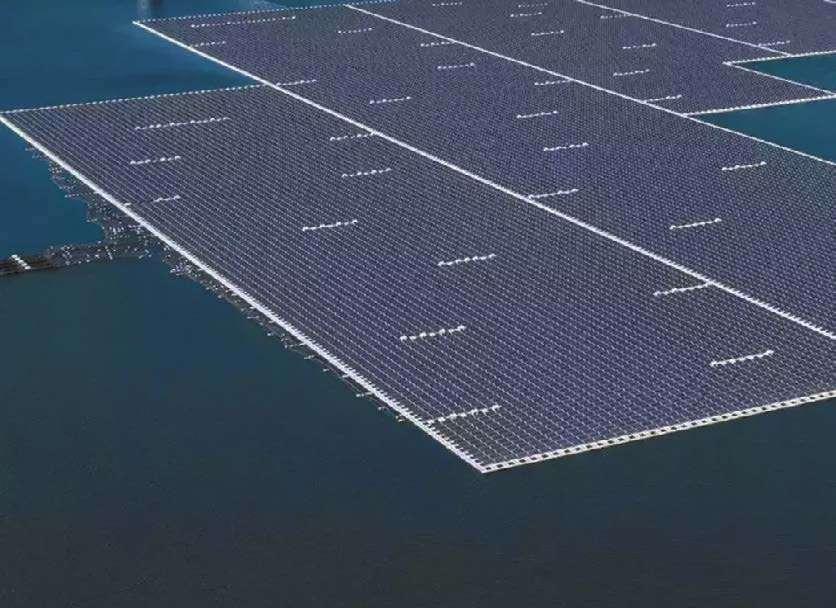
INDIA
A
Source : pti
Source: PTI
NITIN GADKARI PROMISES ROPEWAYS, CLEAN ENERGY PROJECTS FOR POLL-BOUND HIMACHAL PRADESH
Union Road Transport and Highways Minister Nitin Gadkari on promised more ropeways, cable railway system, tunnels and clean energy projects for Himachal Pradesh which is going to poll on November 12.

Addressing an election rally in the tribal area of Chamba district, Gadkari said constructing roads here is difficult and new-age projects can solve the connectivity issue in the sub-Himalayan range of mountains. ”Constructing roads is difficult here. There is a need for tunnel projects, ropeways and funicular train systems…if we can connect these mountains through the electric transport system, these will ease your travel and improve connectivity,” he said. Gadkari was canvassing for Dr Janak Raj, the BJP candidate from the Bharmour constituency. He said that similar ropeway, cable car and funicular railway projects have been launched in Leh and Ladakh regions. ”The Pathankot-Bharmour highway project has also been approved and I promise that a good quality road will be constructed to ease your travel,” Gadkari said. Highlighting various clean energy and electric mobility projects undertaken by the government, the Union minister said hydropower projects in the Himalayan region will help generate employment also. Talking about shortage of petrol pumps and gas stations here, Gadkari said the government will try to bring an electric mobility system. ”Solar rooftop projects can be implemented here which will power electric cars, buses and autorickshaws,” he said, adding that as a transport minister he has brought electric buses, cars and rickshaws to the country and
brought electric buses, cars and rickshaws to the country and soon electric tractors and trucks will be launched. In a lighter vein, he said if someone needs he can provide an agency of electric scooters, cars and e-rickshaws. On the issue of vehicular pollution in the mountains, Gadkari said that through electric mobility he is trying to phase out petrol and diesel vehicles from the whole country. On alternative fuel projects such as ethanol production from farm waste and stubble, the minister said the government is determined to make India’s farmers energy producer in addition to food producer. ”Ethanol, methanol, CNG, bio-CNG, electric, green hydrogen – all will be produced in Himachal Pradesh,” he said, adding that ropeways, tunnels, roads and all types of infrastructure will be developed in the state. it has good roads,” Polling in Himachal Pradesh will be held on November 12
PTC INDIA GETS 3,500 MW RENEWABLE ENERGY SUPPLY OFFERS AGAINST 1,000 MW SOUGHT
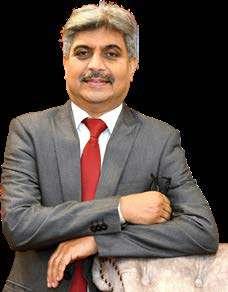
The company received offers from 14 energy producers
Power trader PTC India said it has received supply offers to the tune of 3,500 MW renewable energy against 1,000 MW the company had sought. The company received offers from 14 renewable energy producers. The response has come against its Expression of Interest (EoI) for procurement of 1,000 MW for onward sale through market-linked RE products, the company said in a statement. “This is a first of its kind development in the Indian power market wherein a trading licensees intended to purchase renewable power for onward sale through market-linked products. This will lead to significant changes in the present electricity market structure and speed up the renewable energy generation,” it added. Most of the leading domestic private players, including Tata Power Renewable Energy (TPREL) and Torrent Power participated in the process. Besides, many internationally renowned companies such as Enel Green, Engie power, etc. have also shown interest in the EoI process, the power trader said. “Developers have offered quantum ranging from 100 MW to 500 MW. Since this is a hybrid based procurement (solar and wind energy), many developers have also offered high capacity utilisation factor (CUF), which means more renewable energy available for sale in the market. The projects
are mainly located in Rajasthan, Gujarat, Madhya Pradesh and Karnataka. Developers have offered to commission the project within a period of 18-24 months,” it added. The offers received from the developers are currently under evaluation and PTC is likely to take a call on the pro curement in 3-4 weeks. dia CMD (addl. charge) Rajib K Mishra said, “This is a unique market-linked product being initiated by PTC to encourage renewable energy sale in the exchanges or through any other options without putting any burden or commitment on the State Discoms. This will shape-up the future of the renewable energy market and will contribute to the growth of the sector.”
44 EQ NOVEMBER 2022 www.EQMagPro.com
Source: PTI
Source: PTI
A
INDIA
CDPQ-BACKED MAPLE HIGHWAYS COMPLETES RS.


6,267 CRORE

ACQUISITION
OF INDIA’S FIRST SOLARPOWERED EXPRESSWAY
Eastern Peripheral Expressway surrounds the National Capital Region, easing chronic traffic and emissions in Delhi...
• Largest toll road transaction for India’s Asset Monetization Programme in 2022.
• Leading domestic institutional and family offices have co-invested alongside CDPQ, underlining interest in highways as a high-yielding long-term asset class.
Maple Highways, a dedicated India road investment platform created by global investment group CDPQ, announced it has completed the acquisition of the Eastern Peripheral Expressway (EPE) that encircles the National Capital Region (NCR). Valued at Rs. 6,267 crore, the purchase of the Toll Operate Transfer (TOT) project from the National Highways Authority of India (NHAI) is the largest road transaction to occur as part of the Union Government’s Asset Monetization Programme this year. The 135-kilometre, six-lane express highway has been in operation since 2018 and was designed to decongest Delhi of commercial traffic, and runs through the states of Haryana and Uttar Pradesh down the eastern side of the NCR. All lighting and other utilities along the expressway are fully solar-powered.
Popularly known as National Expressway 2, EPE is India’s first Intelligent Transport System (ITS) enabled road. It is equipped with a drip irrigation system and rainwater harvesting structures every 500 metres. It has a closed loop tolling system and 99% of its revenue is collected through electronic tolling, using the interoperable RFID tag, known to millions of drivers as FASTag. For CDPQ, the acquisition is a major step forward in building a scaled portfolio of strategically located, long-term revenue generating road assets in India. Earlier this year, Maple Highways also completed the acquisition of the Shree Jagannath Expressway, a 67-kilometre toll road project from Bhubaneswar to Chandikhole, in Odisha, eastern India. Indian highways represent a large and growing market opportunity, with a robust pipeline that includes the government’s ongoing road monetization programme, TOT, a hybrid annuity model of toll roads aimed at accelerating publicprivate partnerships, as well as Build-Operate-Transfer (BOT) models. In creating one of India’s first independent, dedicated road Infrastructure Investment Trusts (InvIT), CDPQ has also chosen to bring domestic capital alongside itself, drawing interest from leading investors such as IIFL AMC and the family office of the Taparia family of Famy Care Group in an emerging infrastructure asset class in India.
Emmanuel Jaclot, Executive Vice-President and Head of Infrastructure, CDPQ, said: “Quality highways ensure the Indian economy continues to move and grow. Founded by CDPQ in 2021, Maple Highways combines road infrastructure expertise and a commitment to ESG, and brings together assets that offer long-term value to our investors. As the reconfiguration of global supply chains accelerates and the volume of goods increases in India, we look forward to further developing our roads portfolio.”

Anup Vikal, CEO, Maple Highways added: “Maple Highways is a truly differentiated platform, a relatively new model for investor-backed InvITs to own, operate and improve India’s highways. As the new custodian of EPE, Maple Highways will seek to build on the expressway’s strong environmental credentials, while benefiting from CDPQ’s leading experience in the roads sector, including industry-leading highway management technology practises, and its sharp focus on ESG.”
Maple Highways and CDPQ continue to explore opportunities that offer long-term shareholder value by sourcing mature toll road assets with established traffic, long residual lives and stable cash flows. CDPQ is the second-largest institutional investor in infrastructure globally, with net assets of CAD 45 billion in its infrastructure portfolio, including in India, which remains a strategically important market for CDPQ given the country’s long-term growth potential and infrastructure needs.
www.EQMagPro.com 45 EQ NOVEMBER 2022
INDIA
HYUNDAI TO INTRODUCE GLOBAL BATTERY ELECTRIC PLATFORM IN INDIA WITH IONIQ 5
Hyundai Motor India said it will introduce its global dedicated battery electric vehicle platform in the country
to debut in the Auto Expo in January next year.

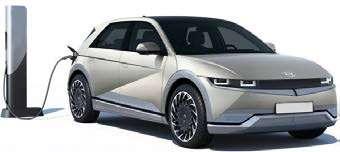
The Ioniq 5 will be the company’s first model in the country based on the electric Global Modular Platform (E-GMP). “With the introduction of E-GMP to India, we will be able to provide customers with advanced battery electric vehicles, derived from a platform that is modular, scalable and versatile,” Hyundai Motor India MD & CEO Unsoo Kim said in a statement. Conceptualised and engineered to pivot the future transformation of electric mobility, E-GMP will usher in a new league of electric vehicles for the new age customers in India, he added. Last year, the South Korean auto major had announced plans to invest around Rs 4,000 crore to drive in six electric vehicles in India by 2028. The company is planning to roll out a mix of models based on its existing range as well as completely new vehicles based on its global platform ‘E-GMP’ over the next few years. The company’s line-up of six battery electric vehicles (BEVs) will cater to multiple segments including mass market and mass premium segments in India. The company’s E-GMP platform has the capability to feature a large battery capacity of up to 77.4 kWh. It also offers Two-wheel-drive (2WD) and Four-wheel drive (4WD) capabilities, improved handling and capability to achieve a top speed of 260 km/h.
Ioniq 5,
TATA POWER RENEWABLE ENERGY TO SET UP 150 MW SOLAR PROJECT IN SOLAPUR
The company has received a “letter of award” for the construction of a 150 MW solar
able Energy. After the power purchase agreement (PPA) is executed, the project will be
“Tata Power Renewable Energy Ltd (TPREL), a subsidiary of Tata Power receives the ‘Letter of Award’ (LoA) from the Maharashtra State Electricity Distribution Corporation Ltd (MSEDCL) to set up 150MW solar project in Solapur, Maharashtra,” it said in a statement. It also said that an e-reverse auction followed by competitive t ariff-based bidding was used to win the LoA. TPREL CEO Ashish Khanna said, “The award is in line with our commitment to create a sustainable ecosystem for transitioning towards a greener future and affirms our potential to deliver…world-class solar projects.” With this addition, TPREL’s total renewable energy capacity has increased to 5,786 MW, with 3,877 MW of that capacity being installed (solar capacity is 2,949 MW, and wind capacity is 928 MW), and 1,909 MW being developed at various stages. Last month, Tata Power Solar Systems had announced the launch of cost-efficient solar off-grid solutions in West Bengal, Bihar and Jharkhand. Tata Power Solar Systems Ltd (TPSSL) is a wholly-owned subsidiary of Tata Power Renewable Energy Ltd (TPREL). The off-grid solutions provide a combination of high-efficient solar modules, inverters and batteries and are available in 11 variants ranging from 1 – 10 Kw with 5-year warranty, a company statement said.
46 EQ NOVEMBER 2022 www.EQMagPro.com
with its upcoming model
slated
project in Solapur, Maharashtra, according to Tata Power Renew-
put into service within 18 months.
Source: PTI Source: PTI
INDIA
TPREL | CEO | Ashish Khanna
INDIA SAVED OVER USD 4 BN IN FUEL COSTS THROUGH SOLAR POWER FROM JAN TO JUNE: REPORT

India saved USD 4.2 billion in fuel costs through solar generation in the first half of 2022 and 19.4 million tonnes of coal that would have further stressed an already strained domestic supply, according to a new report released.
The report by energy think tank Ember, the Centre for Research on Energy and Clean Air and the Institute for Energy Economics and Financial Analysis also analysed the growth of solar power over the last decade and found that five of the top 10 economies with solar capacity are now within Asia, including China, Japan, India, South Korea and Vietnam. The contribution of solar generation in seven key Asian countries — China, India, Japan, South Korea, Vietnam, the Philippines and Thailand — avoided potential fossil fuel costs of approximately USD 34 billion from January to June 2022, the report said. This is equivalent to 9 percent of total fossil fuel costs during this period, it added. “In India, solar generation avoided USD 4.2 billion in fuel costs in the first half of the year. It also avoided the need for 19.4 million tonnes of coal that would have further stressed an already strained domestic supply,” the report stated. The report finds that the majority of the estimated USD 34 billion savings are in China, where solar met 5 percent of the total electricity demand and avoided around USD 21 billion in additional coal and gas imports during the period. Japan saw the second-highest impact, with USD 5.6 billion in avoided fuel costs thanks to solar power generation alone. Vietnam’s solar power avoided USD 1.7 billion in additional fossil fuel costs, a sizable growth from nearly zero terawatt hours of solar generation in 2018. In 2022, solar accounted for 11 percent (14 TWh) of the electricity demand from January to June. In Thailand and the Philippines, where the growth in solar has been slower, the avoided fuel cost is still notable, the report said. While solar only accounted for 2 percent of Thailand’s electricity in the first six months of 2022, an estimated USD 209 million of potential fossil fuel costs were avoided, it added. The Philippines avoided USD 78 million in fossil fuel spending, despite solar accounting for only 1 percent of generation. In South Korea, solar power generated 5 percent of the country’s electricity in the first half of the year, avoiding potential fossil fuel use costing USD 1.5 billion, as per the report. CREA’s Southeast Asia Analyst Isabella Suarez said, “Asian countries need to tap into their massive solar potential to rapidly transition away from costly and highly-polluting fossil fuels. The potential savings from existing solar alone are enormous, and expediting their deployment alongside other clean energy sources such as wind, will be crucial for energy security in the region. While ambitious targets are important, follow through will be the ke ..
www.EQMagPro.com 47 EQ NOVEMBER 2022
Source: PTI INDIA
SERVOTECH POWER SYSTEMS BAGS RS 46 CR ORDER FROM BPCL TO SUPPLY EV CHARGERS
The project to supply and install 800 units of DC fast EV Chargers has already been initiated from Delhi and is expected to be completed by March 31, 2023, a company statement said.

Servotech Power Systems has bagged a Rs 46.2 crore order from Bharat Petroleum Corporation Ltd (BPCL) for supplying and installing a series of EV Chargers at different locations across the country in the next four months. The project to supply and install 800 units of DC fast EV Chargers has already been initiated from Delhi and is expected to be completed by March 31, 2023, a company statement said. The project will span across the country, equipping petrol pumps in major Indian cities with EV Charging capabilities on its course.
As part of this project, Servotech will take care of installation, commissioning, and maintenance of DC fast chargers at a range of locations involving BPCL’s retail sites and fuel and gas stations, as suggested by BPCL. The project will help ensure the deployment of e-mobility touchpoints that address transactions, availability, discovery, and navigation in order to give users of electric vehicles easy access to the charging network.
This project will definitely emerge as a consequential feat for the future, helping arrange and set in motion the building blocks to achieving a future of high density, well-amplified charging network for EVs. “All electric four-wheelers will be able to utilise each charging station, which will have multiple charging points bringing the experience of fast DC charging closer to tomorrow’s emobility users,” Raman Bhatia, Founder and Managing Director, Servotech Power Systems said.
Servotech, which is also a major player in the Solar and power-backup solutions segment, aims to strengthen India’s EV charging infrastructure by way of this opportunity, which will help bring a safe, sustainable, and efficient EV charging solution to accelerate the mass adoption of battery electric vehicles in India.

Source : business-standard

48 EQ NOVEMBER 2022 www.EQMagPro.com BUSINESS & FINANCE
‘RS 2.5L CRORE INVESTMENT LIKELY IN GREEN ENERGY BY
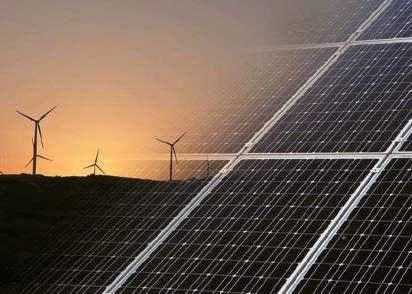




2032’: KARNATAKA GOVERNMENT

He
Adlan Ahmad, the CEO, of Petronas Hydrogen, said that with governments working on hydrogen energy, some companies, including his, are working on technologies where ammonia is produced by converting hydrogen, which is then stored and shipped. He said that while India has a lot of potential for round-the-clock green energy generation, land and other cost factors are expensive.
Kapil Maheshwari, the Leader, of Renewable Energy, RIL, said that in another year, India will be number 1 in net energy green hydrogen export. Work is also on in the 1-1-1 scheme where 1 kg of hydrogen energy will be sold for $1. Venu Nuguri, MD and CEO, of Hitachi Energy, India and South Asia, said that to attain the goals set by the Centre at the COP26, technologies and the pace of development should speed up.
INDIA NEEDS USD 300 BN INVESTMENT TO MEET 500 GW GREEN CAPACITY TARGET BY 2030: REPORT
India will need additional investment of around USD 300 billion to complete the 500-gigawatt renewable energy capacity target by 2030, according to a report.
With 165 gigawatts (GW) generation capacity already in place, the country is on the right trajectory to meet its goal of having 50 per cent of energy needs through the renewable portfolio, the Arthur D Little (ADL) report said
”India needs (additional) strategic investments of over USD 300 billion to achieve its clean energy capacity target of 500 GW by 2030,” the study titled ‘Powering India’s Energy Vision 2030’ said.
As per the study, India’s electricity consumption is expected to grow at an annual rate of 5.4 per cent over the next decade, with annual demand touching 2,300 billion units (BUs) by 2030. However, at the current pace, generation will reach only 2,024 BUs by 2030, it said.
www.EQMagPro.com 49 EQ NOVEMBER 2022 BUSINESS & FINANCE
Kapil Maheshwari, Leader, Renewable Energy, RIL, said that in another year, India will be number 1 in net energy green hydrogen export.
Source: PTI
Source: PTI
The Karnataka government expects an investment of Rs 2.5 lakh crore in the renewable energy sector by 2023, Additional Chief Secretary, of the Energy Department, G Kumar Naik, said.
was speaking at a panel discussion on ‘Reinventing the energy ecosystem: Future of energy generation in the world’ at the ongoing GIM. He said the department plans to set up a 10,000 MW unit under a public-private partnership model to store the renewable energy produced. The government is working on setting up a pump storage unit of 2,000 MW capacity in Sharavathi. Naik said that Karnataka is leading in the production of renewable energy, but there is a need to address ways to store the energy.
AIIB COMMITS USD300 MILLION TO ETAF AT COP27 TO FURTHER SUPPORT ENERGY TRANSITION
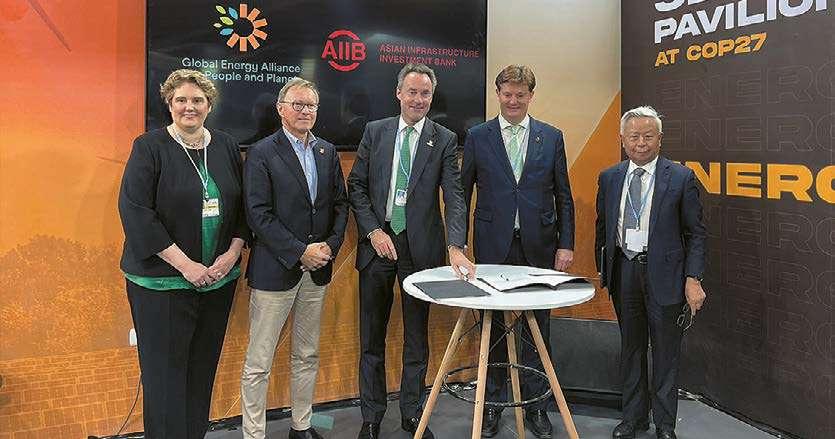

Cooperation agreements with the Asian Infrastructure Investment Bank (AIIB), Masdar and Swiss Re were signed on-site at the UN Climate Change Conference COP27 in Sharm el-Sheikh. AIIB intends to deploy USD 300 million as part of the relationship. Masdar intends to contribute a potential investment of up to USD 200 million USD in the program. Swiss Re can help de-risk these critical investments, with insurance solutions and risk insights. Joining the founding partner and pioneer investor Abu Dhabi Fund for Development (ADFD) who already anchored an investment of USD400 million, ETAF closes on securing a minimum of USD1 billion in total funding to start Calls for Projects as of today.
The Inter-American Development Bank (IDB) announced its interest in becoming a partner in ETAF and endeavor to co-finance up to USD 100 million of ETAF projects in renewable energy and decarbonization technologies in Latin America and the Caribbean (LAC) region. The official announcement took place in the presence of IRENA’s Director-General Francesco La Camera, His Excellency Majid Al Suwaidi, Director-General of the UAE-hosted COP28,
IRENA’s Director-General Francesco La Camera said: “Today’s pledges will allow IRENA to facilitate capital mobilization to accelerate the energy transition in developing countries. As a truly global finance platform, ETAF will change the investment landscape in emerging markets in response to the climate crisis. Together with our partners, we can channel international financing to scale renewable energy projects to secure energy to people and communities in most need on the ground and advance the transition to foster socioeconomic impact and climate resilience.”
The ETAF Platform, managed by IRENA, leverages its partners’ proven track record in innovative financial solutions to deliver impact to IRENA’s member countries. ETAF also benefits from the UAE’s climate investment leadership in the run-up to COP28 hosted by the UAE in 2023.

50 EQ NOVEMBER 2022 www.EQMagPro.com BUSINESS & FINANCE
His Excellency Mohammed Saif Al Suwaidi, Director-General of ADFD, AIIB President Liqun Jin, Masdar’s CEO Mohamed Jameel Al Ramahi, Swiss Re Chair of Public Sector Solutions Veronica Scotti and IDB’s Graham Watkins, Division Chief, Climate Change and Sustainable Development.
Three new partners have officially joined the Energy Transition Accelerator Financing Platform (ETAF), IRENA’s global climate finance program aimed at mobilizing capital to scale up renewable project funding in developing countries by 2030.
His Excellency Mohammed Saif Al Suwaidi, Director-General of ADFD said: “We are proud to be part of the ETAF initiative, as it supports the UAE’s strategic vision to unite global efforts to address climate change through the promotion of renewable energy. Greater support to this cause will accelerate mobilization of green financing, which in turn will hasten the pace of energy transformation in the developing world.”

up to USD200 million in the program, to deliver clean energy to developing countries. The platform will help provide emerging economies with the tools necessary to realize their clean energy potential, and toaday’s signing underscores Masdar’s commitment to supporting developing nations from around the world to achieve their clean energy objectives.”
AIIB President Jin Liqun added: “Our collaboration with ETAF marks an important step forward for AIIB. This collaboration reflects our commitment to unlock new capital through innovative financing tools, advance the climate agenda and deliver value to our most vulnerable member economies. As a climate-centric, partnerships-focused Bank, we eagerly anticipate an impactful relationship with fellow members of the platform, and look forward to financing a greener, more sustainable future for all.”

Veronica Scotti, Chairperson Swiss Re Public Sector Solutions added: “This partnership is consistent with our vision of helping to make the world more resilient. As a leading provider of insurance solutions and risk insights we can help de-risk these critical investments.”







Masdar CEO Mohamed Jameel Al Ramahi said: “I am pleased to formalize Masdar’s commitment to the ETAF platform today through the signing of this cooperation agreement. The ETAF platform will leverage Masdar’s technical and commercial expertise and capital, with a potential investment from Masdar of

IDB President a.i Reina Irene Mejía Chacón added: “IDB is delighted to become a partner under the ETAF initiative and continue the strong and productive relationship that it has built with IRENA in Latin America and the Caribbean and looks forward to further collaborate. Platforms such as this one are key to facilitate capital mobilization to scale up the development of renewable energy projects.”
Launched by IRENA with strategic support from the UAE at COP26 in Glasgow, ETAF is an open-ended platform that will source projects on an ongoing basis, aligned with the implementation of the Paris Agreement and Sustainable Development Goals. It will help financing feasible projects and mitigate investment risks in developing countries through innovative financing solutions, matchmaking of project partners, technical assistance, and project facilitation.
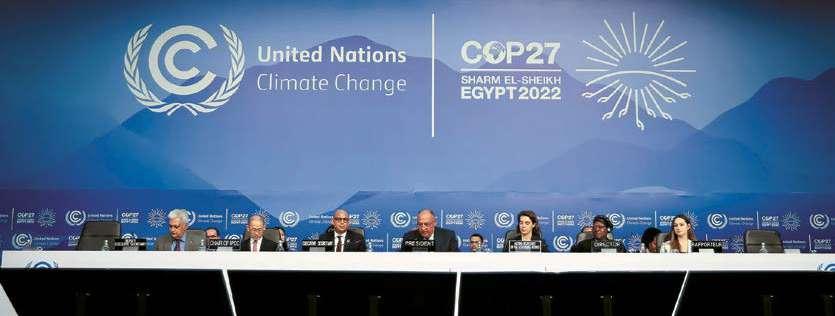
BUSINESS & FINANCE
Source: aiib
ANSHAN TO INVEST RMB 1 BILLION IN LITHIUM CARBONATE PROJECT IN JIANGXI
Lithium carbonate is an essential upstream material for the production of Li-ion batteries, and its price has repeatedly climbed to a new high in the recent period owing to the boom in the NEV market. Within the market for lithium carbonate, suppliers are accelerating the pace of their capacity expansion activities in order to meet the growing demand.
Anshan Heavy Duty Mining Machinery Co. Ltd. announced that it has signed an investment agreement with the government of Guixi. Under the agreement, Anshan will set up a lithium carbonate project through another entity. The registered capital of this entity is set at RMB 1 billion, and the project will have a processing capacity of 50,000 tons per year. Guxi is a county-level city in China’s Jiangxi Province. Here, “processing capacity” encompasses both production capacity and refining capacity. Based on Anshan’s plan, the project is going to take up an area of 728 mu within a local eco-technology industrial park. The project will be implemented in two phases. The first phase will set up 25,000 tons per year of refining capacity, whereas the second phase will set up 25,000 tons per year of production capacity. Construction is provisionally scheduled to begin in 2023. According to its statement about the project, Anshan said the investment is line with the policies formulated by the Chinese government for the promotion of new energy technologies and their applications. The investment also supports China’s industrial policies. Regarding the benefits of the project to the company, Anshan said raising production capacity for lithium carbonate will lead to an improvement in competitiveness and an increase in revenue. At the same time, the company and the local government will mutually benefit through the synergy of each other’s expertise as they strive to reach a common economic development goal.
Anshan’s main businesses are mining, construction, and heavy equipment. The company, in particular, develops and manufactures grinding and sorting machines for ores and coal materials. It also provides sales and aftersales services. In June 2021, Anshan announced that it was entering the market for lithium materials by using its own funds to acquire a 51% stake in Jiangxi Xing Li Technology Co. Ltd. However, the acquisition was suddenly called off this January. The reason that Anshan gave for canceling the deal was that ore prices and the macroeconomic environment were too volatile during the negotiation period, so the two parties were unable to reach an agreement on the final transaction price.
With regard to Anshan’s financial performance, the company’s revenue for the first three quarters of 2022 came to around RMB 607 million, showing a year-on-year growth rate of 281.84%. The company’s profit (attributable to the parent company) for the same three-quarter period came to around RMB 84.33 million, showing a year-on-year growth rate of 611.17%. For this third quarter, its quarterly revenue rose by 646.79% year on year to RMB 318 million, and its quarterly profit rose by 303.61% year on year to RMB 35.6535 million.
Source: energytrend
INDIA ANNOUNCES ADDITIONAL CONTRIBUTION OF USD 5 MILLION TO ASEAN-INDIA SCIENCE AND TECHNOLOGY FUND


The announcement came during the three-day visit of Vice President Jagdeep Dhankhar to Cambodia for ASEANIndia and East Asia summits. He addressed the ASEAN-India summit. Talking to reporters, Saurabh Kumar, Secretary (East) in the Ministry of External Affairs, said that both India and ASEAN vowed to advance maritime cooperation, including in maritime security.
“The Vice President announced an additional contribution of USD 5 million by India to the ASEAN-India science and technology fund to enhance our cooperation for emerging areas of public health, renewable energy and smart agriculture…” Kumar said.
ASEAN-India Science & Technology Collaboration formally started in 1996 with the establishment of the ASEAN India S&T working group (AIWGST).
52 EQ NOVEMBER 2022 www.EQMagPro.com ELECTRIC VEHICLE
Nevertheless, in the same month, Anshan offered RMB 230 million to obtain a 70% stake in Jiangxi Jinhui Recycling Resources Co. Ltd. Then, this May, Anshan also took a 15% stake in Hongyuan Mine Industry (Pingjiang County) Co. Ltd. Jinhui specializes in sorting ores to find lepidolite, while Hongyuan produces spodumene.
Phnom Penh India announced an additional contribution of USD 5 million to the ASEAN-India science and technology fund to enhance cooperation in sectors of public health, renewable energy and smart agriculture.
The Vice President of India, Shri Jagdeep Dhankar
Shri Saurabh Kumar, Secretary (East), Ministry of External Affairs
AIIB AND GEAPP ENTER USD1 BILLION INVESTMENT PARTNERSHIP TO FUND THE ENERGY TRANSITION IN ASIA AND BEYOND


at COP27, the Asian Infrastructure Investment Bank (AIIB) and the Global Energy Alliance for People and Planet (GEAPP) announced a strategic investment partnership mobilizing up to USD1 billion for the financing of green energy transition and renewable energy projects, in both the public and private sectors.
The partnership sees AIIB and GEAPP cooperating through a shared vision to address the energy transition challenges in Asia and beyond, through the identification of co-financing opportunities for projects and programs of common interest in grid-based renewables, distributed renewables, and energy transitioning areas. It follows extensive cooperation between AIIB and GEAPP over the past year and is the first time AIIB has partnered with a global philanthropic foundations-led initiative. Building on AIIB’s track record of accelerating investment in Sustainable Infrastructure for Tomorrow, the partnership will enhance assistance in areas such as co-financing operations and private capital mobilization. Capital will be directed to those countries that are both eligible for AIIB’s financing activities and meet its strategies and policies, while also being areas of GEAPP activity in alignment with and furtherance of GEAPP’s charitable objectives.
Simon Harford, CEO of GEAPP stated: “Last year, clean energy generation grew by 522 TWh, about a quarter of what is needed to end energy poverty. However, most of this generation occurred in developed countries. “As a global MDB, AIIB has the capital, convening power and commitment to invest in innovative, clean energy projects across developing countries, which makes the Bank an ideal partner to join GEAPP. Together we will deliver transformational projects that accelerate and scale the energy transition for communities in Asia and beyond.”

AIIB President Jin Liqun remarked upon the significance of the partnership and strengthened collaborative ties with GEAPP: “Despite challenges last year, AIIB achieved a 48% climate finance share of total approvals in 2021. Through our timely collaboration, AIIB will continue striving to find new ways to provide our growing community of Members with access to additional capital and resources. We highly anticipate a fruitful collaboration with GEAPP and look forward to paving the way toward the greater, greener good.”
An exchange of Letters of Intent was completed at a signing ceremony in Sharm El-Sheik, Egypt. AIIB Vice President for Policy and Strategy, Sir Danny Alexander, and GEAPP’s CEO, Simon Harford, signed the documentation and were joined by Jin Liqun, President of AIIB; Dr. Rajiv Shah, President of The Rockefeller Foundation; Per Heggenes, CEO of IKEA Foundation; and Dr. Andrew Steer, President and CEO of Bezos Earth Fund.
AIIB Vice President for Policy and Strategy, Sir Danny Alexander commented: “Our participation in GEAPP marks yet another step forward in our Bank’s growth, in unlocking new resources through co-financing measures, to meet our ambitious climate targets while helping support better socioeconomic outcomes where populations are most vulnerable to climate change. Our joint work will be focused on project collaboration, and AIIB is delighted to join the global alliance of GEAPP as an investment partner in financing a greener, more sustainable future.”

Source: aiib



www.EQMagPro.com 53 EQ NOVEMBER 2022 BUSINESS & FINANCE
INDIA SAVES $4.2 BN IN FUEL COSTS VIA SOLAR GENERATION IN
FIRST HALF OF 2022: REPORT
India saved $4.2 billion in fuel costs through solar energy generation and avoided an additional 19.4 million tonne (mt) of coal in the first half of the year, a study said. The report also said the contribution of solar generation in seven Asian countries – China, India, Japan, South Korea, Vietnam, the Philippines and Thailand – avoided fossil fuel costs of approximately $34 billion from January to June 2022. The report compiled by energy think tank Ember said India had been facing the high price of coal and this is one of the main factors in the ongoing power crises. However, the country managed to save $4.2 billion in fuel costs in the reviewed period and also avoided the use for an additional 19.4 mt that could have further stressed the strained domestic energy supply. The report said as many countries continue to revise their energy development plans, the volatility in commodity markets and the record-breaking fuel costs affecting the price of electricity everywhere must serve as a warning against continued fossil fuel dependence.
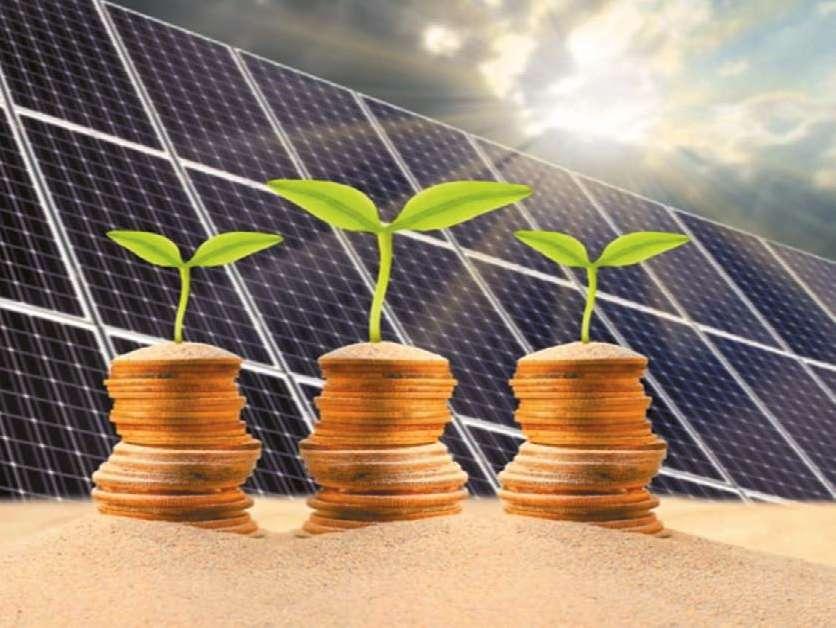
This needs to be translated into more ambitious solar deployments, capitalising on the massive solar potential in the region, the think tank said in the report.Solar on the grid is already contributing meaningfully to meeting electricity demand, the report said. Assuming solar replaced the most expensive fossil-based electricity (i.e. either coal, gas or oil), the think tank said its analysis found that the contribution of solar generation in seven Asian countries – China, India, Japan, South Korea, Vietnam,
the Philippines and Thailand – avoided fossil fuel costs of approximately $34 billion from January to June 2022. The majority of these estimated savings were in China, where solar met 5 per cent of the total electricity demand and avoided approximately $21 billion in fossil fuels imports from January to June 2022, the report said. Japan saw the second biggest contribution with $5.6 billion in avoided fuel costs thanks to solar power generation alone, which reached record levels for the country in May this year, the think tank said in the report. Vietnam`s solar power avoided $1.7 billion in potential fossil fuel costs, it said, adding that notably, Vietnam`s solar generation was close to zero Terawatt-hour (TWh) in 2018. In 2022, solar accounted for 11 per cent (14 TWh) of electricity demand from January to June, the report said.In Thailand and the Philippines, where the growth in solar has been slower, the avoided fuel cost is still notable, the think tank said in a report. While solar only accounted for 2 per cent of Thailand`s electricity in the first six months of 2022, an estimated $209 million of potential fossil fuel costs were avoided. Similarly, the report said Philippines avoided $78 million in fuel costs, despite solar accounting for only 1.7 per cent of generation.
In South Korea, solar had a 5% generation share in the first half of the year, avoiding potential fossil fuel use costing $1.5 billion. In many geographies, the think tank says solar power offers the cheapest electricity in history. In the wake of soaring fossil fuel prices, the importance of diversified and domestic renewable energy has only become clearer. The report said the cost of continued reliance on expensive fossil fuels is evident in the supply crunches and increasing electricity prices that many countries are seeing today.
54 EQ NOVEMBER 2022 www.EQMagPro.com BUSINESS & FINANCE
The report compiled by energy think tank Ember said India had been facing the high price of coal and this is one of the main factors in the ongoing power crises.
Source: PTI
THE $21M COWESSS FIRST NATION SOLAR PROJECT IS NOW UP AND RUNNING
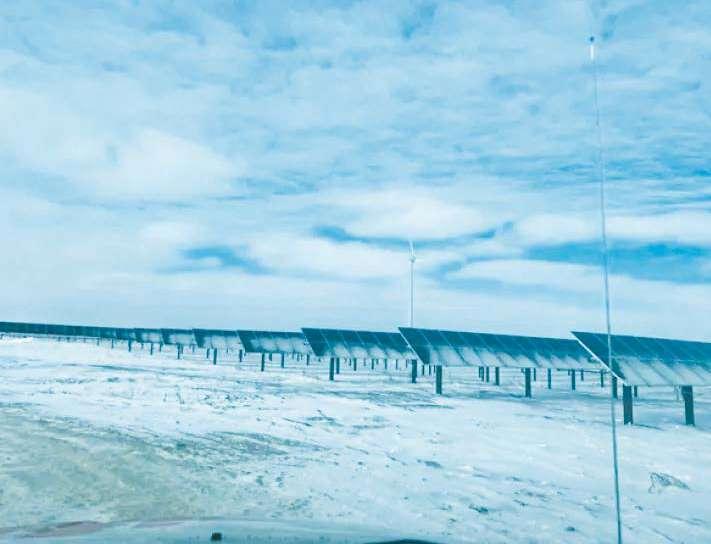
The $21 million Avasis Solar Project, located on Cowes First Nation Reserve land about three kilometers southeast of Regina, marked its official grand opening. According to SaskPower, it will provide 10 megawatts of solar power to the provincial grid – enough to power an average of 2,500 homes per year. Cowesses chief Cadmus Delorme hopes the project will inspire other Saskatchewan First Nations to participate in renewable energy projects.
You can do what the Couse is doing today, Delorme said at a ceremony. “Just make sure you’re on the table, know your values and have experts on hand to help lead a project of this nature that we know we’re capable of.”
The solar project was developed by Avesis Solar LP, a partnership between Cause’s First Nation and Elemental Energy. Cowesses currently owns 95 percent of Awasis, and Elemental Energy owns the remaining 5 percent. Awasis is the Cree name of Littlechild, the last hereditary chief of the Caucasus, said Delorme, and the Solar Project is named to honor the chief, “who agreed to the treaty that led us to this relationship today.” The power generated by the plant will be sold to SaskPower for the next 20 years as part of the power purchase agreement.
“This project is going to bring 20 years of economic prosperity,” Delorme said. A portion of the revenue from the project will go towards CAVES’ goal of becoming Canada’s greenest first nation. “We will use the revenue from this project
to reinvest in our renewable energy projects,” Delorme said. “Second, some of the profits will go to the un-financed areas – language, family and culture closed and reserved.”
Federal funding helps Cauce-led project

Work on the site began in 2019, with Cause Citizens managing the Avasis project. Delorme credits the Truth and Reconciliation Commission’s Call to Action 92 for helping make the project a possibility – which focuses on economic reconciliation. The federal government provided Awasis $18.5 million for the project, allowing Cowesses to partner with companies such as Elemental Energy.Federal Natural Resources Minister Jonathan Wilkinson said, “I think we can all agree that we need to think about how we build more renewable energy and non-emitting sources of energy into our grids.” “It’s going to be important not only to achieve our climate goals but also to advance a competitive economy.” “Avasis” is a great example of a partnership between the province, the federal government, and of course the first nation to lead the project, Wilkinson said.
According to a news release from the federal government, and by about 350,000 tons over the project’s expected 35-year lifetime, Avasys is expected to reduce greenhouse gas emissions by about 14,000 tons in its first year of operation. The total is equivalent to the emissions of more than 70,000 gas-powered cars driven for a year, according to a federal government news release.
www.EQMagPro.com 55 EQ NOVEMBER 2022 BUSINESS & FINANCE
Source: PTI
A multi-million dollar solar power project primarily owned by the Cousins First Nation is now online.
CUMMINS INC. AND TATA MOTORS SIGN A MEMORANDUM OF UNDERSTANDING TO ACCELERATE INDIA’S JOURNEY TOWARDS

‘NET ZERO’ EMISSIONS WITH HYDROGEN POWERED COMMERCIAL VEHICLE SOLUTIONS



Cummins Inc., a global power solutions and hydrogen technologies provider, and Tata Motors, the largest commercial vehicle manufacturer in India, signed a Memorandum of Understanding (MoU) to collaborate on the design and development of low and zero-emission propulsion technology solutions for commercial vehicles in India, including hydrogen-powered internal combustion engines, fuel cells, and battery electric vehicle systems.
The MoU was signed in the presence of N Chandrasekaran, Executive Chairman, Tata Sons, and Tom Linebarger, Executive Chairman, Cummins Inc., on November 14, 2022, at the Tata Sons Headquarters – Bombay House, in Mumbai, India. Senior officials and dignitaries from Cummins India and Tata Motors were also present during the MoU signing ceremony.
On this occasion, Mr. N Chandrasekaran, Executive Chairman, Tata Sons and Chairman, Tata Motors said, “The shift to sustainable mobility is irreversible and Tata Motors is committed to be amongst the leaders of green mobility. We are taking definitive steps to drive this global megatrend forward in each of our businesses. Working with partners who share the same vision is essential for this transition and we are delighted to strengthen our long-standing relationship with Cummins for their next generation, hydrogen propulsion systems. We are excited to indigenize the cutting-edge hydrogen technology to offer our customers an expanded portfolio of green and future ready commercial vehicles, accelerate the adoption of sustainable mobility in the country, and to contribute towards India’s ‘net zero’ carbon emission goals.”

In 1993, the two engineering companies came together to fulfill their goal of introducing best-in-class cleaner vehicle technology solutions to the Indian market – Tata Motors to deliver best-in-class mobility solutions in India and Cummins to power that vision through their products and services. Driven by a shared ideology, common vision, and values of Integrity, Teamwork, and Excellence, this partnership has grown from strength to strength over the last three decades. This MoU further solidifies their association and is aligned with India’s vision of ‘Energy for Sustainable Growth’ and achieving net zero carbon emissions by 2070. India will be one of the first markets to receive Cummins’ Hydrogen engines, an important technology to help drive decarbonization.
CUMMINS LOW AND ZERO EMISSION PRODUCTS
Commenting on the strategic collaboration, Mr. Tom Linebarger, Executive Chairman, Cummins Inc., said, “Climate change is the existential crisis of our time, and this collaboration between Cummins and Tata Motors accelerates our ability to address it. Cummins is well-positioned to help our customers successfully and seamlessly transition to economically viable decarbonized solutions. Cummins and Tata Motors have a strong history of partnership, and the next step into low and zero-emissions technologies is an exciting development for zero-emissions transportation. Our collaboration in India is an important milestone for Cummins and Tata as we work together to accelerate the shift to a carbon-free economy and a zero-emissions world. We strongly believe that this collaboration is a significant step forward to achieving India’s Green Hydrogen Mission. I am excited to enable powering a cleaner and greener India.”
Cummins B6.7H hydrogen engine with up to 290 hp (216 kW) output and 1200 Nm peak torque is an all-new engine platform featuring cutting-edge technology to enhance power density, reduce friction losses and improve thermal efficiency. As a result, performance is transparent and compatible with the same transmissions, drivelines, and cooling packages. The B6.7H hydrogen engine is being derived from Cummins fuel-agnostic platform offering the benefit of a common-base architecture and low-to-zero carbon fuel capability. Cummins zero-emission product portfolio also includes its fourth-generation hydrogen fuel cell engine. Designed to meet the dutycycle, performance and packaging requirements of medium and heavy-duty trucks and buses, the fuel cell technology is available in 135 kW single- and 270-kW dual modules. The systems have strong operating cycle efficiency and durability for a lower total cost of ownership.
Cummins battery portfolio includes both Lithium Iron Phosphate (LFP) and Nickel Manganese Cobalt (NMC) battery packs, each of which targets a different duty cycle and use case. Destination Zero™ is Cummins’ strategy to go further and faster to reduce the greenhouse gas (GHG) and air quality impacts of its products and reach net-zero emissions by 2050. Cummins is pursuing a dual-path approach, meaning the company is reducing emissions from internal combustion engines while simultaneously investing in new, zero-emissions products. The company spends approximately $ 1 billion annually on research and development of future technologies.
Cummins’ approach lowers emissions today; incorporates well-to-wheel emissions reductions by matching technology readiness with infrastructure readiness; drives wide-scale adoption due to affordability by using the right technology at the right time; and will achieve net-zero emissions by 2050.
56 EQ NOVEMBER 2022 www.EQMagPro.com
BUSINESS &
FINANCE
AT COP27, AIIB TAKES ACTION TO FURTHER PROMOTE CLIMATE-RESILIENT INFRASTRUCTURE INVESTMENTS
The Asian Infrastructure Investment Bank (AIIB) announced at COP27 that it has joined the Coalition for Climate Resilient Investment (CCRI), fostering a strategic partnership to apply climate-resilient solutions.



Launched at the UN Climate Action Summit in 2019 as a private sector-led initiative, CCRI supports investors and policy makers to better understand and manage physical climate risks. As a collaborative platform, CCRI allows members to develop innovative and practical methodologies to advance climate resilience in infrastructure investments. The coalition includes governments, international organizations, technical institutions, ratings agencies and private financial institutions worldwide.
Cooperation with CCRI will help AIIB deepen its expertise in climate risk management and enable the Bank to be part of a wide network of professional organizations that promote climateresilient infrastructure investments, said AIIB Vice President for Policy and Strategy Danny Alexander. “Maintaining true momentum on climate action requires the whole human society— across industries, continents and borders—to work together on impactful initiatives and projects. As a multilateral development bank established in the 21st century, AIIB is committed to financing Infrastructure for Tomorrow. We are delighted to further enhance our partnership with CCRI to finance a broader scale of climate-resilient infrastructures that benefit millions of people in Asia and beyond.”


Green infrastructure is one of AIIB’s four thematic priorities as prescribed in its Corporate Strategy. AIIB has committed to achieving at least 50 percent of its actual approved financing to be climate financing by 2025 and has projected USD50 billion in investments for climate finance by 2030.
At a side event of COP27, Alexander announced that AIIB is aiming to issue its first climate resilience bond next year, with 100 percent of underlying project pipeline targeting investments in climate-resilient infrastructure. The bond will be issued under AIIB’s Sustainable Development Bond Framework, which clearly outlines how AIIB is adhering to the principles set out in its Environmental and Social Framework that guides project selection, and how it is helping its members to meet their commitments under the Paris Agreement and the UN Sustainable Development Goals.
Meanwhile, CCRI Executive Director Carlos Sanchez said: “By bringing together industries and leaders across the finance and investment world, CCRI is pioneering solutions that are both innovative and practical to ensure infrastructure investments incorporate physical climate risks and advance climate resilience. We welcome multilateral partners like AIIB to join us and contribute its rich experience in climate financing for the benefit of our members.” Source: aiib
www.EQMagPro.com 57 EQ NOVEMBER 2022
BUSINESS & FINANCE
NEW ROADMAP PROVIDES PATH TO RAPIDLY AND EQUITABLY SCALING GLOBAL SOLAR INVESTMENT AND DEPLOYMENT
at COP27, World Resources Institute (WRI), the International Solar Alliance (ISA), and Bloomberg Philanthropies launched Our Solar Future: Roadmap to Mobilize USD 1 Trillion by 2030 to help meet the urgent need for a massive and more equitable scale-up of investment in solar energy.
ur Solar Future outlines priority actions by governments, development finance institutions, and other actors to rapidly scale solar investment. It was developed in collaboration with CONCITO, the Investment Fund for Developing Countries, and the World Climate Foundation. In this pivotal moment — as the world grapples with escalating climate impacts and energy security and supply chain issues — scaling up solar energy is essential for decreasing dependence on fossil fuels and ensuring sure all people have access to clean, affordable and reliable energy. In this pivotal moment — as the world grapples with escalating climate impacts and energy security and supply chain issues — scaling up solar energy is essential for decreasing dependence on fossil fuels and ensuring sure all people have access to clean, affordable and reliable energy. Our Solar Future builds on the Solar Investment Action Agenda that was launched at COP26 and identifies areas for broader collaboration to accelerate the transition to solar energy:
• Setting and tracking specific, time-bound solar targets.
• Replicating and scaling regional or global entities focused on risk mitigation.
• Coordinating international efforts to promote good practices in clean energy regulation.
• Establishing an international platform to promote standardization in solar finance and supporting common systems to track progress, performance and impact.

• Demonstrating credible solar project pipelines.
• Engaging rating agencies to review or develop innovative rating tools for emerging market blended finance funds.
• Supporting global scale-up of vendor finance.
By tackling market barriers, reducing investment risk in developing and emerging economies, and spurring collaboration, policymakers can work with businesses and the financial sectors to expand the scale and speed of solar deployment. According to WRI’s 2022 State of Climate Action report, the share of zero-carbon power needs to increase at nearly six times the current rate to put the world on a 1.5°C-compatible pathway. “Solar energy deployment is growing at an exponential pace — but it still must be rapidly scaled up for the world to be on track for a 1.5 °C future,” said Ani Dasgupta, President and CEO, World Resources Institute. “Solar energy is a critical tool to help decarbonize our global economy, while also offering a more affordable, reliable and secure source of energy for all people, especially those in developing economies.”
OUR SOLAR FUTURE EXAMINES SCALE-UP OPPORTUNITIES IN FOUR MARKET SEGMENTS:
Utility-scale solar projects offer a viable pathway to accelerate the shift away from fossil fuels, reduce energy cost, and improve reliability of electricity supply. Off-grid and decentralized solar applications are important to affordably reach the 785 million people who still need energy access and the 2.6 billion who need reliable grids. Energy storage and grid flex ibility
infrastructure investments — including for power transmission and distribution—are essential to integrate solar energy resources into regional electricity infrastructure and facilitate load management. Advanced solar and storage technologies are important for scaling solar deployment in difficult-to-serve industries and locations and for addressing intermittency issues. “The goal of mobilising USD 1 trillion in solar investments is ambitious but is feasible given the increasing commitments by private investors, governments and donors to invest in renewable energy, battery storage and grid integration,” said Dr. Ajay Mathur, Director General, International Solar Alliance. “The Roadmap is intended to stimulate joint commitments for significant near-term action by governments, development financial institutions, and private investors to help meet the Paris climate goals, SDGs and net-zero targets, with solar at the core of this transition.” Cost declines for solar energy and battery energy storage have made solar technologies cost-competitive with fossil fuels and other renewable energy solutions. However, due in part to the high cost of capital and limited financing models in many developing countries, there is vast untapped solar energy potential in many regions. Concerted efforts and innovative solutions are needed to scale solar investment — particularly in sub-Saharan Africa, Southeast Asia and the Latin America and Caribbean region. “Across the world, we’ve seen it’s possible to expand access to clean, affordable energy and cut carbon emissions,” said Michael R. Bloomberg, UN Secretary-General’s Special Envoy for Climate Ambition and Solutions and founder of Bloomberg Philanthropies. “Breaking down barriers to solar power is critically important to the clean energy transition, and this new roadmap can help guide the investments that communities need to ramp up solar — and reap the economic and health benefits it brings.” To mobilize $1 trillion of investment, development finance institutions have a critical role to play in scaling up blended finance, concessional credit lines, and other risk mitigation instruments to help bring in private investors. Priority actions at the country level — which can be taken by governments alone or in collaboration with utilities, national development banks, commercial banks, and development finance institutions — include aggressively addressing policy and regulatory barriers to solar investment and building momentum in project pipelines. In addition, coordinated and ambitious action among international institutions is needed to deliver investment at scale.
58 EQ NOVEMBER 2022 www.EQMagPro.com
Source: wri BUSINESS & FINANCE
O
KKR TO INVEST $400 MILLION IN DECARBONIZATION PLATFORM SERENTICA RENEWABLES

Global private equity giant KKR has agreed to invest $400 million (around Rs 3,300 crore) in Serentica Renewables, a decarbonization platform that seeks to enable energy transition by providing clean energy solutions.
KKR makes its investment from its Asia Pacific Infrastructure strategy. The transaction in Serentica marks KKR’s latest investment in India and the renewables sector, both the companies said in a statement. Established in 2022, Serentica Renewables is 100% held by Twinstar Overseas Ltd, which is owned by Indian businessman Anil Agarwal’s Volcan Investments Cyprus Ltd. Agarwal’s Twinstar Overseas Ltd also owns controlling stakes in Sterlite Power Transmission Ltd and Sterlite Technologies Ltd. Gurugram-based Serentica is focused on industrial decarbonization, by making renewables the primary source of energy for the commercial & industrial segment which consumes more than 50% of the electricity generated in India. Serentica aims to provide assured renewable energy through a combination of solar, wind, energy storage and balancing solutions. KKR’s most recent investment in the renewable space was $450 million (around Rs 3,585 crore) in Hero Future Energies (HFE), the renewable energy arm of the Hero Group.


“This investment will allow us to leap ahead in our vision of decarbonizing large energy intensive industries and help in reversing climate change. This transaction is amongst the larg- est industrial decarbonization investments in India to date and carries forward the global decarbonization agenda which is centre stage at COP27 (2022 United Nations Climate Change Conference),” said Pra- tik Agarwal, director of Serentica Renewables.
“Our investment in Serentica reflects KKR’s confidence in India’s renewables sector and our commitment to advancing the energy transition in India. Energy-intensive, heavy-industry companies play an im- portant role in society but have traditionally faced more challenges in meeting energy needs sustainably. With Serentica, we look to sup- port these companies in their decarbonization objectives,” said Hardik Shah, partner at KKR.
Standard Chartered Bank acted as the sole financial adviser to Serentica for this transaction. Serentica recently launched Renewable Energy Platform in India to deliver round-the-clock clean energy solutions for large-scale, energy-intensive industrial customers. This includes providing renewable energy solutions through long-term power purchase agreements (PPAs) and working closely with customers to design their paths to netzero electricity, the statement added. Currently, the company has entered into three long-term PPAs and is in the process of developing over 1,500 MW of solar and wind power projects across various states including Karnataka, Rajasthan, and Maharashtra.
Serentica’s medium term goal is to install 5,000 MW of carbon-free generation capacity coupled with different storage technologies and supply over 16 billion units of clean energy annually and displace 20 million tonnes of CO2 emissions. The renewable firm is hopeful that the rise in energy demands alongside India’s developmental needs and prosperity, holds significant potential for renewable energy to play an important role in meeting the energy needs of the industrial sector in a sustainable manner. In Asia Pacific, KKR sees renewables as core to its infrastructure strategy and seeks to invest behind the significant opportunities across the region. In 2020, it had set up Virescent Infrastructure, a renewable energy platform to own and operate renewable assets in India. This year, KKR launched Aster Renewable Energy, a renewables platform to develop, build and operate solar, wind, and energy storage projects in Taiwan and Vietnam, with a view to expand to other markets across the region. KKR sponsors investment funds that invest in private equity, credit and real assets and has strategic partners that manage hedge funds. The private equity investor has committed over $25 billion in equity globally to climate and environmental sustainability investments as on 31 December, 2021.
& FINANCE
Source: vccircle
BUSINESS
REFINING IN THE ENERGY TRANSITION THROUGH 2040
The size of the global refining industry varies dramatically across different energy transition scenarios by 2040. Assumptions on electric-vehicle penetration, policy commitments, and rationalization behavior are key drivers of the difference in outcomes.
While the COVID-19 pandemic and the conflict in Ukraine have triggered extreme volatility and uncertainty in the refining product and fuel markets, the transition to a low-carbon economy continues to bring significant challenges and opportunities to the refining sector. Increasing national and industry climate commitments and technological improvements, as well as changing
consumer preferences, will shape the outlook for refining in the next two decades. In this article, we explore what the refining industry could look like across a spectrum of potential outcomes for the energy transition. The potential scenarios around the size of the refining industry and its profitability are based on McKinsey Energy Insight’s proprietary market balancing, oil pricing, and refining margin models.
Global liquids demand is expected to peak in the next decade across energy transition scenarios. Global liquids demand is expected to peak in the next five to ten years, depending on the pace of technological innovation and the net-zero ambition levels of governments.1 In the Current Trajectory (CT) scenario, the current trajectory of technology improvements, particularly in electricvehicle (EV) battery technology, continues, supported by the climate policies and targets announced at the end of 2021. In the Further Acceleration (FA) scenario, improvements in battery costs and more stringent government targets in transport advance the peak several years earlier.
Biofuels, H2-enabled synfuels, and carbon capture, utilization, and storage (CCUS) make more meaningful contributions to demand and emissions-reduction targets by 2040. Beyond previously announced legislation, this scenario assumes that recently proposed net-zero pledges (as in the United States [US] and China) are also achieved in time. In the Fading Momentum (FM) scenario, the global transition away from fossil energy is delayed in the next decade by prolonged disruptions in global supply chains and muted government ambition. Oil demand does not peak until the early 2030s and most of the developing world is still reliant on fossil oil through the 2040s.
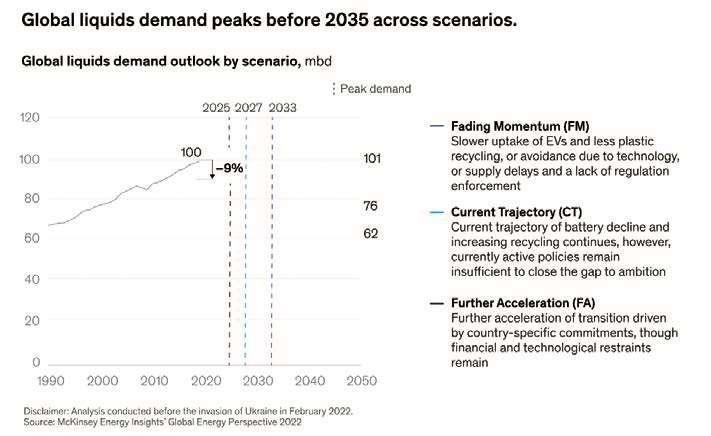
60 EQ NOVEMBER 2022 www.EQMagPro.com
REASERCH & ANALYSIS
Road transport is the main driver of the liquids demand peak, accounting for 90 percent of the decline in global liquids demand between 2019 and 2040. The pace of EV adoption makes up most of this decline by the next decade, once most of the impact of improving engine efficiency on demand is realized. In the CT scenario, EV sales reach around 50 percent of new vehicle sales globally across all vehicle segments as early as 2030, when battery costs for EVs reach parity with internal combustion engines (ICE).

In the FA scenario, further reduction in battery costs and widescale internal-combustion-engine bans across major economies raise EV penetration to 70 percent of new vehicle sales. Adoption is rapid even in developing countries and regions such as India, Africa, and Southeast Asia. In the FM scenario, the pace of EV adoption is limited by supply-chain issues, and EV penetration surpasses 50 percent sometime after 2035. By 2040, demand is 15 million barrels per day (mbd) higher in road transport than in the FA scenario.
The outlook for net capacity growth follows the demand outlook by scenario, with global capacity growing in the FM scenario by eight mbd, while the CT and FA scenarios would see significant capacity rationalizations of ten mbd to 24 mbd by 2040 to balance demand.Refining capacity in North America and Europe is most at risk due to the earlier expected peak in global liquids demand relative to the rest of the world. While refiners in the US have a competitive advantage owing to relatively low energy and feedstock costs and proximity to growing export markets, they are nonetheless exposed to falling margins in the European market, which sets prices in the US. As a result, between 5 and 41 percent of refining capacity in North America could face negative net-cash margins by 2040, depending on the scenario. In Europe, total capacity at risk of closures and conversions is greater due to the faster expected decline in regional demand, higher energy costs, and rising CO2 prices under the EU Emissions Trading System (ETS). Even in the FM scenario, around 20 percent of European refining capacity would face the pressure of negative margins by 2040, compared to 60 percent in an AT scenario.
The biggest variation exists in Asia, where the market either grows in the FM scenario or shrinks in the CT and FA scenarios, depending on assumptions for China. While strong demand growth supports net-capacity growth in the FM and CT scenarios in China through 2040, Chinese oil demand peaks earlier in the FA scenario. Net exporters would likely need to rationalize capacity or increase competition with the US Gulf Coast to place products in the last few remaining growth regions (such as Latin America and Africa).
In our analysis, we expect refineries most likely to close or undergo a terminal or biofuels conversion if they have some of the following characteristics: a simple configuration, coastal location with exposure to export competition, non-integration with petrochemicals, or private ownership.
www.EQMagPro.com 61 EQ NOVEMBER 2022
Road transport is the main driver of peaking liquids demand across scenarios
& ANALYSIS
Refining capacity in OECD regions is most at risk across scenarios
REASERCH
Wide range in regional refining value pools by 2040
By 2040, the global refining industry could either retain its size or lose as much as 75 percent of its value on an EBITDA-equivalent basis, depending on the scenario. In the FM scenario, the valuepool decline in OECD regions is mostly offset by growing value pools in the rest of the world, led by Asia and the Middle East. The global refining value pool stabilizes at around $150 billion on average between 2030 and 2040, versus an average $156 billion between 2015 and 2019.

In the CT and FA scenarios, the global refining value pool falls by between 60 and 75 percent of average historical levels. In these scenarios, a growing momentum in government policies and technology could help countries transition from fossil fuels to a primary energy mix dominated by renewable electricity by 2040. Refineries will also likely play a key role in the new low-carbon energy system as suppliers of green hydrogen and biofuels.

62 EQ NOVEMBER 2022 www.EQMagPro.com
Source : mckinsey REASERCH & ANALYSIS
ICONIC WORLD HERITAGE GLACIERS TO DISAPPEAR BY 2050, WARNS UNESCO

Glaciers in a third of sites are under threat, regardless of efforts to limit temperature increases.
However, the study outlines that it is still possible to save the other two-thirds, if the rise in global temperatures does not exceed 1.5°C compared to the pre-industrial era. UNESCO says that this will be a major challenge facing delegates at the upcoming COP27. Fifty UNESCO World Heritage sites are home to glaciers, representing almost 10% of the Earth’s total glacierized area. They include the highest (next to Mt. Everest), the longest (in Alaska), and the last remaining glaciers in Africa.
CO2 CULPRIT
The UNESCO study, in partnership with the International Union for Conservation of Nature (IUCN), shows that these glaciers have been retreating at an accelerated rate since 2000 due to CO2 emissions, which are warming temperatures. They are currently losing 58 billion tons of ice every year – equivalent to the combined annual water use of France and Spain – and are responsible for nearly five per cent of observed global sea-level rise. The glaciers under threat are in Africa, Asia, Europe, Latin America, North America and Oceania.
CALL TO ACTION



This report is a call to action. Only a rapid reduction in our CO2 emissions levels can save glaciers and the exceptional biodiversity that depends on them. COP27 will have a crucial role to help find solutions to this issue. UNESCO is determined to support states in pursuing this goal, said Audrey Azoulay, UNESCO’s Director-General.

In addition to drastically reduced carbon emissions, UNESCO is advocating for the creation of a new international fund for glacier monitoring and preservation. Such a fund would support comprehensive research, promote exchange networks between all stakeholders and implement early warning and disaster risk reduction measures.
UNCERTAIN FUTURE
Half of humanity depends directly or indirectly on glaciers as their water source for domestic use, agriculture, and power. Glaciers are also pillars of biodiversity, feeding many ecosystems.
When glaciers melt rapidly, millions of people face water scarcity and the increased risk of natural disasters such as flooding, and millions more may be displaced by the resulting rise in sea levels, said IUCN Director General Dr Bruno Oberle.
“This study highlights the urgent need to cut greenhouse gas emissions and invest in Naturebased Solutions, which can help mitigate climate change and allow people to better adapt to its impacts”.
Source: news.un.org
www.EQMagPro.com 63 EQ NOVEMBER 2022
The Jökulsárlón Glacier Lagoon in Iceland, part of a World Heritage Site, is formed naturally from melted glacial water and is perpetually growing while big blocks of ice crumble from a shrinking glacier.
REASERCH & ANALYSIS
PRESSURE INCREASES IN NEGOTIATIONS FOR POLYSILICON AND CELL PRICES; HIGH INVENTORY COULD CAUSE WAFER PRICES TO DROP FURTHER

Polysilicon prices on the whole have been stable this week, but there are signs of slight weakening. Transaction prices of monocrystalline refeeding material have mostly arrived at RMB 308/kg. Transaction prices of monocrystalline dense material have mostly arrived at 305/kg. With orders for November being finalized, transaction prices have remained relatively constant from the previous week. However, the feedback from some polysilicon suppliers indicates that supply is expected to keep growing. This, together with the decline in wafer prices, are gradually putting pressure on polysilicon suppliers during negotiations. As upstream suppliers and downstream customers noticeably try to gain a more advantageous position during negotiations, polysilicon prices could reach an inflection point within this month.
Wafer prices on the whole have also been stable this week. Transaction prices of M10 wafers have mostly arrived at RMB 7.37/pc. Transaction prices of G12 wafers have mostly arrived at RMB 9.71/pc. After price adjustments were made last week, orders are being finalized this week. Furthermore, downstream customers’ demand has been fairly strong. This is because wafer output has elevated on the back of rising polysilicon supply. At the same time, demand is outpacing supply in the cell market. Nevertheless, wafer prices could drop further in the future due to rising inventory. With polysilicon being plentiful, wafer suppliers have maintained a high capacity utilization rate (operating rate). Tier-1 suppliers’ capacity utilization rates are in the 75-85% range, while vertically-integrated manufacturers’ capacity utilization rates are in the 70-100% range. As for the rest of wafer suppliers, their capacity utilization rates are in the 80-100% range.
POLYSILICON WAFER CELL
Cell prices on the whole have held steady during this week. Transaction prices of mono-Si M6 cells have mostly arrived at RMB 1.29/W. Transaction prices of M10 and G12 cells have mostly arrived around RMB 1.34/W and RMB 1.32/W respectively. Cell suppliers are maintaining a high capacity utilization rate because profit margin is high for their products at this moment. Supply still appears to be tight for large-sized cells, but efforts to raise cell prices have been constrained by the decline in wafer prices. Hence, cell suppliers are under a bit of pressure as they negotiate prices during this week. Upward momentum is lacking for cell prices as well.
MODULE
Module quotes on the whole have remained constant from the previous week. Looking at monofacial (single-sided) modules, transaction prices of those with 166mm mono-Si cells have mostly arrived around RMB 1.91/W, transaction prices of those with 182mm mono-Si cells have mostly arrived around RMB 1.97/W, and transaction prices of those with 210mm mono-Si cells have mostly arrived around RMB 2/W. Looking at bifacial double-glass modules, transaction prices of those with 182mm PERC cells have mostly arrived at RMB 1.97/W, whereas trans
action prices of those with 210mm PERC cells have mostly arrived at RMB 2/W. Orders and shipments have been brisker for modules in the recent period as end demand picks up. Some module suppliers have raised their capacity utilization rates so as to meet the rising demand. However, price hikes for cells and glass materials have also increased the cost pressure on module suppliers. Therefore, some module suppliers intend to adjust their quotes when negotiating with customers over orders. Nevertheless, they are having difficulties to get their desired prices due to the consideration about customers’ willingness to accept price hikes. Regarding modules with N-type cells, their price trend is also relatively stable during this week with quotes mostly arriving at RMB 2.16-2.2/W. Regarding prices of auxiliary materials during this week, glass prices have been relatively stable. Prices of 3.2mm and 2.0mm glass have mostly arrived around RMB 28/m2 and RMB 21.5/m2 respectively. The demand for glass materials have climbed further as module suppliers raise their capacity utilization rates. Although some module suppliers face constraints when raising quotes, module shipments continue to be brisk because the overall inventory level was previously low, and module demand for the most part is rigid. Also, demand has elevated for 2.0mm glass.
64 EQ NOVEMBER 2022 www.EQMagPro.com TECHNOLOGY
Source: energytrend
GAUTAM SOLAR LAUNCHES G2X 450 WP M10 HIGH-EFFICIENCY

MODULES TO REVOLUTIONIZE ROOFTOP SOLAR PROJECTS


To enhance the quality of solar products and ramp up the adoption of solar energy in the country, Gautam Solar has expanded its G2X series with the launch of high-efficiency and high-performance 450 Wp solar modules with bigger M10 cells.
Gautam Solar’s 450 Wp – M10 Modules are compact in size and weight, which makes it easier to handle particularly in rooftop solar installations. The modules are easier to carry on the stairs & lift upwards. This results in reduced breakage rates as the modules are light in weight and allow easy handling by the workers. Another benefit of these modules is that they save on module mounting structure costs. They only require two purlins to install compared to the standard four purlins for the higher wattage M10 modules. With dimensions of 1,923 mm x 1,134 mm x 35 mm, the Modules offer a Power per Unit Area of 206.4 W/m2 compared to 210.8 W/ m2 for the 545 Wp Modules. This small trade-off of 2% Power per Unit Area is virtually insignificant in front of the benefits it provides. The modules incorporate multi-busbar technology for reduced internal resistance losses and round ribbons for better light utilization. Through these advanced modules, Gautam Solar, one of the most trusted players in the solar industry, is expected to revolutionize the rooftop solar segment in the country. The modules will be available in both monofacial and bi-facial variants. The module is a 120 half-cut PERC monocrystalline module with high-quality monofacial / bi-facial cells (depending on the variant)
“Gautam
Solar has established strong trust in the market for being committed towards innovating and manufacturing the best-in-the-market solar modules. The new high-performance modules will further boost the transition towards replacing fossil fuel as a source of power with cleaner sources of energy. The modules will specifically be ideal for Rooftop Solar Power Projects which is the market with the biggest growth potential, especially for a country like India. The modules will significantly benefit Rooftop Solar Developers and Solar System Integrators (EPCs),” said Director of Gautam Solar Private Limited Gautam Mohanka.
The new advanced modules are being manufactured at the company’s modern manufacturing facility in Haridwar of Uttrakhand which recently boosted its annual production capacity to 400 MWp with the company eyeing to further expand to 1 GWp in the near future.
www.EQMagPro.com 65 EQ NOVEMBER 2022 TECHNOLOGY
RENEWABLE-ENERGY DEVELOPMENT IN A NET-ZERO WORLD: OVERCOMING TALENT GAPS
The rapid growth of renewables depends on the industry finding enough employees with the right skills and experience.
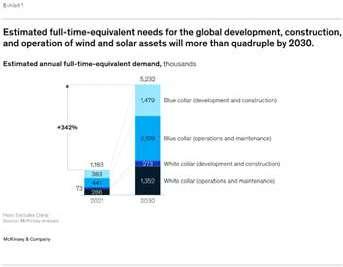
Across economies, the Great Attrition is making it difficult for companies to find and retain employees. Since April 2021, 20 million to 25 million US workers have quit their jobs, and 40 percent of employees globally say they are at least somewhat likely to leave their current position in the next three to six months.1 Companies have yet to get a handle on this problem. Many do not understand why their employees are leaving or know where they are going. Furthermore, 65 percent of these employees will not return to the same industry, complicating matters for companies.2 This environment presents a particularly acute challenge for industries such as renewable energy, in which specific technical expertise and experience are crucial elements of success. The pressure intensifies when those industries are also growing rapidly. McKinsey estimates that the global installed capacity of solar and onshore and offshore wind projects will have quadrupled from 2021 to 2030.3 This huge surge in new wind and solar installations will be almost impossible to staff with qualified development and construction employees as well as operations and maintenance workers (Exhibit 1).
to develop and construct wind and solar plants and another 1.7 million workers to operate and maintain them.4 These include construction laborers, electricians, and operating engineers. Prior to the Great Attrition, the market for such on-site technical occupations was already small and subject to the significant employee turnover common in blue-collar jobs. In Europe, some of these blue-collar professions needed for renewable energy expansion, such as electricians, are in the shortest supply.5 Making matters worse, time to hire in the energy industry is long. For instance, with 1.7 vacancies per unemployed energy technician in Germany, the average time to fill a vacancy for this role is more than six months.6 White-collar workers will also be difficult to find. Until 2030, projects will require a total of 1.3 million additional wind and solar project developers, project managers, finance experts, legal staff, and many other roles to install, operate, and maintain the projected capacities.7 Individuals with successful track records and more than half a dozen years of experience will represent the biggest shortage for these white-collar roles. When companies do manage to hire these workers, keeping them will be crucial. The reasons these employees switch jobs or industries go beyond salaries. For example, one major driver is a lack of career development opportunities, including the chance to switch roles (such as from project manager to technical expert) or to progress quickly in one’s current role. For experienced high performers, compensation mechanisms with limited opportunities for bonuses or upsides also play a role. Additionally, employees in the renewables industry sometimes leave their jobs for cultural or personal reasons. For example, at large utilities that have gone through periods of fast growth over the past decade, decisionmaking processes and collaboration styles have not kept pace with the changing times and have led to employee frustration. Once these white-collar talents leave for more attractive options, they are often removed, at least temporarily, from the job market. Their new employers may use long-term incentives, such as equity options on renewables assets, to bind them to the company for as long as possible, thus exacerbating the scarcity of white-collar talent. The global renewables industry will need an additional 1.1 million blue-collar workers to develop and construct wind and solar plants and another 1.7 million workers to operate and maintain them.
Even if demand for workers in the renewables industry could be met, it’s unclear where these employees will come from in the future. There are too few people with specialized and relevant expertise and experience, and too many of them are departing for other companies or other industries. Once employees leave, replacing them can be extremely difficult for companies. In this article, we delve into the talent challenges the renewables industry faces as it plans for massive scaling and expansion—and what players can do to get ahead of the game.
The sheer size of the talent gap is staggering. Our analysis suggests that between now and 2030, the global renewables industry will need an additional 1.1 million blue-collar workers
As talent has grown scarce, salaries paid by companies in the renewables industry have risen and are expected to keep growing. Notable variations exist among geographies, individual positions, and company types. Unsurprisingly, US companies pay significantly more than their European counterparts: the average US salary is roughly 40 percent higher. The highest salaries belong to senior-management positions in the United States, such as directors or vice presidents of renewables business units. Across different companies—utilities, renewables developers, oil and gas majors, and financial firms—average salaries are comparable but the ranges differ. Utility salaries often don’t reach beyond a certain level, whereas other players, especially oil and gas majors, have more flexibility to offer prospective employees higher salaries and more upside potential (Exhibit 2). These differences confer a competitive advantage
66 EQ NOVEMBER 2022 www.EQMagPro.com
A A SCARCITY OF SPECIALIZED TALENT IN BOTH BLUE- AND WHITE-COLLAR JOBS
INCREASES IN SALARY LEVELS ACROSS THE INDUSTRY RENEWABLE ENERGY
BROAD
on companies with the flexibility and financial power to make the best offers. A decade ago, most people in the renewables industry worked for small and medium-size developers, utilities, or independent power producers. In recent years, large oil and gas companies and financial firms have entered the market. These well-heeled competitors exert pressure on the search for land, wind and solar project returns, M&A options, and talent. They try to attract top performers with offers that include high salaries, bonuses, and long-term incentives. In response, small and medium-size developers have upped their game by offering employees unconventional incentives, such as equity participation in new wind and solar projects. Traditional utility companies, independent power producers, and large renewables developers are having difficulty keeping pace. Although their average salaries are in line with the market, the upside potential they offer to experienced high performers is limited. As oil and gas majors increasingly expand their renewables’ businesses via organic growth instead of acquisitions, the stakes will heighten. These companies will lure more talent from the open job market with attractive offerings, making it even harder for utilities to compete. As a result, utilities risk being left behind in the race to hire top talent.

HOW TO THRIVE ON THE BUMPY ROAD AHEAD
To find the right talent at affordable salaries, renewables players will have to rethink critical HR and recruitment strategies and processes. While they can apply some best practices from other industries, ambitious companies will also want to consider new and unconventional ways of attracting and retaining talent. Five approaches can help companies thrive in this world of increasing talent scarcity: A strong brand that is visible to employees. Attracting a large pool of new talent can present challenges if few people have heard of you or know you are in the renewables business. Companies will want to consider how they are perceived by potential employees in their primary market and across the globe. Global players with a strong brand in their home country tend to underestimate the value of regional branding, which they will need to attract the employees—including those with much-needed specialized talents—that will help them grow in new locations. Additionally, when targeting both blue- and white-collar workers, a strong brand outside of the renewables industry is important. Being part of the cleanenergy transition is not enough of an appeal to compete with other thriving industries, such as tech or other construction sectors, that offer explicit and attractive benefits for employees. Clear career path development for key job positions. A lack of career development opportunity is a major driver of employee attrition. If employees can visualize a future path at their company, they are more likely to want to follow it and stay at the company. Renewable-energy companies will need to articulate their plans for employee development along many paths, offering multiple tracks with different specializations, such as technical, management, and project management. As companies in the renewables industry increasingly go global, they will also need to make temporary relocation to other countries part of an attractive career path. For many decades, companies in the oil and gas industry have been sending their top managers across the globe for their exploration and production businesses; now it is time for pure-play renewable-energy companies to learn from them. Employee incentives. Ambitious and highly educated employees are often motivated to work for companies that allow them to share in its success. Along with classic stock options and awards, long-term incentive programs, such as equity options for newly built wind and solar projects, could help attract new talent and increase the chances that employees will stay for longer. Although these awards might take longer
to materialize due to development and construction lead times, they can be a competitive advantage over industries without aggressive growth expectations. Early capture of high potential employees. The talent scarcity problem is only going to get worse. Recruiting initiatives at the early phases of someone’s career, such as efforts at target universities and vocational schools, can help secure future talent and build a strong bond. At the same time, companies should make sure they have adequate regional recruiting programs so relocated employees can eventually be replaced with local talent. Hiring by acquiring. In a world in which talent is one of the scarcest assets in a renewables business, buying a company for its top talents is an expensive but effective way of acquiring new workers. This form of talent acquisition could become a more common phenomenon, especially for companies looking for very specific technical capabilities, such as energy technicians for renewables operations and maintenance, or for specialized talents in a particular environment, such as developers in a country with an immature renewables industry. Structured training. Having sufficient technicians and other blue-collar workers is a major pain point for the construction, operation, and maintenance of new wind and solar plants. To attract and retain these workers, employers should go beyond wages and use training programs that focus on clear, long-term career path development. This can apply particularly to roles that are temporary. Individuals who begin constructing solar plants in the coming years, for instance, could spend their entire careers doing this type of work, depending on the size of build-out.
www.EQMagPro.com 67 EQ NOVEMBER 2022
Source: mckinsey RENEWABLE ENERGY
RENEWABLE POWER GENERATORS CAN BENEFIT FROM

OPEN ACCESS FRAMEWORK

IIndian power generators in general and renewable companies, in particular, will benefit from the counterparty shift to commercial and industrial (C&I) customers from weak state-owned distribution companies, said Fitch Ratings. The power projects will see higher utilisation and tariffs, and timely clearance of dues, the credit rating agency said. The Indian government has simplified rules governing the Open Access (OA) framework for the procurement and sales of electricity. However, actual and timely implementation remains in the hands of the state regulators. Regulatory uncertainties have deterred C&I customers from taking advantage of OA to buy power on medium- to long-term contracts.
According to Fitch Ratings, almost half of the electricity gener ated in India is consumed by C&I customers. However, less than two per cent is purchased under long-term OA contracts with wind and solar power projects. “The lower participation of C&I customers in the OA facility is a result of regulatory uncertainties. The composition, quantum, and waivers for OA charges vary not only across Indian states but also over time in a state. In certain cases, the final procurement cost to C&I customers for conventional power under the OA facility may turn out to be higher than the cost of buying through the grid, which defeats the overall attractiveness of the OA facility,” Fitch Ratings said.
Source : thestatesman
HUGE POTENTIAL FOR COOPERATION BETWEEN INDIA, KOREA IN CLEAN ENERGY: KOREAN MIN

The minister was speaking at the India Korea Business Partnership Forum organised by the Confederation of Indian Industry (CII) in partnership with the Korea International Trade Association here.
There is huge potential for cooperation between India and Korea in the clean energy sector for realising carbon neutrality, Korea’s Deputy Minister for Trade Jeong Dae-jin said. He also said that if Korea’s manufacturing foundations are combined with India’s information and communications technology (ICT) capabilities, this will contribute to the development of future industries, including electric vehicles and batteries, as well as strengthen the resilience of regional supply chains.
“There is huge potential for cooperation in the clean energy sector when it comes to realizing carbon neutrality. Under our carbon neutrality goals, Korea and India are endeavoring to reduce greenhouse gas emissions, through the deployment of renewable energies as well as the expansion of the hydrogen economy,” CII said in a statement quoting the Korean minister.
Speaking at the event, Special Secretary in the Commerce and Industry Ministry Sumita Dawra said India would like to do an investment roadshow in Korea at the earliest.
Source: PTI
68 EQ NOVEMBER 2022 www.EQMagPro.com
Indian power generators in general and renewable companies, in particular, will benefit from the counterparty shift to commercial and industrial (C&I) customers from weak state-owned distribution companies, said Fitch Ratings.
Jeong Dae-jin, Korea’s Deputy Minister for Trade, said that India and Korea have huge potential for cooperation in the clean energy sector.
RENEWABLE ENERGY
IBM TEAMS UP TO HELP ACCELERATE CLEAN ENERGY TRANSITION
FOR VULNERABLE POPULATIONS

The initiative will support organizations such as United Nations Development Programme, Sustainable Energy for All, Net Zero Atlantic, Miyakojima City Government, and Environment Without Borders Foundation for this IBM Sustainability Accelerator environmental cohort. IBM will donate $30M worth of services by 2023 through the IBM Sustainability Accelerator program.
IBM announced at COP27 the new members of its global pro bono social impact program, the IBM Sustainability Accelerator. This program applies IBM technologies, such as hybrid cloud and artificial intelligence, and an ecosystem of experts to enhance and scale projects focused on populations vulnerable to environmental threats, including climate change. All new members will focus on accelerating clean energy projects. IBM has previously announced it plans to select five organizations for this program each year and expects to provide $30 million worth of services by the end of 2023. According to the International Energy Agency, the impacts of the COVID-19 pandemic, disruptions to global supply chains, and diversion of fiscal resources to keep food and fuel prices affordable, have affected the pace of progress toward the United Nations Sustainable Development Goal (SDG 7) of ensuring access to affordable, reliable, sustainable, and modern energy by 2030.
With the IBM Sustainability Accelerator, we are convening experts and using innovative technologies to help tackle the toughest environmental challenges our planet faces; and transitioning to clean energy is a critical step right now, said Justina Nixon-Saintil, Vice President of Corporate Social Responsibility and ESG at IBM. “With this new cohort, helping marginalized communities get just and equitable access to sustainable energy resources not only helps the world achieve the goal of UN SDG7, but can help in the larger global energy transition.”
After evaluating more than 100 submissions from around the world,

cohort of the program:
United Nations Development Programme: UNDP is working with IBM to increase access to sustainable, affordable and reliable energy in African countries, focusing on those furthest left behind. The goal is to forecast electricity access to better guide policy and investment decisions, using UNDP’s technical knowledge and IBM’s artificial intelligence and geospatial analytics.
Sustainable Energy for All: IBM is working with Sustainable Energy for All to build an intelligent model to project energy needs based on current and future human activity. This model will be designed to help to address key development challenges (e.g., lack of energy access and poor healthcare) and support the development of robust infrastructure planning, such as electrification plans. IBM machine learning and IBM Cloud technology and expertise will be used to build and scale open-access datasets and an energy needs model using temporal and spatial data. Kenya and India are being explored as the first regions to pilot the model.
Net Zero Atlantic: Net Zero Atlantic is collaborating with IBM to create an interactive digital tool that will geospatially display environmental and socioeconomic impacts of possible energy system futures for Nova Scotia. Ultimately, the goal is for Indigenous communities in Nova Scotia to leverage advanced modeling capabilities to inform their input into energy and development planning.
The tool aims to be easy-to-use, locally relevant and time efficient. It will be designed to produce easy-to-understand visual results using IBM technology such as the IBM Environmental Intelligence Suite and IBM Cloud.
Miyakojima City Government: The Miyakojima City Government is working with IBM to support the development of a renewable energy strategy including a microgrid on Miyakojima Island, a distant community facing severe climate issues due to typhoons in Japan, with the goal of helping their residents, who rely on a clean local environment for the tourist industry and agriculture.
Miyakojima City Government and IBM will collaborate to leverage technologies such as IBM Environmental Intelligence Suite weather data and IBM Cloud to model electricity demand and advise energy infrastructure development.
Environment Without Borders Foundation: Environment Without Borders Foundation’s collaboration with IBM will be aimed to develop a platform to forecast, track, and communicate clean energy usage options in Egypt. The goal is to enable resilient and sustainable infrastructure and operations for clean energy in Egypt, helping residents of remote villages for whom energy is currently both expensive and unreliable. The clean energy management platform will leverage IBM Environmental Intelligence Suite and IBM Cloud.
The selection process considered the applicant’s commitment to support communities who are especially vulnerable to environmental threats, its ability to increase access to affordable clean energy services, its strategic focus and transparency on measurement and reporting, among others.
www.EQMagPro.com 69 EQ NOVEMBER 2022
IBM selected these organizations to become the clean energy
RENEWABLE ENERGY
QUARTER RESULTS
TORRENT POWER REPORTS Q2FY 2022-23 RESULTS
REVENUE FROM OPERATIONS
• ₹ 6,703 crs in Q2 FY 2022-23 compared to ₹ 3,648 crs in Q2 FY 2021-22, up by 84%
• ₹ 13,213 crs in H1 FY 2022-23 compared to ₹ 6,747 crs in H1 FY 2021-22, up by 96%
EBITDA
• ₹ 1,258 crs in Q2 FY 2022-23 compared to ₹ 974 crs in Q2 FY 2021-22, up by 29%
• ₹ 2,427 crs in H1 FY 2022-23 compared to ₹ 1,739 crs in H1 FY 2021-22, up by 40%
TOTAL
COMPREHENSIVE INCOME
• ₹ 485 crs in Q2 FY 2022-23 compared to ₹ 367 crs in Q2 FY 2021-22, up by 32%
• ₹ 988 crs in H1 FY 2022-23 compared to ₹ 576 crs in H1 FY 2021-22, up by 72%
Torrent Power Limited (the “Company”) announced financial results for the quarterended September 30, 2022. The major reasons for improvement intheTotal Comprehensive Incomefor the quarter on y-o-y basis are:
• Increase in contribution from franchised distribution business due to reduction in T&D losses on account of continuous and sustained focus on Loss reduction activities and increase in electricity demand;
• Improved performance of licensed distribution businesses;
• Net gain from trading of LNG;

• Increase in Finance Cost;
• Increase in tax expenses;
WAAREE RENEWABLE TECHNOLOGIES
LIMITED
REPORTS 864% Y-O-Y GROWTH IN NET PROFIT FROM H1 SEPTEMBER 2022
Waaree Renewable Technologies Limited, the listed EPC subsidiary of Waaree Energies Ltd, announced its financial results for the second quarter and half year ended September 30, 2022. The company reported a net profit after tax of INR18.08 crore in the September 2022 half year ended against the net profit after tax of INR1.88 crore during the previous half year ended September 2021, confirming a 864% growth Y-o-Y.
KEY HIGHLIGHTS:
● Half year ended revenue from operation of INR 215.59 crore a highest ever for the company
● The company’s consolidated revenue increased to 446% YO-Y
● EBITDA for the half year ended reported as INR 26.69 crore, up by 85.31% over H1 FY 2021
● The company reported second quarter revenue of INR 120.56 crore from operation a 26.87% increase on Q-o-Q basis. Consolidated results for September 30, 2022
Mr Hitesh Mehta, CFO, Waaree Group comments on Waaree RTL’s performance, “We are very pleased to leverage the tremendous opportunity from growing energy demand in India and several positive policy initiatives by the GOI for the solar energy sector. This reflects in our strong growth in this quarter which portrays our focused ap proach to operational efficiencies and profitability. We aim to position us one of the leading solar EPC players in the space. We want to be instrumental in adhering to the ESG Compliance and aim to achieve net zero vision for India.”

70 EQ NOVEMBER 2022 www.EQMagPro.com
NTPC’S
PERFORMANCE,
WORK CULTURE AND PROGRESS HAS BEEN COMMENDABLE: POWER MINISTER SHRI RK SINGH
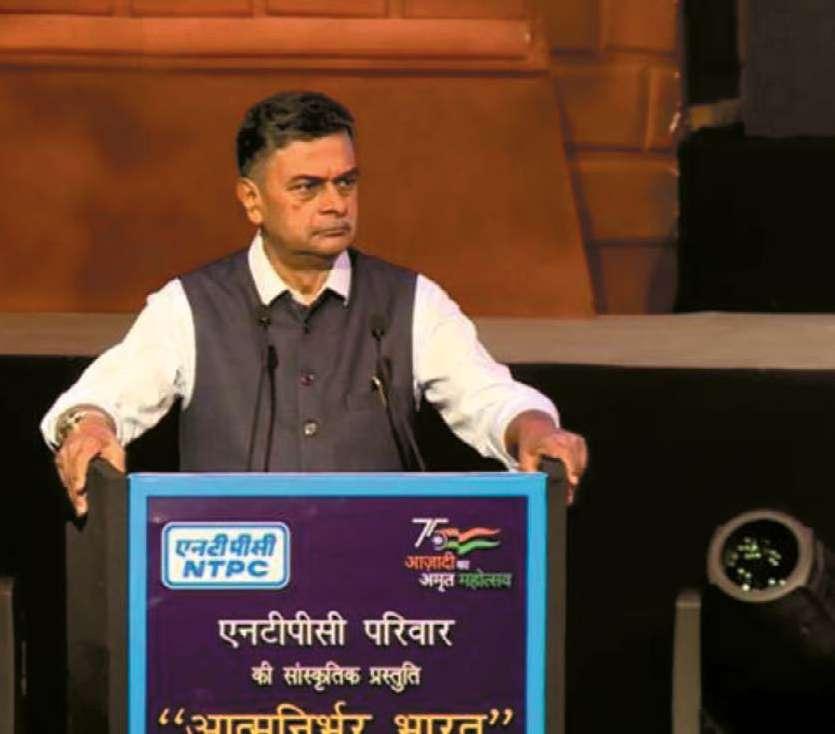
NTPC celebrates Raising Day completing 47 years of brilliance and leadership. Shri R K Singh congratulated NTPC for its commendable journey and its contribution towards making India Atmanirbhar.
NTPC’s performance, work culture and progress has been commendable. We have not let there be any power crisis even in trying times, said Shri R K Singh, Union Minister of Power and New & Renewable Energy congratulating NTPC on its 48th Raising Day function. Shri Singh was speaking on the occasion of NTPC’s Raising Day addressing the gathering
While addressing the gathering consisting of NTPCians from across the country, Shri Gurdeep Singh, CMD, NTPC acknowledged the efforts of every NTPCian and said, “We started our journey in 1975. In these 47 years we have accomplished a successful journey. My thanks to everyone who has contributed to our growth directly or indirectly. “ Stressing on the importance of technology, he said, “We are always aiming towards reliable, uninterrupted, and affordable power. We have automated our processes and integrated digital tools especially during the pandemic.”
including the senior management of NTPC at Siri Fort, New
and other dignitaries along with the employees and their family members. In his address, Shri Singh emphasised that economic growth cannot sustain without energy and stated that demand for energy is growing at a rapid pace and we need to be at par with the pace of growth. Shri Singh also stressed on the importance of critical decision making, attracting bright and young minds and encouraging them to take risk and think out of the box.
www.EQMagPro.com 71 EQ NOVEMBER 2022
Delhi
Shri Krishan Pal, Minister of State of Power and Heavy Industries, Shri Alok Kumar, Secretary, Ministry of Power, and senior officials of Ministry and NTPC were also present during the ceremony. Shri R K Singh presented the Swarn Shakti Awards to NTPC Korba won for the best performance in Productivity, NTPC Barh for Project Management and Safety Award, NTPC Kahalgaon for Safety Award (O&M), NTPC Kaniha for Protection & Improvement of Environment, NTPC Pakri Barwadih and NTPC Chatti Bariatu for Coal Mining, NTPC Simbhu Ki Burj- I for RE project Execution, NTPC Sipat for HR, NTPC Ramagundam for Rajbhasha. NTPC Barh was acknowledged for being the overall champion while NTPC Kaniha emerged as the runners up.
OPINION
A MOUNTAIN, A TOWER, A THERMOS OF MOLTEN
SALT. THESE ARE THE BATTERIES THAT COULD POWER OUR RENEWABLE FUTURE.
Climate change is pushing the power grid to the limit. Energy storage could help. Blackouts are a devastating reality of our climate-changed world. An unprecedented winter storm in 2021 knocked out power for millions of Texans for days, killing hundreds, and this summer Californians managed to barely save their state’s power grid from the brink of collapse during a record-breaking heat wave.
Some blackouts are caused by storms destroying infrastructure like transmission lines and substations — just look at what’s happened in Puerto Rico after Hurricanes Maria and, more recently, Fiona. But many blackouts can also be blamed on how the electric system works. Namely: The goal of the power grid is to deliver electricity to your home as soon as it’s been generated at a power plant. There isn’t a great pool of electricity waiting in reserve for when demand spikes. Experts say that needs to change.
“ Electricity systems are real-time systems,” said Eric Fournier, research director at UCLA’s Institute of the Environment and Sustainability. There’s little room for error.


In the past, there was an easy fix. If grid operators ever needed more power, they’d just burn more fossil fuels, in real time, to meet demand. But that makes climate change worse (electricity generation is responsible for 25 percent of total greenhouse gas emissions in the United States). It’s a vicious cycle: Climate change is what’s pushing our grids to the limit. Switching to clean energy is the obvious solution. But while wind and solar power are efficient, they’re not always available: Solar power turns off at night, and wind turbines can’t generate power on a still day. With renewables, demand can still outpace supply. We need a way to store renewable electricity. That sounds like … a battery. But batteries — at least the kind found in our cellphones and cars — aren’t necessarily the best solution. Lithium-ion batteries, which have become the de facto standard for rechargeable batteries and are used in everything from phones and laptops to electric cars, are expensive to produce and might be better suited for those portable applications than sitting static in storage racks.
The power grid is a massive machine. To make a battery for it, we have to think big — and weird. On this week’s episode of Unexplainable, Vox’s podcast about unanswered questions, we explore what the future batteries of the grid might look like, from the time-tested to the fantastical. There are many ways to bottle lightning. On a very basic level, all batteries work by taking electricity, storing it as a different form of energy, and turning that energy back into electricity (or, to be extremely technical, electric energy) when it’s needed again. Lithium-ion batteries are chemical batteries, which means they store electricity as chemical energy. They’re very efficient; they can generally release upward of 90 percent of the energy put into them. But a battery doesn’t have to be based on chemical energy — there are all kinds of other energy types we can convert that electricity into. Take, for example, pumped hydro. Pumped-storage hydropower, or pumped hydro, is the biggest kind of grid-storage battery currently in operation in the United States. It’s also the oldest; the first pumped hydro facility in the country opened in New Milford, Connecticut, in 1930. The concept behind pumped hydro is pretty straightforward. Sometimes power plants — especially renewable power plants like wind — generate more electricity than we can use, and grid operators end up having to simply dump that energy in a process called “curtailment.”
We need to think about solutions that go beyond conventional lithium-ion batteries, said Dharik Mallapragada, a principal research scientist at the MIT Energy Initiative and co-author of a recent study on the future of energy storage. Money is on everybody’s mind at COP27, the UN climate negotiations currently underway in Egypt, and the world needs affordable solutions that can work for wealthy and poor countries alike. “No single technology is going to make this happen,” Mallapragada said. “We have to think about it as a jigsaw puzzle, where every piece plays its role in the system.”
But if those renewable power facilities were hooked up to pumped hydro, that excess energy could be used to pump water up a hill or mountain and fill a reservoir. That movement uphill raises the water’s potential energy; when the energy is needed, the water is released and sent through a hydroelectric turbine, turning the potential energy back into electricity. Pumped hydro took off in the United States during the 1970s and ’80s when the country saw a boom in nuclear power. Nuclear plants were very good at constantly generating a steady amount of electricity around the clock, Mallapragada said, but there wasn’t an easy way to increase or decrease their output. To be able to respond to fluctuating demand, grid operators built pumped-hydro stations to store the excess energy generated by nuclear power plants during times of low energy use; without pumped hydro, that energy could have gone to waste. (It’s a similar dilemma to the one faced by solar and wind power plants, and recently some pumped-hydro stations have seen their energy sources shift from nuclear energy to renewables.).
It’s a time-tested, efficient solution. So building more pumped-hydro plants could work well for the future of clean energy. But pumped hydro isn’t perfect: It requires specific geographies (like mountains, but any terrain with an elevation difference would work), and building a pumped-hydro station often requires hollowing out rugged landscapes in order to install the pumps and other infrastructure that move water up to the reservoir. That’s an energy-intensive, resource-hungry process. So while pumped hydro could work in some circumstances,
72 EQ NOVEMBER 2022 www.EQMagPro.com
ENERGY STORAGE
especially when existing facilities are being transitioned to renewable energy, it’s only one part of Mallapragada’s jigsaw puzzle of energy storage solutions. One of those pieces, Mallapragada said, could even be taking the principles behind pumped hydro and applying them outside of mountains.
DON’T HAVE A MOUNTAIN? BUILD ONE.
Pumped hydro, at its core, uses the force of gravity to pull water downhill and transform potential energy into electricity. But if there isn’t a mountain in sight to build the plant, engineers can essentially build a mountain of their own. This is called gravity storage: Instead of lifting and dropping water, these “batteries” would lift and lower solid blocks of some heavy material like concrete. The most attention-getting version of this technology comes from a company called Energy Vault. A prototype built in Switzerland involved a multi-armed crane that uses renewable energy to pick up 35-ton concrete blocks, slowly building a concrete tower around itself and storing solar and wind power as potential energy. When energy is needed, the process is reversed: The cranes let the blocks drop, unspooling their cables and powering a motor that generates electricity.
More recent versions of Energy Vault’s storage solution look a bit more staid — the cranes have been replaced with warehouse-esque buildings full of 30-ton bricks riding elevators, which you can see in the video below — but the underlying concept remains the same, using excess renewable energy to power the mechanisms that lift the blocks and dropping them when renewables aren’t available.
The concept isn’t limited to building towers or bricks on elevators. Other companies are exploring using abandoned mine shafts as potential gravity storage sites that can help stabilize the grid during energy spikes. Gravity storage sidesteps the mountain-sized hurdle getting in the way of new pumped-hydro stations, and experts say it should be just as efficient as pumped hydro. Yet it, too, isn’t perfect: Building gravity storage systems is also energy-intensive, and the costs might outweigh the benefits — especially if lithiumion batteries continue to get cheaper. Energy Vault says it’s working to get costs down, particularly in terms of raw materials: the company told WIRED’s Matt Reynolds that their new bricks can be made out of waste materials rather than concrete, reducing the energy load of setting up the system.
GIANT THERMOSES CAN REPURPOSE OLD FOSSIL FUEL TECHNOLOGY
A key problem in the energy transition equation — and currently occupying the minds of the international negotiators at COP27 — is how to pay for it, especially in countries that installed fossil fuel power plants relatively recently. Unlike the United States, which has an aging fossil fuel power plant fleet that is nearing (or, in some cases, well past) retirement age, countries like India and China are home to coal-power plants that have plenty of shelf life left. That’s where thermal energy storage comes in. In a thermal storage system, renewable electricity coming from sources such as wind turbines or solar panels is used to heat up a material that’s particularly good at capturing heat, like a molten salt, and surrounding it with insulation to essentially make a giant thermos. That heat can then be released to create steam or hot air and drive a turbine, just like a coal or nuclear plant today.
Mallapragada’s particularly excited about the potential for thermal storage because it can potentially be used in existing fossil fuel plants by swapping out, say, a coal burner for a thermal storage unit. This solves multiple problems: A large portion of the existing infrastructure can remain in place. Coal plants are already attached to the power grid, which saves on costs, and many of the existing jobs at those power plants will transfer over to a plant powered by stored thermal energy — which means a more equitable energy transition. For developing countries, that could be a game-changer. But — and you might be noticing a theme here — thermal storage has some downsides too. Gravity storage and pumped hydro are very efficient; you can usually recover somewhere in the vicinity of 70 to 85 percent of the energy stored. Thermal storage is much less efficient, so it couldn’t be relied on alone. It’s just another piece slotting into the jigsaw, rather than the complete picture.
RUST CAN BE OUR FRIEND
Every solution discussed so far has been something other than a chemical battery. But even if lithium-ion might not be the best solution for the grid, there are still some chemical batteries worth considering. One of them even uses something that, unlike lithium, is ubiquitous: rust. Rust is usually a nuisance. But a type of battery called an iron-air battery turns that idea on its head. Unlike the rest of the solutions in this story, iron-air batteries are the most similar to what we traditionally think of as batteries: they rely on chemical reactions to store and release energy, just like lithium-ion batteries. But traditional batteries are usually a combination of two or more chemicals inside one battery casing. In iron-air batteries, one of the chemicals is iron — one of the most abundant metals on our planet. The other chemical? The oxygen in the air around it.
Iron rusts. We all know this. But rusting is a chemical reaction, called oxidation, and just like the reaction in a lithium-ion battery it can be reversed. That is to say, we can charge up rusted iron. It’s as if the electricity is being used to polish the iron: Charging the iron keeps the oxidation at bay, but the iron’s natural state is to want to rust. Letting the iron rust essentially pushes the electrons out of the metal, discharging the battery. When it’s time to charge the battery again, the process is reversed.
It all sounds a bit sci-fi, but the idea is quickly becoming a reality; a company called Form Energy recently signed a deal with a Georgia utility to build an iron-air battery that can store 100 hours’ worth of energy. Eventually, the company hopes to build farms of iron-air batteries, each the size of a side-byside washer and dryer, that can scale in size according to the needs of a community.
Mallapragada cautions though, building rust batteries is “easier said than done.” It’s hard to find the sweet spot of a chemical combination that can charge and discharge without losing too much energy along the way. Rusting iron isn’t the most efficient battery in the world — its 40 to 60 percent efficiency range pales in comparison to the ultra-efficient lithium’s 90-plus percent — but it’s much, much cheaper and easier to make. Lithium-ion batteries require all sorts of limited metals; iron is everywhere.
www.EQMagPro.com 73 EQ NOVEMBER 2022
STORAGE
ENERGY
ENERGY STORAGE
FLOATING’S BIG TIME RUSH, RISHI’S WINDS OF CHANGE AND ENERGY
STORAGE STRAIGHT-TALK
The floating wind power industry could surely stake a claim as one of the world’s most innovative industrial sectors, with plenty of evidence to back that up on the Recharge website this week.

First there was an exclusive insight into plans by US start-up T-Omega Wind to “democratize floating wind” with its weather vaning concept that has been engineered “from the water up”. Recharge also brought news of how floating development pioneer Simply Blue plans to bid into Scotland’s Innovation and Targeted Oil & Gas (INTOG) leasing round with a new-look floating platform designed by Marine Power Systems. Still in Scotland, the pioneering Salamander floating wind project, being developed by Orsted with Simply Blue and offshore oil contractor Subsea7, tapped Ocergy for lead-off engineering on foundation design for the 100MW “stepping-stone” project.
Oil & gas decarbonization and its potential to kick-start the floating sector was on the mind of senior BW Offshore executive Jon Harald Kilde in an exclusive opinion article. The week ended with a real-world demonstration of innovation-turnedreality when Spanish floating wind start-up X1 Wind finally moored the part-scale prototype of its PivotBuoy concept off the Canary Islands. Of course, at some stage the floating innovation will need to make the leap to the high levels of industrialization needed to
fulfil gigawatt-scale project orders of the type likely to spurred by the US’ milestone 4.5GW round off California. The auction has sparked a stampede of interest, and a Recharge analysis article this week explored whether higher bid prices – and therefore cost of power – could be an unwelcome unintended consequence of high demand for acreage.
RISHI’S WINDS OF CHANGE
UK politics this week continued to leave the rest of the world in a state of appalled fascination as Rishi Sunak was named Prime Minister – the country’s third in a few months – after the brief, disastrous premiership of Liz Truss. Energy policy was soon centre stage, as renewables developers and investors waited to see how closely he would follow the agenda set out by his doomed predecessor and her controversial secretary of state and “climate dinosaur”, Jacob Rees-Mogg. Rees-Mogg was soon on his way out of the government to be replaced by Grant Shapps, himself a sometime controversial figure because of his use of the business pseudonym ‘Michael Green’ – though whether that moniker will turn out to suit Shapps’ approach to renewables has yet to be seen. Also up in the air is Sunak’s stance on onshore wind, with industry executives telling Recharge they fear the new Prime Minister could row back on a commitment made in the brief Truss era to lift restrictions on new projects in England.
74 EQ NOVEMBER 2022 www.EQMagPro.com
Source: rechargenews
ELECTRIC VEHICLES ARE CREATING A FAST LANE FOR BATTERY ENERGY STORAGE SYSTEMS

The zero-emissions electrical grid of the future will require a lot more renewable energy production. And once that energy is produced, it will need to go somewhere – or go to waste.
In California, the forefront of renewable energy adoption, battery power now makes up 6% of the state’s maximum on-peak electricity capacity, according to Bloomberg. While that figure may seem small, it’s 60 times greater than it was just five years ago – and batteries surpass the production of either wind or nuclear power in the state. This dynamic is poised to repeat elsewhere. For example, Texas already has about 2,300 megawatts of batteries installed in its grid today. And the recent passage of the Inflation Reduction Act is expected to spur the addition of an estimated 2,300 large-scale battery plants to the U.S.’s grid by 2030. Internationally, the story is much the same. From Latin America to Europe to Southeast Asia and beyond, demand for utility-scale battery projects, which today typically provide four to six hours of electricity at maximum draw, is on the rise. In fact, the market is expected to double this year and again in 2023.
“
We’re just on the cusp of what’s going to happen with batteries.” – Tom Cornell, Senior Vice President of Energy Storage Solutions, Mitsubishi Power Americas
This period of intense growth in batteries has been possible due in large part to electric vehicles (EVs). “With every major auto manufacturer in the world supporting lithium batteries, the supply has gone up and the cost has come down,” says Tom Cornell, Senior Vice President of Energy Storage Solutions at Mitsubishi Power Americas and Chairman of Oriden, the renewable development company of Mitsubishi Power. Of all the global lithium currently being produced, 90% is going into electric vehicles. The other 10% goes to storage applications like those Mitsubishi Power has deployed in California, Texas and New York, and will soon deploy in Chile and Ireland. By 2030, however, some analysts expect that ratio to be more like 50/50. “We’re just on the cusp of what’s going to happen with batteries,” says Cornell.
THE GROWTH OF A SYMBIOTIC RELATIONSHIP
With automotive giants Volkswagen, Ford and BMW forecasting that EVs will make up 50% or more of their global sales by 2030, the need for charging infrastructure is likely to grow quickly. So is the need for grid-scale storage solutions, which can extend the life of EV batteries. Once they can only reach 80% of their maximum charge, they can no longer power cars. But they’re still useful elsewhere: Those used EV batteries can store and dispatch power to the grid for another 10 years, creating a healthy supply of carbon-free power. Meanwhile, the growing market for grid-scale batteries has spurred improvements in lithium iron phosphate (LFP) technology. Because these batteries do not use nickel or cobalt, metals which are expensive and difficult to source in environmentally friendly ways, manufacturers like Tesla and Ford have expressed interest in them.
The carmakers aren’t done innovating, either. Solid-state battery technology is poised for a growth period, in part funded by investments from Volkswagen, Ford and BMW. Driven by concerns about access to key materials and technologies that have historically been produced predominantly in China, automakers and other players have also been extending the battery supply chain into the U.S., Europe and other regions. These moves further boost supply and drive down the price curve.
BATTERIES WILL PLAY A KEY ROLE IN THE GRID OF THE FUTURE
With automakers and grid-scale battery energy storage systems building out a larger combined market, batteries’ economics and performance are likely to continue to improve rapidly. Their widespread adoption could change the way we supply power in fundamental ways, according to Cornell. In Texas, Mitsubishi Power’s battery energy storage systems can react to drops in voltage in less than a second – within 240 milliseconds, to be precise. That fast frequency response means the batteries can help stabilize the grid if wind generation drops suddenly. On the other side of the ledger, batteries offer a way to take advantage of excess power generated by solar and wind installations that currently goes unused. And because batteries can be installed almost anywhere, independent of a power plant and most infrastructure, they could potentially change the way we transmit power.
For one thing, the more electric vehicles we put on the road, the more pressure we put on the electrical grid to charge them. “Building out an infrastructure for rapid charging,” says Cornell, “will be much more easily handled by deploying battery banks at charging stations than by upgrading the electrical grid to handle that demand.”
The bottom line is we have to decarbonize our sources of energy. “We’re moving rapidly to do that,” Cornell says. “Keeping up that pace of change is going to mean changing the way we deliver power – and batteries will undoubtedly be a big part of that equation.”
www.EQMagPro.com 75 EQ NOVEMBER 2022 ENERGY STORAGE
forbes
Source:
RATAN TATA-OWNED ELECTRA EV RAISES $25 MN FROM GEF CAPITAL


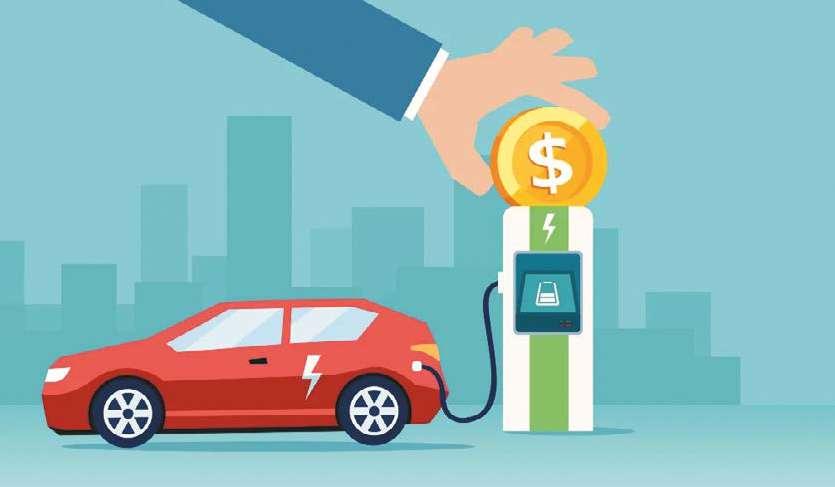
Electra EV will use the fresh funds to expand its product offerings for three-wheelers, fourwheelers, agriculture and other allied segments. The startup, promoted by Ratan Tata, plans to further enhance its design, testing, and prototyping, and expand production capabilities to meet the rising demand. Electra EV, a startup owned and promoted by veteran industrialist Ratan Tata, has raised about $25 Mn from GEF Capital’s South Asia Growth Fund II. With this investment, GEF Capital has acquired a minority stake in the startup which provides powertrain solutions for electric vehicles (EVs).
Electra will use the fresh funds to expand its product offerings in three-wheelers, four-wheelers, agriculture and other allied segments to serve original equipment manufacturers (OEMs) and Tier-1 automotive suppliers. Founded in 2017 by Tata, Electra builds, integrates and supplies EV powertrains systems including battery packs, e-traction systems and integrated electronics, among others, for passenger and commercial EVs. The startup claims to provide solutions and assistance to automotive OEMs right from conceptualisation to prototyping to aftersales support across the country.

Electra builds EV powertrain systems for various use cases and then supplies them to OEMs for integration in electric vehicles. The startup claims to have designed and manufactured powertrains for Tata Motors’ Tata Xpres-T and Tata Ace EV. Electra plans to further enhance its design, testing, and prototyping, and expand production capabilities to meet the rising demand.
The EV ecosystem is currently at a pivotal stage and we believe Electra EV’s differentiated proposition of high-end performance, safety and affordability provides a strong growth opportunity.
We are excited to partner with Electra EV in its next phase of growth and development, said Sridhar Narayan, managing partner at GEF Capital.
This fundraise provides us with both financial wherewithal and a like-minded partner like GEF Capital to help us continuously innovate, acquire new customers in India and overseas, thereby achieving our vision of transforming the global movement towards cleaner fuels, said Samir Yajnik, executive director of Electra.
The development comes at a time when the demand for EVs is on the rise in the country. While the central and state governments have come out with various schemes like FAME-I, FAME-II, and PLI scheme to increase adoption of EVs in the country, a number of startups like Ola Electric and Ather Energy have established themselves as key players in the two-wheeler EV manufacturing space. Besides, a number of startups like Exponent Energy, ElectricPe and CHARGE+ZONE are setting up EV charging infrastructure in the country. Consequently, the sales of EVs have been rising in the country. The number of two-wheeler EV registrations in the country grew for the fifth consecutive month in October, crossing the 75,000 mark. Overall, EV registrations, across segments, rose nearly 23% month-on-month to 1.14 Lakh units.

76 EQ NOVEMBER 2022 www.EQMagPro.com
With this investment, GEF Capital has acquired a minority stake in the startup which provides powertrain solutions for electric vehicles
ELECTRIC VEHICLE
Source: PTI
EV MOBILITY START-UP BATTRE GETS SEED FUNDING FROM AGILITY VENTURES
BattRE was founded in 2017 in Jaipur



Pankaj Sharma to take electric mobility across the country; currently it has a network of 400 plus dealerships in 21 states and 276 towns.

Two-wheeler mobility start-up BattRE has raised an undisclosed amount for its seed fund from a group of investors led by Agility Ventures along with former Tata Motors’ top executive Gajendra Chandel. The funds have been raised to drive the next phase of growth for the start-up that is aiming to reach Rs 1,000 crore revenue by FY25. BattRE was founded in 2017 in Jaipur, Rajasthan by Nischal Choudhary and Pankaj Sharma to take electric mobility across Indian cities. Currently it has a network of 400 plus dealerships in 21 states and 276 towns, across the country. Currently, the start-up offers three products: two low-speed scooters (brands ‘ONE’ and ‘LO:EV’) and a high-speed scooter (STOR:IE, which was launched in July 2022). Two more products are in the pipeline: a high-speed bike (DUNE) and a delivery scooter (Cool:IE).

One of the key features differentiating BattRE scooters is the connected feature enabled through Internet of Things (IoT). Such connected scooters can provide insights to the users and enable operational efficiency. BattRE has also pioneered Lithium Ferro-Phosphate (LFP batteries), a key component of the electric mobility sector.
Our electric two-wheelers (E2W) are riding on our strategic differentiators –deep distribution, competitive pricing with advanced features, said Nishchal Choudhary, Founder and CEO, BattRE. “With our ‘ahead-of-the-curve’ products, we aim to reach every Indian district by 2025. The seed fund will help us plan and execute this goal and enable the next phase of our growth,” he added.
In a similar context, Dhianu Das, Founder, Agility Ventures, said that EVs are the future of mobility and is poised to reach $13.8 billion market size by 2027 while growing at a 100 per cent CAGR. “We are confident that BattRE would dominate the two-wheeler space in that segment with their deep distribution and competitive pricing strategy. We are confident that BattRE will be amongst the top four E2W companies in India by FY 23-24,” said Das.
Incidentally, according to a BNP Paribas report, electric vehicle adoption in the two-wheeler segment in India accelerated in the year 2022. As of 2022, E2W penetration in India stood at 1.9 per cent, hinting at huge opportunities for affordable and reliable scooter producers. Gajendra Chandel, former president of Tata Motors, Chairman of BattRE said, “Automotive is one of the top five, high-growth sectors in India and EVs are leading this amongst the start-Up ecosystem,” said Gajendra Chandel, former president of Tata Motors.

www.EQMagPro.com 77 EQ NOVEMBER 2022
ELECTRIC VEHICLE
Source: PTI
by Nischal Choudhary and
ADB, GREENCELL SIGN $40 MILLION FINANCING FOR SAFER E-BUSES IN INDIA, ESPECIALLY FOR WOMEN COMMUTERS
The financial package comprises $20.5 million loan (in equivalent Indian rupee) from ADB’s ordinary capital resources, ADB’s administration of a $14 million loan from the Clean Technology Fund (CTF), grants worth $325,000 from the CTF and $5.2 million from Goldman Sach’s and Bloomberg’s the Climate Innovation and Development Fund (CIDF). ADB also assisted in mobilizing an additional parallel loan of $20.5 million from the Asian Infrastructure Investment Bank. A defining feature of this project is the CIDF grant which will partially finance the decarbonization of 100 of the 255 e-buses by deploying solar power-plus-battery energy storage systems, resulting in the reduction of about 6,355 tons of carbon dioxide a year. Overall, the project will reduce emissions by 14,780 tons a year.


GEPL is also implementing a diversity and inclusion roadmap to initiate a program to build a stronger pool of women in leadership and technical roles. This project has qualified for a 2x gender financing rating, a challenge launched at the G7 summit in 2018 to encourage gender lens investing among development finance institutions.

Decarbonization of public transport in India is essential for the country to reach its netzero climate commitments, and it’s important to ensure safety and security of women passengers to make travel more inclusive,” said ADB Private Sector Operations Department Director General Suzanne Gaboury. “By providing safe transport for women, these intercity buses will enhance their ability to participate in economic and livelihood opportunities.
India’s public transport needs are expected to grow rapidly as the country urbanizes. In 2020, road transport accounted for 87% of all passenger trips, 18% of total energy consumption, and 11.7% of greenhouse gas emissions. Safety features at project bus depots and e-buses will include cameras, panic buttons, adequate depot lighting, seating arrangements, tracking, and awareness-raising materials. Training programs will be held for bus drivers and cabin hosts on safety protocols focused on women passengers.
Electrifying transportation is a key driver of reducing greenhouse gas emissions in our cities. This funding accelerates our agenda of promoting and investing in clean and sustainable businesses in India to achieve India’s climate objectives and Sustainable Development Goals,” said EverSource Capital Managing Director and CEO Dhanpal Jhaveri. “With GreenCell Express Private Limited (GEPL) offering, we bring to the intercity bus travel segment, electric buses that reinforce safe, seamless travel experience for new age Indian travellers, especially women.”


GEPL is a wholly owned subsidiary of GreenCell Mobility Private Limited (GreenCell), a platform company of Green Growth Equity Fund (GGEF). GGEF is an Indian alternative investment fund in India managed by EverSource Capital with a mandate to mobilize institutional capital into green infrastructure in India.
ADB is committed to achieving a prosperous, inclusive, resilient, and sustainable Asia and the Pacific, while sustaining its efforts to eradicate extreme poverty. Established in 1966, it is owned by 68 members—49 from the region.
Source: adb
78 EQ NOVEMBER 2022 www.EQMagPro.com ELECTRIC VEHICLE
The Asian Development Bank (ADB) signed a $40 million financing package with GreenCell Express Private Limited (GEPL) to develop 255 electric batterypowered buses (e-buses) to serve 5 million people a year on 56 intercity routes in India and enhance the safety of passengers, especially women, through improved security features including panic buttons connected to command controls for immediate response.
MAHINDRA TIES UP WITH THREE EV INFRA PLAYERS FOR CHARGING SOLUTIONS
MAHINDRA TIES UP WITH THREE EV INFRA PLAYERS FOR CHARGING SOLUTIONS

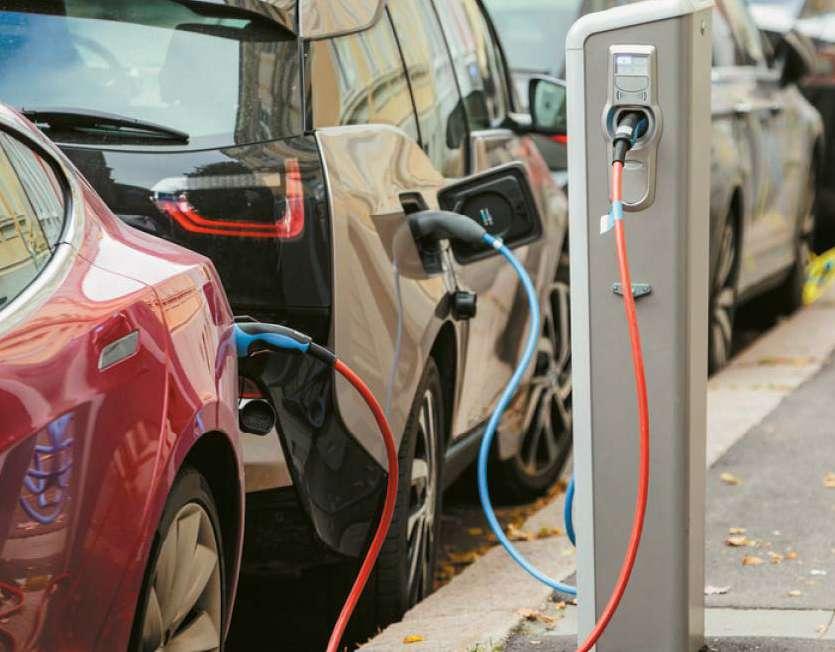
With these partnerships, Mahindra EV users will get seamless access to a robust fast charging infrastructure and emobility solutions spanning across discovery, availability, navigation and transactions, the Mumbai-based automaker said in a statement. Mahindra unveiled its first all-electric SUV — XUV400 — recently. Earlier this year, the company also unveiled a range of new electric vehicles in an event in the UK, which it plans to introduce in India over the next few years.
these
as an

tomers quickly, and it will also help in moving a step forward
We look forward to bringing sustainable, profitable and efficient EV solutions to accelerate the mass adoption of battery electric vehicles in India, and we are delighted to have joined hands with all our partners for our upcoming range of electric vehicles in India, Mahindra & Mahin-
www.EQMagPro.com 79 EQ NOVEMBER 2022
Mahindra & Mahindra said it has tied up with three electric vehicle infrastructure partners — Jio-bp, Statiq, and Charge+Zone — to offer charging solutions for its upcoming range of passenger electric vehicles.
dra president – Automotive Division Veejay Nakra said in a statement.
Source: PTI
ELECTRIC VEHICLE
The company approaches
partnerships
opportunity to offer robust EV infrastructure solutions to cus-
towards achieving India’s net-zero goals, he added.
INDIA HAS THE POTENTIAL TO BECOME A WORLD LEADER IN PRODUCTION OF ELECTRIC VEHICLES: BERKELEY RESEARCH

A study by the Department of Energy’s Lawrence Berkeley National Laboratory (Berkeley Lab) and University of California, Los Angeles (UCLA) revealed that electric trucks would be more affordable to operate than diesel and India could become a world leader in producing electric vehicles.
India has the potential to become the world leader in electric vehicles production, a research by Berkeley National Laboratory and UCLA said, underlining that making the transition from diesel-fuelled trucks to electriccharged will enable the country to meet the goal of net zero greenhouse gas emissions by 2070. India imports 88 per cent of the oil it uses and of the total petroleum consumed by the country’s transport sector, nearly 60 per cent used by freight trucks. A study by the Department of Energy’s Lawrence Berkeley National Laboratory (Berkeley Lab) and University of California, Los Angeles (UCLA) revealed that electric trucks would be more affordable to operate than diesel and India could become a world leader in producing electric vehicles. The transition will also help India reduce its reliance on imported oil, improve the air quality, and meet the goal of net zero greenhouse gas emissions by 2070, the study said.
“
Electric trucks would be instrumental in enhancing India’s energy security and reducing the goods transport cost,” said Nikit Abhyankar, Berkeley Lab research scientist and author of the report “Freight Trucks in India are Primed for Electrification.” Based on India’s current grid emissions, electric trucks would reduce greenhouse gas emissions to nine per cent from 35 per cent per kilometer compared with diesel trucks, the report said.
“
India has embarked on very ambitious electrification policies prior to this,” said Deepak Rajagopal, an author of the report and a faculty scientist at Berkeley Lab and UCLA.
“
We find that the time is now ripe to put targeted policies on trucking,” Rajagopal said in a statement released by Berkeley Lab.
In related research published last year, Berkeley Lab scientists determined how battery-electric trains can deliver environmental justice, cost-savings, and resilience to the US.
80 EQ NOVEMBER 2022 www.EQMagPro.com ELECTRIC VEHICLE
Source: PTI
Tata
The

It launched the new Tiago EV in September.
Tata Motors, which sells electric passenger vehicles like the Nexon EV, Tigor EV and the recentlylaunched Tiago EV, has reached the production milestone of 50,000 EVs. The 50,000th unit — a Nexon EV Max — was rolled out from the company’s Pune facility. The company showcased the concept version of the Curvv EV and the Avinya EV in April. These models will be launched by 2025. By 2026, Tata Motors will have as many as 10 electric models in its arsenal. In FY22, Tata Motors had a share of 87% in the country’s electric passenger vehicle market.

“Celebrating 50,000 EVs in India is a strong testament to how our portfolio is resonating with people across the country. EVs are offering a practical solution to the problems of rising fuel prices and worsening pollution. Customers are now ready to welcome EVs and we are thrilled to witness the transition from early adopters to now EVs becoming a mainstream choice for Indian customers,” he added.
As the pioneers of EVs in the country, the onus of ensuring successful adoption was on us. With a wellcalibrated product mix and strong consumer-facing initiatives, we have been able to address barriers to EV adoption. We created an entire EV ecosystem with Tata Group companies to provide simple, costeffective solutions for our customers, said Shailesh Chandra, managing director, Tata Motors Passenger Vehicles and Tata Passenger Electric Mobility.
Tata Motors launched the new Tiago EV in September. The company garnered over 10,000 bookings on October 10 alone for the new electric model, following which the introductory price of the vehicle was extended for another 10,000 customers. The Tiago EV has two battery pack options — 19.2kWh and 24kWh. As per the Modified Indian Driving Cycle (MIDC), the new electric model has an estimated range of 250km with the 19.2kWh battery and a certified range of 315km with the more powerful 24kWh battery.

www.EQMagPro.com 81 EQ NOVEMBER 2022
Motors sells electric models like the Nexon EV, Tigor EV and Tiago EV.
company showcased the concept version of the Curvv EV and the Avinya EV in April.
Source: PTI
50000 ELECTRIC VEHICLE
ELECTRIC VEHICLE
TATA MOTORS ACHIEVES
PRODUCTION MILESTONE
UNION MINISTER OF POWER & NEW AND RENEWABLE ENERGY LAUNCHES THE GREEN ENERGY OPEN ACCESS PORTAL

The move is aimed at ensuring affordable, reliable, sustainable, and green energy for all...
1. Green Energy open Access is allowed to any consumer with load limit reduced from 1000 kW to 100 kW
2. The portal will allow consumers to access green power easily through transparent, simplified, uniform and streamlined procedure.
3. Consumers would benefit from Access to Green Power. Approval for Green Energy Open Access which will be granted to a Consumer in a time bound manner within15 days.
In continuation of several initiatives to promote clean and green energy by Government of India, the Union Minister of Power and New & Renewable Energy, Shri R K Singh launched the Green Energy Open Access Portal today through Video Conferencing. The Minister of State for Power, Shri Krishan Pal, also graced the occasion. Secretary (Power), Chairperson, CEA and CMD, POSOCO along with other senior officers were also present on the occasion. About 500 participants from the States, Regulatory Commissions, RE developers and other stakeholders joined the event. Any consumer with a connected load of 100 kW or above can get Renewable Energy through open access from any Renewable Energy generating plant set up by himself; or by any developer. The open access has to be granted within 15 days. The application for open access can be made on this portal.
The portal can be accessed at https://greenopenaccess.in/ for processing of applications related to green energy open access by the stakeholders including open access participants, traders, Power Exchanges, National / Regional / State Load Despatch Centres, Central/State transmission utilities. The portal provides a transparent, simplified, uniform and streamlined procedure for granting open access to green energy that will be key to facilitating deepening of electricity markets and enabling integration of Renewable Energy (RE) resources into the grid. Ministry of Power notified the Electricity (Promoting Renewable Energy through Green Energy Open Access) Rules, 2022 on 06th June 2022. These rules aim at promotion of generation, purchase and consumption of green energy including the energy from wasteto-energy plants.
Union Minister Shri R.K.Singh, speaking on the occasion mentioned the importance of transition to clean energy. He mentioned that India is contributing only 3.5% to the global emission despite having about 17% of world population and India is leading the clean energy transition globally and has the fastest growth of RE capacity addition. Ministry of Power has taken a number of initiative in this regard and many more are in advanced stages. He emphasised the importance of ease of implementation in reform process. Minster of State for Power, Shri Krishan Pal mentioned that the objective of the Green Open Access rules is to provide access to green energy generation, sale & purchase and consumption for RPO fulfilment. He mentioned that these rules will benefit the small consumers mostly and would remove bottlenecks in the administration of open access for renewable energy.
Shri Alok Kumar, Secretary, Ministry of Power, mentioned the need of energy security with green and clean energy resources in the future. India is committed to meeting the NDC targets of 50% installed capacity from non-fossil fuel sources and is on the verge of ushering in a mass revolution in the green energy transition. The Green Energy Open Access rules support India’s vision of transition to clean energy with participation of all generators, DISCOMs, and other stakeholders. He mentioned about various reforms and actions being taken such as integrated transmission planning for renewables integration, carbon market, streamlining and harmonised captive consumption and banking for renewable energy.
The Nodal agencies shall post progress reports related to green energy open access to stakeholders through the portal. The approval for Green Energy Open Access will be granted in 15 days or else it will be deemed to have been granted, subject to the fulfilment of technical requirements through the portal. The move is aimed at ensuring affordable, reliable, sustainable, and green energy for all. The consumers can now get access to RE power easily.
82 EQ NOVEMBER 2022 www.EQMagPro.com
EXCLUSIVE
Source : pib
LONG-DURATION ENERGY STORAGE TO GET $350M BOOST FROM DEPT. OF ENERGY
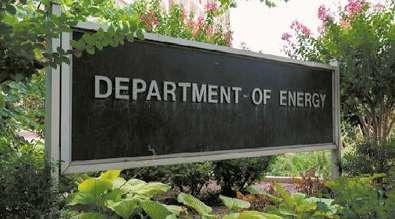
Companies designing long-term storage for clean energy have struggled to break into the power sector despite years of trying. Now, an unprecedented investment from the Department of Energy could help them finally succeed. The Biden administration opened up $350 million in funding for “demonstration projects capable of delivering electricity for 10 to 24 hours or longer,” referring to the emerging field of long-duration energy storage. This suite of technologies can take cheap wind and solar generation and make it available for the many hours when renewables aren’t pumping electricity onto the grid. The pairing of long-duration storage with renewable power is seen as vital to maintaining a reliable grid while minimizing carbon emissions. But to help decarbonize the grid, long-duration technologies need to radically reduce their cost compared to the lithium-ion batteries that dominate the field today (the DOE wants to see grid storage costs fall 90 percent from 2020 to 2030). And the new types of storage need to establish a track record of actually working in the field so customers will want to invest in them.
That’s where the DOE’s new funding comes in, as called for in the Bipartisan Infrastructure Law. It will cover up to half the cost of construction for 11 different projects. The deadline to submit an application is not until March 3, 2023, so it will be a little while before the awards are announced and construction can commence. In addition to meeting technical criteria, applicants need to make the case that they can fulfill various policy requirements, such as high labor standards and the directive that 40 percent of the benefits from federal investment go to disadvantaged communities. If this call had gone out a decade ago, it might have been hard to find 11 applicants capable of delivering on the challenge. But in the last few years, venture investors and incumbent energy players have heaped cash on long-duration startups, and several leaders in the sector have built out manufacturing capabilities to deliver on their early contracts.
Here’s just a small sampling of companies making headlines in this field:
Form Energy has yet to build a grid storage plant with its proprietary iron air design, but it just raised another $450 million and has begun site preparation for its market-entry project in Minnesota.
ESS runs a real working factory outside Portland, Oregon, churning out iron flow batteries for paying customers, including the municipal utility in Sacramento.
Italian startup Energy
by pressurizing and depressurizing carbon dioxide gas. It built a demonstration plant in Sardinia, Italy and is working on a full-scale power plant for late 2023 or 2024.
Hydrostor stores energy by compressing air into underground caverns. It raised $250 million from the likes of Goldman Sachs early this year and is developing massive projects in California and Australia to help absorb the soaring renewable generation.
These companies and their competitors confront a dilemma: They’re convinced that long-duration storage will soon be incredibly valuable to a low-carbon grid, but they need to find places to sell these products now. And power markets aren’t particularly good at valuing power plants with operational profiles that have never been seen before. California is getting around the market-design problem by simply decreeing that utilities in the state must purchase a certain amount of long-duration storage by 2026. But when a group of local power providers handed out the state’s first competitive contract for this type of power plant, it chose good old lithium-ion batteries. All the exciting new technologies had to wait for another chance to show off their stuff. In the habitually cautious utility space, track records count. No utility wants to bet its grid reliability on some new gadget only to see it fail to reach completion or fall apart at a crucial moment. And financiers hesitate to fund projects when it’s hard to model what their returns will look like. DOE funding for half the construction cost will get projects running and showing off what they’re capable of, potentially speeding up the pace of market acceptance. Some of these may go nowhere. The Japanese government subsidized half the cost of a Sumitomo vanadium redox flow battery outside of San Diego, which came online in 2017. Years later, utility San Diego Gas & Electric has yet to order a second round of the product, nor has any other U.S. utility.
DOE will be looking for projects that, with a little help from Uncle Sam, can gain real traction in the marketplace. The department has a better shot at finding some now than ever before.
www.EQMagPro.com 83 EQ NOVEMBER 2022
Dome stores energy
EXCLUSIVE
Source: canarymedia
Some say it’s the key to unlocking a decarbonized grid. Will a new pot of federal funding be enough to push long-duration storage into the mainstream?

84 EQ NOVEMBER 2022 ADVERTISERS INDEX SUBSCRIBE Subscribe “EQ International” at www.EQMagPro.com or fill your complete address and Email to :admin@gmail.com or Call +91-7692973898 Yes! I would like to Subscribe to EQ International Magazine For 1 Issue: o Indian citizens Rs. 200 o International $ 25 / € 20 For 1 Year (12 issues): o Indian citizens Rs. 2400 o International $ 300 / € 240 Please Mail the coupon to: Name: Job Title: Department: Company: Description of the Company: Adress: City/State/Zip Code: Country: Phone: Fax: E-Mail. Web site: PAYMENT 1.- My Cheque/DD in favour of “FirstSource Energy India Private Limited” for Rs…………………………………………………………………… Drawn on………………………………………is enclosed herewith. Date/Signature: 2.- I will pay by Credit Card Type: .......................................................................... Name on Card: Number: Security Code: Expiration Date: Mail this coup on to: First Source Energy India Pvt. Ltd. Subscription Department. 95 C, Sampat Farms, Bicholi Mardana Distt-Indore 452016 Tel. + 91 96441 22268 " ADANI.............................................................FRONT GATEFOLD 02 ECE INDIA.......................................................................................23 ENERMAN.......................................................................................19 FOX-ESS.........................................................................................15 GAUTAM SOLAR.......................................................FRONT COVER GOLDI SOLAR................................................................................17 GROWATT......................................................FRONT GATEFOLD 01 INSOLATION ENERGY..................................................................21 JA SOLAR...............................................................POP UP FORNT RENEW X................................................................ POP UP BACK RISEN..............................................................................................13 SAATVIK.........................................................................................27 SOFAR SOLAR..................................................INSIDE FRONT RHS SOLEX...........................................................................BACK COVER TBEA................................................................INSIDE BACK COVER WAAREE.............................................................INSIDE FRONT LHS
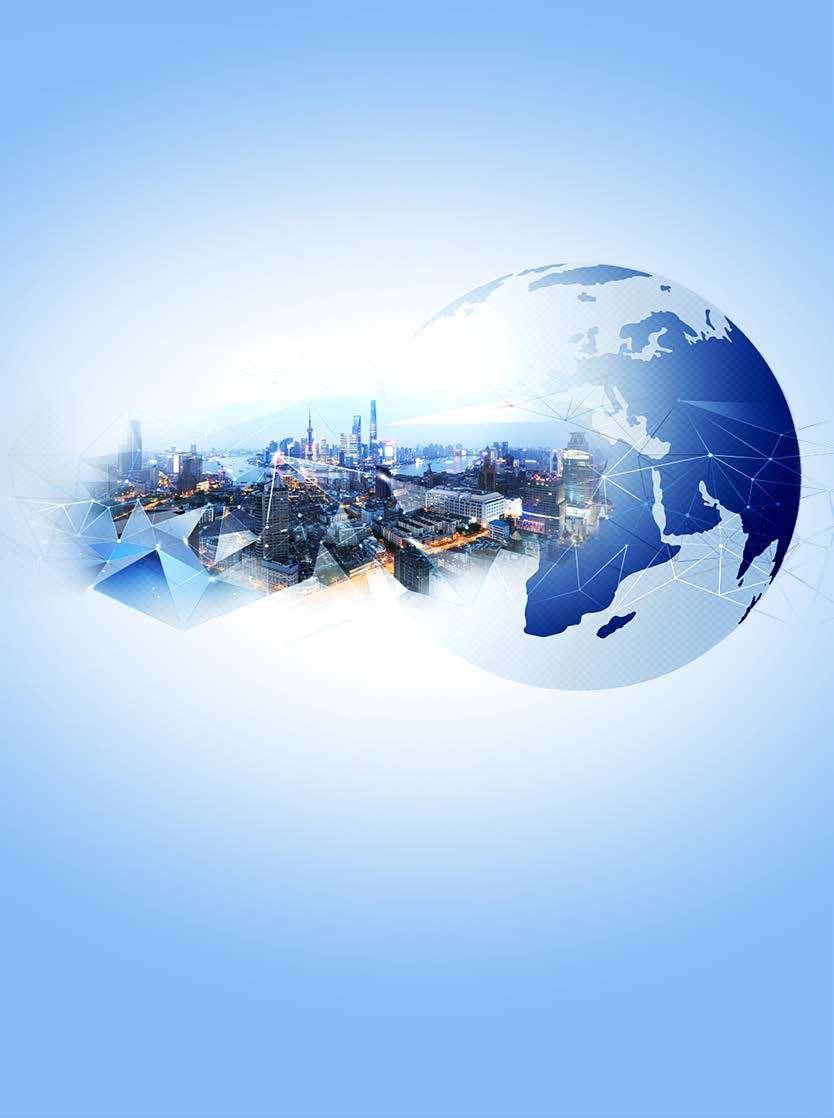




1 8 0 0 5 7 2 8 7 8 7 + 9 1 2 6 1 3 5 5 9 9 9 9 i n f o @ s o l e x . i n R.N.I. NO. MPBIL/2013/50966 | POSTAL REGD. NO. MP/IDC/1435/2022-2024































 SALES & MARKETING MUKUL HARODE sales@EQmag.net
SALES & MARKETING MUKUL HARODE sales@EQmag.net



















































































 Source: mckinsey
Source: mckinsey

























































































